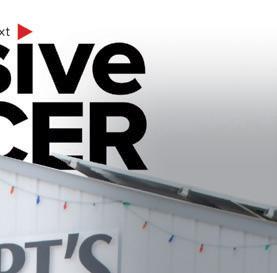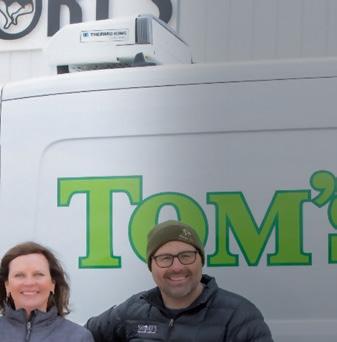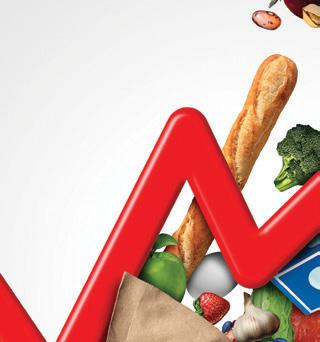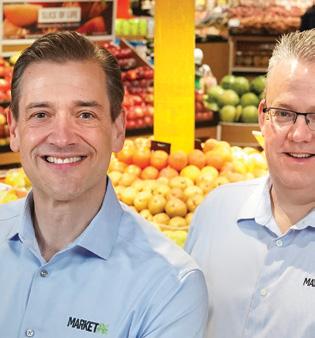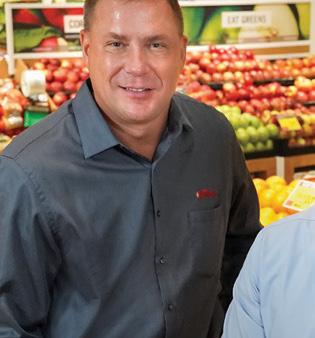ON THE GROW Super Regionals focus on expansion
BEYOND CIGARETTES
Tobacco category can play key role at grocery
ENGAGING WITH YOUTH
Retail media could make the difference


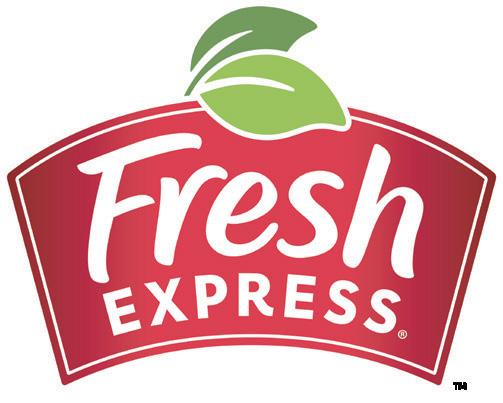




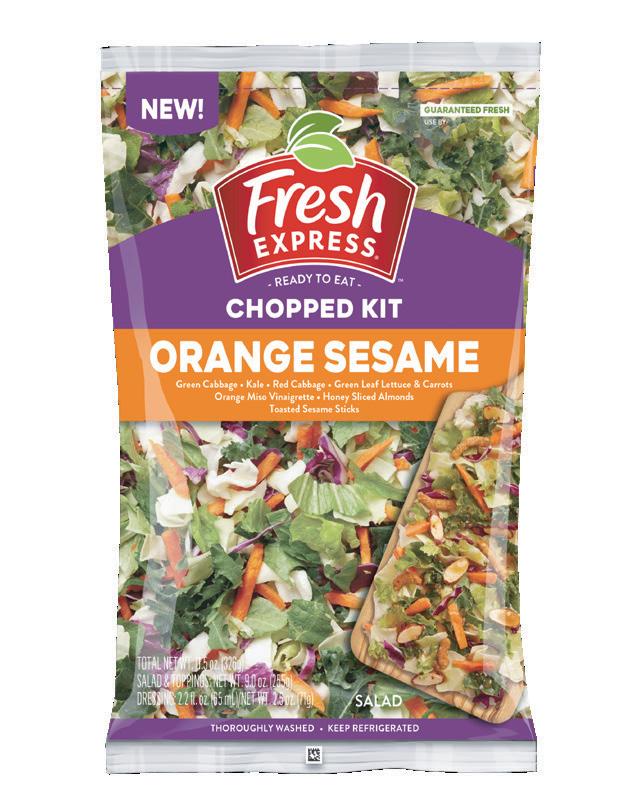
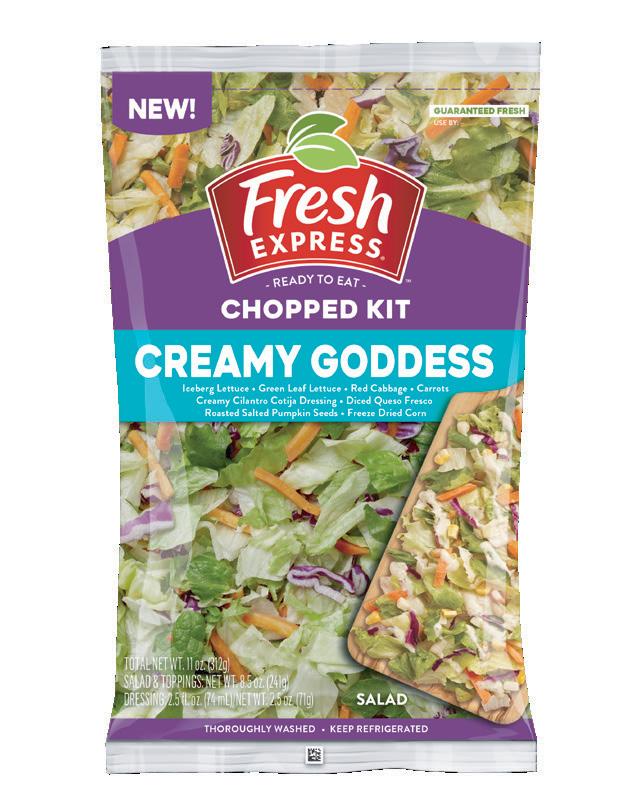
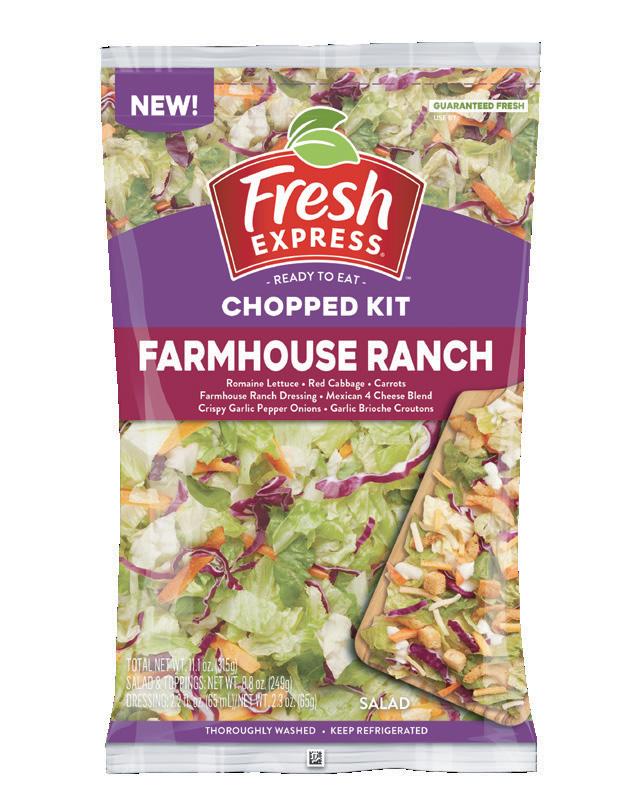




ON THE GROW Super Regionals focus on expansion
BEYOND CIGARETTES
Tobacco category can play key role at grocery
ENGAGING WITH YOUTH
Retail media could make the difference













EnsembleIQ is the premier resource of actionable insights and connections powering business growth throughout the path to purchase. We help retail, technology, consumer goods, healthcare and hospitality professionals make informed decisions and gain a competitive advantage.
EnsembleIQ delivers the most trusted business intelligence from leading industry experts, creative marketing solutions and impactful event experiences that connect best-in-class suppliers and service providers with our vibrant business-building communities.










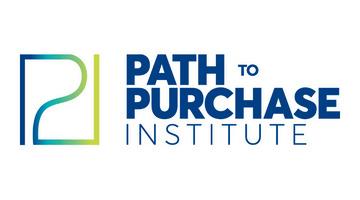

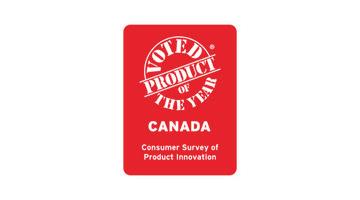








Volume 104 Issue 9

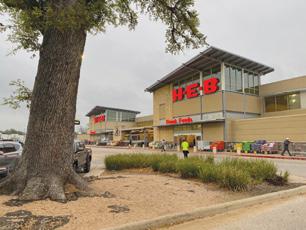
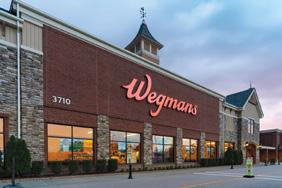

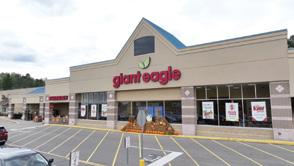
52 FEATURE Good to Grow
The five retailers chosen as Super Regionals are making the most of their opportunities for expansion.
61 RESEARCH
Retail Intelligence Report
PG and Placer.ai present a data-driven deep dive into consumer trends and operational imperatives.
66 FEATURE
How Retail Media Can Help Grocers Connect With Gen Z, Millennials
Research shows that the in-store environment might be an ideal touchpoint to engage with younger generations.
68 NONFOODS More Than Smoke
Tobacco products can still play a key role at grocery retail.
72 FRESH FOOD
Cheese Aims to Please
Multicultural offerings, seasonal selections and plant-based innovation are category highlights.


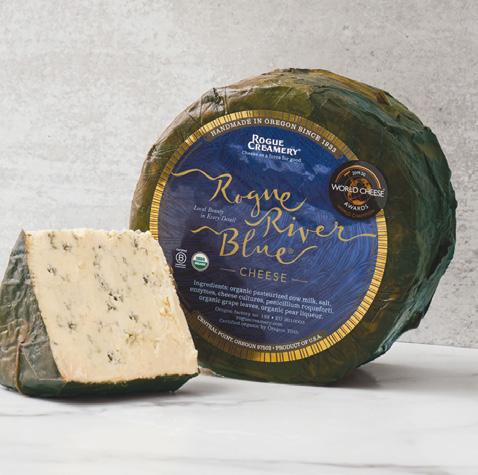
8550 W. Bryn Mawr Ave. Ste. 225, Chicago, IL 60631 Phone: 773-992-4450 Fax: 773-992-4455 www.ensembleiq.com
BRAND MANAGEMENT
SENIOR VICE PRESIDENT, GROUP BRAND DIRECTOR Eric Savitch esavitch@ensembleiq.com
EDITORIAL
EDITORIAL DIRECTOR & ASSOCIATE PUBLISHER Gina Acosta gacosta@ensembleiq.com
MANAGING EDITOR Bridget Goldschmidt bgoldschmidt@ensembleiq.com
DIGITAL EDITOR Marian Zboraj mzboraj@ensembleiq.com
MULTIMEDIA EDITOR Emily Crowe ecrowe@ensembleiq.com
CONTRIBUTING EDITORS Karen Appold, Mike Duff, Debby Garbato and Barbara Sax
ADVERTISING SALES & BUSINESS
ASSOCIATE PUBLISHER, REGIONAL SALES MANAGER Tammy Rokowski (INTERNATIONAL, SOUTHWEST, MI) 248-514-9500 trokowski@ensembleiq.com
REGIONAL SALES MANAGER Theresa Kossack (MIDWEST, GA, FL) 214-226-6468 tkossack@ensembleiq.com
SENIOR ACCOUNT EXECUTIVE Johanna Lupardus (CT, DE, MA, ME, RI, SC, TN, NH, VT, MD, VA, KY) 330-990-4635 jlupardus@ensembleiq.com
PROJECT MANAGEMENT/PRODUCTION/ART
PRINT DESIGNER Catalina Carrasco cgonzalezcarrasco@ensembleiq.com
ADVERTISING/PRODUCTION MANAGER Maria del Mar Rubio mrubio@ensembleiq.com
SENIOR DIRECTOR OF MARKETING Nicola Tidbury ntidbury@ensembleiq.com
SUBSCRIPTION SERVICES
LIST RENTAL mbriganti@anteriad.com
SUBSCRIPTION QUESTIONS contact@progressivegrocer.com
CORPORATE OFFICERS
CHIEF EXECUTIVE OFFICER Jennifer Litterick
CHIEF FINANCIAL OFFICER Jane Volland
CHIEF OPERATING OFFICER Derek Estey
CHIEF PEOPLE OFFICER Ann Jadown
PROGRESSIVE GROCER (ISSN 0033-0787, USPS 920-600) is published monthly, except for July/August and November/December, which are double issues, by EnsembleIQ, 8550 W. Bryn Mawr Ave. Ste. 225, Chicago, IL 60631. Single copy price $18.20, except selected special issues. Foreign single copy price $21.80, except selected special issues. Subscription: $134 a year; $246 for a two year supscription; Canada/Mexico $182 for a one year supscription; $249.90 for a two year supscription (Canada Post Publications Mail Agreement No. 40031729. Foreign $182 a one year supscription; $249.90 for a two year supscription (call for air mail rates). Digital Subscription: $78 one year supscription; $144 two year supscription. Periodicals postage paid at Chicago, IL 60631 and additional mailing of ces. Printed in USA. POSTMASTER: Send all address changes to brand, 8550 W. Bryn Mawr Ave. Ste. 225, Chicago, IL 60631. Copyright ©2024 EnsembleIQ All rights reserved, including the rights to reproduce in whole or in part. All letters to the editors of this magazine will be treated as having been submitted for publication. The magazine reserves the right to edit and abridge them. The publication is available in microform from University Micro lms International, 300 North Zeeb Road, Ann Arbor, MI 48106. The contents of this publication may not be reproduced in whole or in part without the consent of the publisher. The publisher is not responsible for product claims and representations.
By Gina Acosta
THE COMPANY’S CEO GIVES SAGE ADVICE ON LISTENING, LONGEVITY AND LEADERSHIP.
Every once in a while, you sit across the table from a CEO and realize you’re not really talking about grocery. You’re talking about something bigger: values, stewardship and what it means to lead people, not just a business.
That’s how I felt during my conversation last month with Kevin Murphy, CEO of Publix Super Markets. I was in Lakeland, Fla., to interview Murphy and several other Publix leaders for this month’s cover story marking the retailer’s 95th anniversary. But our convo felt more like a masterclass in empathy and humanity than an interview.
Murphy is the kind of leader who de ects credit, keeps his voice low and still talks about bagging groceries at his rst Publix store as a teenager. He measures his legacy not in pro ts, but in how many people he has helped grow.
Here are the top ve takeaways from our conversation:
Murphy never once used the words “innovation” or “transformation.” Instead, he talked about people. “We’re in the people business; we just happen to sell groceries,” he told me. That simple line should reframe every conversation about technology, AI and automation in this industry. The lesson: You can modernize without losing your humanity.
Publix’s employee ownership model has been copied on paper, but never in spirit. Every associate has the opportunity to own shares of the company — and, more important, shares in its purpose. Murphy calls it “a winning recipe.”
He added: “When you own something, you care about it differently. People will go above and beyond for something they own.”
Imagine if every retailer built that kind of

Gina Acosta Editorial Director and Associate Publiser gacosta@ensembleiq.com
emotional equity — not just nancial equity — into their culture.
Murphy described his job as “chasing grand opening every day.” This is the opposite of complacency — a reminder that perfection is temporary, but discipline is permanent.
Anyone can look great on opening day. The hard part is looking great on day 3,456. That philosophy explains why Publix stores feel as meticulously cared for as they did 20 years ago. Consistency, Murphy said, is the hardest thing to achieve in retail and the easiest thing for a shopper to notice when it slips.
I left Lakeland thinking about how deliberately Publix protects its culture. The company literally manufactures it — in its bakeries, dairies and fresh kitchens — by controlling quality and process down to the inch.
But culture is also protected through people. “You can’t buy culture,” Murphy told me. “You have to build it.”
5. Leadership Is About the Next Generation, Not Your Own
Murphy carries Publix’s history with a quiet weight. He talks about “protecting this company for the next generation” the way some people talk about protecting a family heirloom.
“Every generation of Publix leaders has protected this company for the next one,” he said. “That’s my job now: to make sure the next generation inherits a company stronger than the one I did.”
That’s not a sound bite; that’s a philosophy of service. And it’s a reminder that true leadership has very little to do with titles and everything to do with stewardship.
As I wrapped up my visit, I found myself thinking less about grocery and more about grace. About the quiet excellence of people who still believe consistency, kindness and ownership are the real differentiators.
In an industry that often celebrates the loudest disruptors, Publix believes that steadiness can be bold.


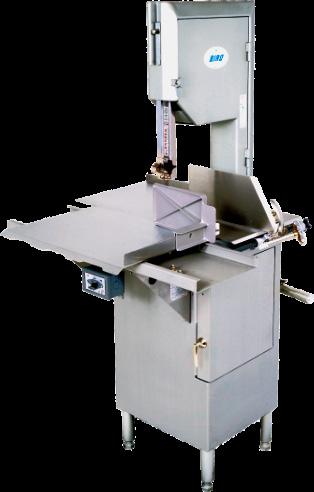










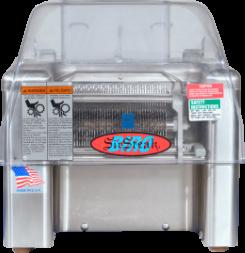



7
National Pearl Harbor Remembrance Day. Think of those who perished when WWII rst arrived on our shores.
1
Eat a Red Apple Day. Direct those who celebrate to your enticing produce display.
2
3
Bingo’s Birthday Month
National Drunk and Drugged Driving Prevention Month
National Egg Nog Month
National Fruitcake Month
4
5
National Giving Day
National Tie Month
National Write a Business Plan Month
Operation Santa Paws
6
14
The Jewish festival of Hanukkah begins at sundown, running through sundown on Dec. 22.


21 Winter Solstice. Time to embrace the dark side.

28
National Call a Friend Day. Why not send a gift basket or owers from your store(s) as well?


Safety Razor Day. Encourage cleanshaven shoppers – or those who wish to be – to mark the occasion by visiting your personal care aisle.
Candle Day. Poll your customers to nd out their fave scents.

8
National Blue Collar Day. Pay tribute to all of your hard-working associates and colleagues who engage in manual labor.
9
Lost and Found Day. Make sure you have a procedure to safeguard any items accidently left behind by shoppers or employees.

15
National Lemon Cupcake Day. Let shoppers know they’re on sale in the bakery department.

22
On Forefathers’ Day, let’s not forget our foremothers and their remarkable contributions to this country.
16
Las Posadas. Sponsor a local procession reenacting the biblical story of Mary and Joseph’s journey to Bethlehem, a seasonal tradition in Latin America.
23
National Roots Day. Ask associates to share family recipes as a way to celebrate their various heritages.

29
International Cello Day. Crank up some Yo-Yo Ma to ood the aisles with beautiful music.
30
Sodium Bicarbonate Day. Whether for baking, cleaning, deodorizing or relieving stomach upset, this is quite a versatile compound.


10
Birthday of Emily Dickinson (1830). The celebrated New England poet was also an accomplished baker.

17
Festival of Winter Walks. Publish some suggested routes for families to enjoy together.

24
Christmas Eve. Be ready to assist those infamous last-minute shoppers.

31
New Year’s Eve. Resolve to do even more to strengthen your connection with shoppers and associates.

Extraordinary Work Team Recognition Day. Go, team!

11
National App Day. This is a good time to go over yours for any bugs, or to start the process of rolling one out.

18
Flake Appreciation Day. Hold a contest inviting young artists to draw their best snow scenes to decorate the windows of your store(s).
National Blue Jeans Day. This ubiquitous wardrobe choice among shoppers and associates alike has been around since the 1870s.
St. Nicholas Day. In some cultures, children leave out their shoes the night before so the saint can leave small gifts in them.
12
Gingerbread Decorating Day. Offer products and tips to get families started on a tasty holiday project.

19
National Emo Day. Hey, if that’s your jam.
13
National Cream Cheese Frosting Day. Yum!

25

Christmas Day. Act as a not-so-secret Santa to reward your dedicated employees with small gifts.


26
Kwanzaa. Light a kinara (candelabra) to mark this modern pan-African holiday that runs through Jan. 1.

20 Games Day. Suggest snacks and easy meals to accompany marathon sessions of Monopoly or Scrabble.

27
International Day of Epidemic Preparedness. It’s always wise to be ready for the next health emergency.
It’s the holiday season... and once again, consumers will be redeeming Holiday Gift Checks at grocery stores and supermarkets across the country! The Holiday Gift Check Program brings customers into your stores and helps you sell turkeys or hams! When businesses in your area give Holiday Gift Checks to their employees or clients, you win with an increase in turkey and ham sales and a positive impact on your bottom line




Deposit the Holiday Gift Checks, along with any other business or payroll checks. Check security features include microprint, watermarks and a security screen.





or hams.






































































































































KEY COLLABORATORS HAVE HELPED THE BRAND STRATEGICALLY POSITION ITSELF IN A CROWDED MARKET.
By Emily Crowe
The functional nutrition and energy space might be a crowded one, but newcomer Bloom is helping consumers take ownership of their health with its high-quality supplements ranging from greens and superfoods drink mixes and gummies to ready-to-drink sparkling energy beverages. The growing company recently partnered with Winston-Salem, N.C.-based data-driven technology company Inmar Intelligence and key retailers on a marketing activation aimed at reaching both past purchasers and new buyers during receptive times tied to health, inspiration and recharging.
For the activation, Bloom’s creative team emphasized its clean, sparkling energy positioning and established the brand as a better-for-you challenger in the category. By working with key retail partners and using Inmar’s targeting and measurement, Bloom was able to drive meaningful retail traf c, deliver measurable results and better align itself with everyday wellness routines.
Nicolette Passini, shopper marketing manager at Austin, Texasbased Nutrabolt, spoke with Progressive Grocer about how the company made it happen.
Progressive Grocer: It’s exciting to launch a new brand, especially a rst-of-its-kind wellness-based sparkling energy drink. What has that experience been like for you and the team? How did that unique perspective shape the way you approached this campaign?
Nicolette Passini: It’s been incredibly exciting to launch Bloom’s rst sparkling energy drink. For our team, the process has been about more than just entering the energy category – it’s been about reshaping it. We know today’s consumers want more than a quick boost of energy; they want clean energy that ts their wellness lifestyle. That perspective shaped the campaign. We designed activations and messaging to highlight Bloom as a lifestyle- rst energy brand, one that energizes without compromising health values.
PG: Bloom’s recent campaign emphasized Health Inspiration, Power Up and Purchase-Based Moments. How does this approach re ect broader shifts in how consumers are rede ning their energy needs?

NP: Consumers today are looking for energy that’s more intentional and more aligned with their overall lifestyle goals. They’re not reaching for a boost when they’re tired – they want products that help them feel balanced, focused and motivated throughout their day. By building our campaign around Health Inspiration, Power Up and Purchase-Based Moments, we were able to connect directly with those needs. It re ects a larger shift away from traditional, high-intensity energy use cases and more toward functional energy that supports wellness, productivity and sustainable routines.
PG: Bloom’s most recent campaign, in partnership with Inmar Intelligence, showed success in driving brand awareness as well as in-store traf c and engagement. How do results like these help Bloom demonstrate its unique value to both consumers and retail partners?
NP: The Inmar campaign results – increasing awareness, driving store traf c and sparking engagement – prove that Bloom can stand out while adding value at retail. Bloom can bring incremental traf c and new shoppers into the category. For consumers, it validates that our wellness- rst position resonates, which strengthens our story with partners who want products that not only sell, but also build long-term loyalty. Those results reinforce Bloom’s role as a differentiated energy brand that adds value across the entire ecosystem, including consumers, retailers and the category overall.
PG: Campaign insights showed that Bloom resonated the most during weekday afternoons and evenings, when shoppers were focused on routines and wellness goals. How does this align with Bloom’s positioning as a wellness lifestyle- rst energy brand, compared to more traditional energy drink competitors?
NP: What’s powerful about that is that it gives our retail partners a clear roadmap on how to position the brand in-store. Those are peak shopping windows when consumers are thinking about their wellness routines, and Bloom’s wellness- rst positioning allows retailers to capture that demand in a way traditional energy drinks don’t. It’s not just about selling cans – it’s about helping retailers build a differentiated energy set that speaks to evolving consumer needs, ultimately driving incremental trips and higher basket value.
campaign. How do these different shopping patterns connect to Bloom’s strategy for building both trial and loyalty?
NP: It shows that Bloom is hitting two critical stages of the shopper journey: Single cans are often the entry point to try something new, while multipacks signal that they’ve not only tried the product, but made Bloom part of their lifestyle. Our strategy is built on making it easy for shoppers to discover us in quick trips, then rewarding them with formats that support repeat purchase and long-term loyalty.
PG: Functional beverages are increasingly blurring the lines between energy, wellness and lifestyle. How does Bloom’s success in this campaign underscore its ability to carve out a distinctive space among both emerging brands and established players?
NP: Emerging brands may offer wellness or niche energy products, and established brands often focus on traditional, high-caffeine options. Bloom sits at the intersection of energy, wellness and lifestyle, delivering clean, functional energy that supports everyday routines. The campaign results show that this unique positioning not only attracts attention, but also drives trial and engagement, making Bloom a differentiated choice in a crowded market.
“These campaigns are essential for turning interest into trial and trial into loyalty. By pairing Moments-powered media with in-store o ers, we are meeting consumers at the exact point where intent turns into action.”
—Nicolette Passini, Shopper Marketing Manager, Nutrabolt
PG: Bloom also works with Inmar to amplify in-store offers coupled with Moments-powered media. What role do these campaigns play in supporting trial, loyalty and overall retail performance?
NP: These campaigns are essential for turning interest into trial and trial into loyalty. By pairing Moments-powered media with in-store offers, we are meeting consumers at the exact point where intent turns into action. That not only drives trial by lowering the barrier to rst purchase, but it also builds loyalty by reinforcing Bloom as a brand that consistently shows up in their routines. For retailers, it means stronger conversion, repeat traf c and a healthier performance story across the category.
PG: Data indicated that both quick trips for single cans and longer store visits for multipacks were in uenced by the

PG: One of the learnings from Inmar’s post-campaign reporting was that brand lift and ad unit engagement was high in the tness-focused creative unit. How does that in uence the way you optimize and reach consumers moving forward?
NP: The high engagement with tness-focused creative reinforces that Bloom resonates most when we connect directly to consumers’ wellness and active lifestyles. Moving forward, it guides us to prioritize content and placements that speak to those Moments, whether it’s pre- or post-workout, midday routines, or tness-related inspiration. This approach ensures our campaigns drive meaningful connections with the right consumers at the right time.
Scan the QR code to get in touch with Inmar Intelligence about driving trial and loyalty in the beverage category.
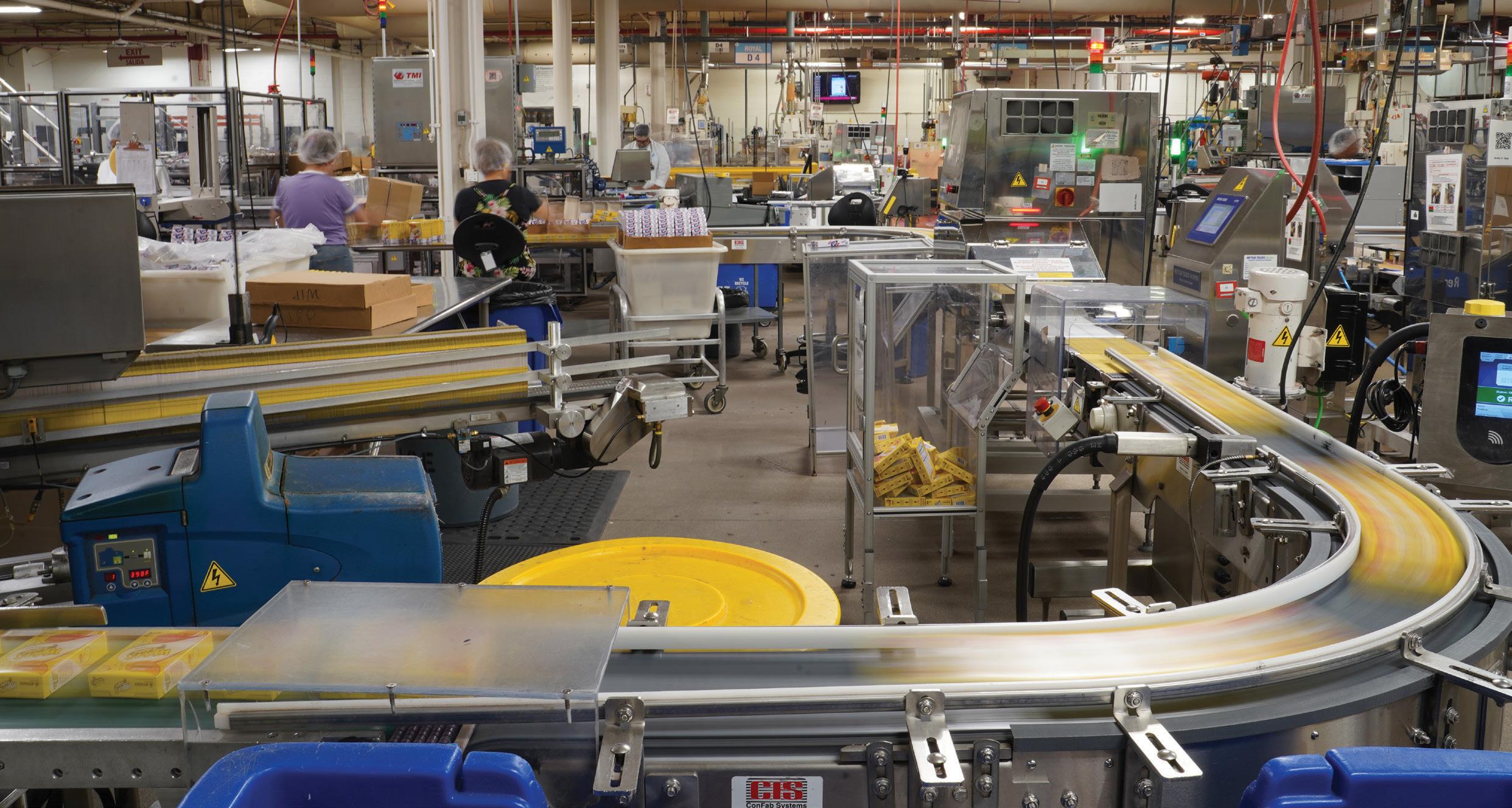

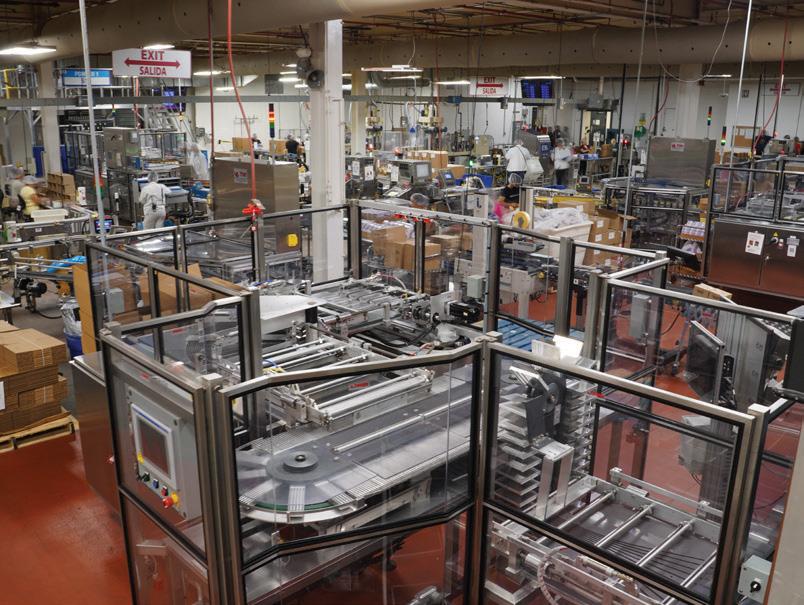
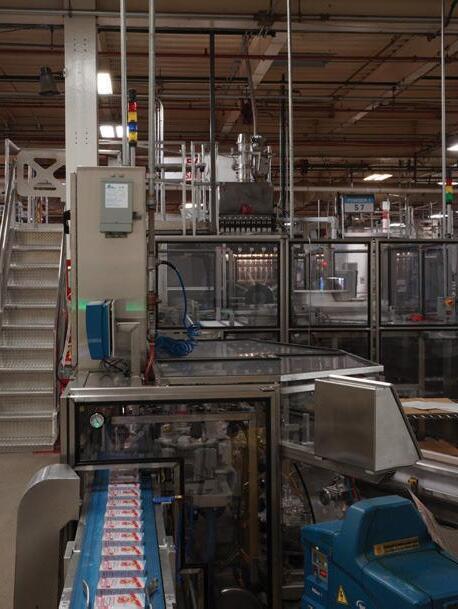

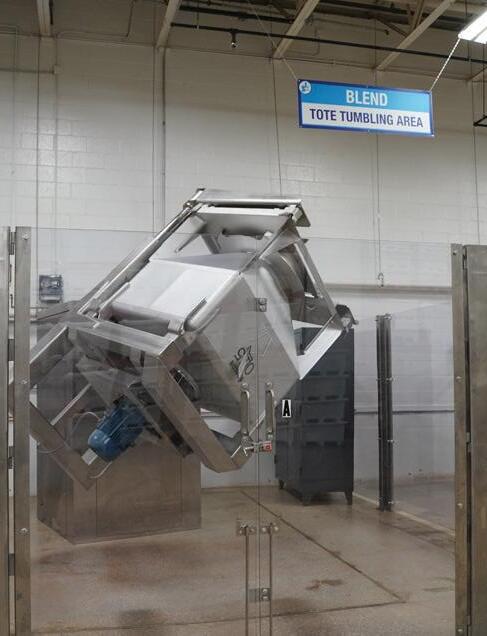




Jel Sert has been a leading manufacturer of drink and dessert mixes and freezable novelties for decades. But those products are only the beginning of what the company offers. Armed with expertise in manufacturing food products for the world’s largest CPG companies, Jel Sert is ready to develop high-quality products for grocery retailers, too.

Here, Matt Ingemi, Chief Strat egy Officer and Vice President of Business Development, explains the benefits of partnering with Jel Sert’s team of development and project management experts to elevate grocers’ private label portfolios.
Progressive Grocer: Let’s talk about private label in general. What are some trends, and what is the growth trajectory of store-brand products?
MI: We’re seeing store brands evolve with greater variety and stronger consumer perception. Shoppers increasingly treat them as intentional choices, not just lower-cost alternatives. While matching National Brand Equivalents (NBEs) remains important for core offerings, much of the category’s growth now comes from tapping into emerging consumer trends and preferences. Private brands will almost always offer dollar value, but today, consumers are no longer expecting a lower-value product or product experience.
PG: Why should retailers consider partnering with Jel Sert? How is the company equipped to help elevate private label offerings?
MI: As a branded CPG company, we invest heavily to stay at the forefront of innovation in every category we serve. That means we can share category and consumer insights, and help build a robust presence in social commerce, mining information from a first-party relationship with our loyal consumers.
We bring that same level of insight to our retail partners — helping them identify opportunities early and innovate within their private brand portfolios.
PG: Do you have any examples of how JelSert’s branded innovation has influenced or strengthened a retailer’s private label line?
MI: A strong example is the rise of the #WaterTok trend on TikTok, where consumers began experimenting with flavored powder and liquid mixes to transform the way they hydrated. Jel Sert leaned in early, fueling the movement with speed and variety in our branded drink mixes. We’ve since applied that same playbook — rapid product development tied to cultural moments — with select retail partners, enabling them to launch trend-driven drink mixes under their private labels. The result: private brand assortments that feel culturally relevant, not just category fillers.
PG: How does a partnership with Jel Sert go beyond basic transactions for your retail clients?
MI: We see ourselves as an extension of our partners’ teams, not just a supplier. That means sharing insights on consumer behavior, category shifts, and product innovation, even if it means retailers may use that information in competitive bids. We’re confident in our vertically integrated sourcing and manufacturing, but our true differentiator is the turnkey service we deliver: innovation strategy, R&D, packaging development, design, and world-class operations. For our retail partners, the value goes well beyond manufacturing; it’s about having a strategic innovation partner who can help grow the reach and impact of their private brand portfolios.
FOR MORE INFORMATION ABOUT HOW JEL SERT CAN HELP BUILD YOUR BRAND, VISIT JELSERT.COM.

Red meat is on the menu for the long haul, despite a myriad of challenges, ranging from in ation to health to sustainability. While these challenges present obstacles, most consumers don’t trade out of the category entirely. However, 20% note a decline in their intake, which is a trend that warrants close observation over time.
In a crowded and relatively stagnant market, convenience can be a powerful differentiator. The good news is that it can be achieved in various ways, from pre-cooked/pre-cut options to ideas for easy preparation methods. Pair these with an emphasis on health bene ts to create the foundation for a winning strategy.
Red meat sales are projected to rise to $76.9 billion in 2025, despite challenges. While costs deter some consumers, cooking at home to save money remains strong, boosting demand for red meat. Sustained interest in natural protein supports its stability, although health and sustainability concerns may slow growth.
Younger consumers have less established habits regarding red meat, making this an ideal time to help them build lasting routines. With less experience cooking red meat, these consumers may need guidance on choosing cuts and preparing them. Pre-cooked/seasoned options can also ease their hesitation and make red meat more approachable.
Red meat consumption remains stable across income levels, but buying habits tell a different story. When money is tight, people eat less red meat, meaning that it may not be a priority. Positioning red meat as a complement to affordable proteins, rather than as the main focus of a meal, could help shift the perception that it’s unattainable.
Health bene ts like high protein and affordability drive higher red meat consumption, but they’re also key reasons for cutting back, unveiling a major fracture in perceptions. Focus on factors like health and value to strengthen motivations for those eating more red meat, while addressing the concerns of those reducing their intake.

Rising prices, health concerns and a reluctance to cook may push red meat from being the centerpiece of meals to playing a more supporting role. More than a quarter of consumers are eating smaller portions, underscoring meat’s challenge to shine as a center-ofplate item. This shift is particularly evident in the move toward less traditional meal options like snacking, international cuisines or plant-forward dishes, where pork and beef risk losing prominence. However, these meats can regain relevance when positioned as flavor enhancers, a role they often play in popular international cuisines like Japanese and Latin American cooking.
Use on-pack messaging to clearly convey easy preparation steps, cooking time and meal-pairing suggestions, highlighting value and hand-holding consumers through the process.
More than 30% of consumers find red meat more challenging to cook than other types of meat. The majority of shoppers possess basic or intermediate cooking skills, with nearly half cooking out of necessity rather than passion. Providing pre-cooked meats removes the hassle of seasoning and preparation, helping reduce cooking fatigue and make mealtime easier. Along with convenience, pre-cooked meals can o er versatility, savings and food waste reduction.








Register now: let’s celebrate together FEB 22ND — 26TH, 2026 I HALL 12, BOOTH C35 I DÜSSELDORF,

Register now for an appointment
We look forward to welcoming you to EuroShop 2026, the world’s biggest retail trade fair in Düsseldorf, Germany.
Discover our new products and technical innovations, enjoy culinary specialties from our chefs from Northern Italy, and let’s celebrate together ...
Register now for a personal appointment. We look forward to meeting you there.



Incollabor ationwith :





























FROM AMERICA’S
As the only beekeeper-owned cooperative in the United States, Sioux Honey Association Co-op has been a leader in the honey industry since its founding in 1921. Today, in partnership with American Farmland Trust (AFT), the co-op is launching U.S. Farmed™ Certified Honey, making Sue Bee® and Aunt Sue’s® the first honey brands to carry this seal. Progressive Grocer spoke with Dustin Livermore, Vice President of Quality & Supply Chain (and hobbyist beekeeper), and David Coy, a commercial beekeeper member and Vice Chairperson of the Board, about what this certification means for grocers and shoppers.
PG: Tell us about American Farmland Trust and the U.S. FarmedTM Certified Seal.

DUSTIN LIVERMORE: AFT is a national nonprofit dedicated to protecting farmland, promoting sustainable agriculture, and keeping farmers on the land. The U.S. FarmedTM Certified Seal is the only thirdparty audited certification verifying that products are made with U.S.-grown ingredients. We’re proud that Sue Bee® and Aunt Sue’s® are the first honey brands to carry this certification.
PG: Why should grocery retailers care?

DAVID COY: As a beekeeper, I know the care it takes to produce honest, high-quality honey. The seal is more than a label — it proves every jar comes from American soil, farms, and bees.
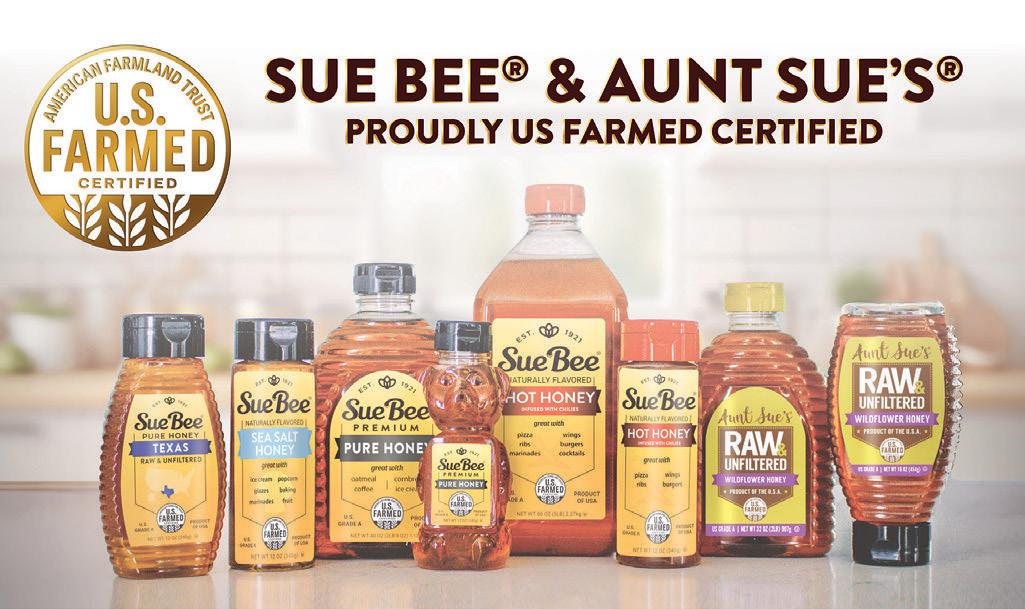


DL: There are five key reasons this is important for grocery retailers.
1. Consumer trust is shifting toward transparency. Shoppers are skeptical about food sourcing, especially honey, which has faced mislabeling and adulteration. This seal reassures customers that their honey is truly American and traceable from hive to bottle.
2. Support for American agriculture resonates. Today’s shoppers want to back local farmers and sustainable practices. Carrying this honey directly supports U.S. beekeepers, agriculture, and ecosystems.
3. Di erentiation in a crowded category. The honey aisle is competitive. No other honey has this verified U.S. source certification, giving grocers a unique selling point.
4. Environmental and pollination benefits. Supporting U.S. honey supports pollination of American crops and beekeepers. Healthy bees mean healthier farms and a stronger food system.
5. Honesty sells. The seal aligns with rising consumer demand for authenticity and ethical sourcing. Stocking it demonstrates integrity in food.
PG: Which products carry the U.S. Farmed™ Certified seal?
DL: Sioux Honey Association Co-op offers several certified products including Sue Bee® Pure Premium, Local, Spun®, Hot and Sea Salt Honey, plus Aunt Sue’s® Raw & Unfiltered Clover and Wildflower Honey.
PG: Any final thoughts for grocers?
DC: I encourage grocers to carry U.S. Farmed™ Certified honey. It’s pure, traceable, and made here at home. Adding it shows support for local farmers while giving customers confidence in what they buy.


FOR MORE INFORMATION, CONTACT YOUR SIOUX HONEY SALES DIRECTOR.

By Molly Hembree, MS, RD, LD
THE FACTS, RETAILERS CAN HELP SHOPPERS MAKE INFORMED DECISIONS ABOUT THESE PRODUCTS AT THE GROCERY

lthough plant-based alternatives burst onto the scene in full force just a few years ago, the enthusiasm for this category persists, albeit at a more predictable pace. Consumers following a plant-based eating pattern for the long term, such as adherence to a vegetarian or vegan diet, or those looking to nd plant-centered alternatives that suit their health needs or preferences, continue to seek innovative products from these sections of the grocery store. A key area of plant-based options still making headlines is that of plant proteins. It’s prudent to be aware of what makes plant-based proteins similar to or different from their animal-based versions; that way, shoppers can make informed decisions on them at the grocery store.
Protein tends to be synonymous with meat; however, protein is abundant in the plant kingdom as well. In fact, lentils, beans, tofu, peanut butter and other natural sources of plant protein are more cost-effective than most meats. It’s recommended to consume a wide variety of plant proteins to achieve a strong balance of amino acids, the building blocks of protein. Although products vary considerably, one serving of a plant-based “mock meat” likely has between 10-20 grams of protein, while one serving of 73% lean ground beef or one serving of raw chicken wings contains about 17 grams of protein.
status isn’t seen as detrimental to public health. Nonetheless, dietary cholesterol isn’t advantageous to the diet, and the body produces enough cholesterol of its own for all physiological needs. Most adults may see a bene t in keeping dietary cholesterol intake below 300 milligrams daily.
Plant-based proteins continue to pique the interest of consumers, and providing clarity about the nutritional pros and cons of this category can boost shopper confidence.
More processing often equates to added ingredients like sugar or salt to accomplish tastier alternative dishes. Plant-based proteins may undergo heightened levels of processing to imitate their animal-based counterparts. Table salt, or sodium chloride, adds an incredible amount of avor and is the rst ingredient that most food manufacturers will use to elevate a product’s palatability. However, some private and national brands that are experienced in crafting tasty plant-based proteins have found clever ways to add rich avor without sodium, instead opting for ingredients like mushrooms, tomatoes, seaweed, nutritional yeast, or premium herbs and spices.
Fiber, which goes hand in hand with plants, isn’t naturally found in animal foods. Daily adequate ber intake is connected to reduced risk of developing cardiovascular disease, type 2 diabetes and some cancers, and has been associated with lower body weight. Although wholesome plant ingredients like beans, lentils, nuts, seeds, whole grains, fruits and vegetables often boast impressive ber content, the nutrient can also be easily incorporated into plant proteins. Added ber, which is called out in ingredient statements, may include psyllium husk, cellulose or inulin, as well as vegetable powders and bean ours.
Dietary cholesterol makes its way into our diet only via animal-based ingredients like eggs, dairy, meat, poultry, seafood or their derivatives. However, the American Heart Association and the Academy of Nutrition and Dietetics’ stance on cholesterol has morphed over the years, and now dietary cholesterol intake
Added fats often found in plant proteins can include palm oil, palm kernel oil, cocoa butter or coconut oil. These fats contain a meaningful amount of saturated fat, of which intake is associated with increased “bad” LDL cholesterol and risk of heart disease. Daily saturated fat intake should be kept to less than 10% of calories, or about 22 grams of saturated fat, for someone following a 2,000-calorie diet.
Plant-based proteins continue to pique the interest of consumers, and providing clarity about the nutritional pros and cons of this category can boost shopper condence. Work with your dietitian to clear up any confusion about plant-based proteins through opportunities like expert infographics or blogs, store tours, shelf talkers, original recipes, or food demos.

Chris Chatterton President

By Gina Acosta
When shoppers walk into a Publix store, they don’t see robots prowling the aisles or giant screens urging them to buy more. There are no smart carts calculating totals, nor are there shelves that light up to demand attention.

Instead, shoppers fi nd something radical in its simplicity: calm, serenity, warmth. The lighting is gentle, the shelves are immaculate, and the associates greet you as if they’ve been expecting you all day long.
That sense of ease in a Publix store is the byproduct of a 95-year philosophy, one that places dignity, courtesy and ownership above digital gadgetry. In the world of grocery, where automation often masquerades as progress, Publix’s restraint feels almost revolutionary. You might even say that these are stores where shopping is, quite literally, a pleasure.
When 22-year-old George Jenkins opened his fi rst Publix in Winter Haven, Fla., in 1930, he wanted to build a grocery store unlike any other. His dream was to deliver the fi nest service in the fi nest stores with the fi nest employees.
In 1954, when advertising director Bill Schroter proposed a new slogan inspired by what customers were saying about Publix stores, “Where Shopping Is a Pleasure,”
values and standards. That loyalty and dedication that’s been earned over many years continues to resonate.”
Murphy’s own story mirrors that of thousands of Publix associates who turned part-time jobs into lifelong careers. “I started at 14 bagging groceries, and it’s worked out pretty well,” he jokes in an interview at the company’s Lakeland, Fla., headquarters.
He says that what Publix gave him, and what he now tries to give back, is opportunity. “It’s rare these days to grow and mature personally while growing and maturing in your career,” Murphy notes. “Publix o ers that at every level. Our people can come in at 16 or 60 and still fi nd a path to their personal best.”
“It’s rare these days to grow and mature personally while growing and maturing in your career. Publix o ers that at every level. Our people can come in at 16 or 60 and still find a path to their personal best.”
—Kevin Murphy, CEO, Publix Super Markets
Mr. George (as everyone in the grocery industry called him) instantly saw that it captured the company’s soul. “This isn’t something we dreamed up out of blue sky and white Florida sand,” he later said. “It’s a philosophy that has guided all our decisions and policies ever since.”
Nearly a century later, that philosophy not only defi nes the brand, but also underpins a business model that continues to achieve colossal growth in delighting shoppers. With more than 1,420 stores across eight states and annual sales exceeding $59.7 billion, Publix celebrates its 95th anniversary this year not as a nostalgia play but as proof that doing business the right way still works.
“Publix is a strong brand that has lasted and resonated for 95 years,” CEO Kevin Murphy says. “It’s a credit to our foundation, our
Longtime colleagues remember how Murphy was always hanging around after his shift, looking for ways to do things better: “He had to be told to go home.” That relentless curiosity made him one of the company’s best operators.
“For me, being an operator is about atmosphere,” Murphy explains. “What does it feel like when you walk in? What weather are your associates creating? Customers who feel welcome shop longer, and they buy more.”
He often walks stores and notices small things: a crooked label, a warm greeting, the scent of fresh bread.

“Those details tell you everything,” he says. “We’re not just selling groceries. We’re selling a feeling: that you’re wanted, that you’re valued.”
Publix’s structure allowed Murphy to rise through the ranks. “At Publix, you can start as a cashier or deli clerk and end up in accounting, marketing or pharmacy operations,” he observes. “It’s about preparing for opportunity. Publix o ers that.”
He adds: “We talk a lot about ownership and promotion from within, but the real magic is how we help people see things in themselves that they may not have seen otherwise. Somebody believed in me early on, more than I believed in myself. That’s something I think about every day as a leader.”

“Without a doubt, the key has been Publix people,” Murphy asserts. “The pride of ownership is a winning recipe. People will often go above and beyond for something they own.”
Each year, Publix shares profits with associates through stock ownership. “We reinvest in our people,” Murphy adds. “They care more because they own more. That creates a competitive advantage in every market we enter.”
That ownership structure is one reason that Publix has maintained a culture of stability and humility. “You can’t buy culture; you have to build it,” Murphy says. “Ours was built by people who understood that when you share success, you multiply it.”
a day, seven days a week, and maintain standards, conditions, freshness, everything. Our goal is to deliver the same great shopping experience at 8 a.m. on a Tuesday as we do on grand-opening day.”
That operational rigor is also paired with humanity. “Our customers don’t just expect clean floors and full shelves,” he says. “They expect eye contact. They expect kindness. That’s what we deliver.”
“Our customers don’t just expect clean floors and full shelves. They expect eye contact. They expect kindness. That’s what we deliver.”
—Kevin Murphy, CEO, Publix Super Markets

He often reminds associates that consistency is Publix’s greatest strength, as well as its greatest challenge. “We chase grand opening every day in every store,” he says. “Few retailers are willing to do what it takes to repeat that experience every single day, but we do.”
Murphy calls repetition the art of discipline: “We operate 15 hours
From its Florida base, Publix now stretches through Georgia, Alabama, Tennessee, South Carolina, North Carolina, Virginia, and Kentucky, opening roughly 30 new locations each year. Expansion could easily dilute the culture, but Murphy insists otherwise.
“We operate the same Publix in eight states,” he says. “We don’t change our prototypes or standards. Publix is Publix. Over 95 years, we’ve identifi ed the best way to operate a supermarket, and that’s what customers expect.”
Still, the business environment is tougher than ever. Regulatory pressures climb, costs soar and competitors multiply. Yet Murphy’s optimism remains intact. “We just want to sell groceries and take care of our customers,” he says. “With the loyalty of our associates and communities, our outlook is very positive. … The responsibility of protecting this company, our people and their futures never leaves my mind. It’s a weight, but it’s a privilege.”
Purina’s Purple Leash Project aims to help transform the domestic violence landscape to save lives at both ends of the leash.
By Joe Toscano, Vice President, Trade & Industry Development at Purina
Every year, millions of Americans experience domestic violence. For many survivors, a pet is more than just a companion—it is a source of comfort, resilience, and unconditional love. Yet, for nearly half of survivors, the presence of a beloved pet becomes a heartbreaking barrier to safety. Research shows that 48% of domestic abuse survivors delay leaving a dangerous situation because they cannot take their pet with them, and fewer than one in five domestic violence shelters nationwide currently accept pets.
This stark reality is what inspired Purina to launch the Purple Leash Project in partnership with nonprofit RedRover. The goal is simple but urgent: To create a future where no one must choose between escaping abuse and protecting their pet. Since its inception in 2019, the Purple Leash Project has provided more than 55 grants to shelters across the country, funding everything from outdoor play yards to indoor housing that accommodates both survivors and their pets. Thanks in part to these efforts, the number of pet-friendly domestic violence shelters has more than doubled in just five years, rising from 8% to nearly 20% today.
Awareness is a vital part of creating meaningful change in the domestic violence landscape. To shine a light on and help reduce the stigma around being a domestic violence survivor, we partnered with Variety® to honor actor, advocate and survivor Sarah Hyland with the first-ever Variety Courage Award presented by Purina at the annual Variety Power of Women event in Los Angeles last October. This recognition underscored both her personal journey and her commitment to raising visibility for survivors who face the painful choice of leaving a pet behind.
Most recently, we were privileged to partner with Sarah again to create the Courageous Together Collection, which launched this September, with the intention of inspiring courage, sparking conversations and reducing the stigma that too often surrounds domestic abuse. Available

exclusively at shop.PurpleLeashProject. com, the collection features items for pets and people, including necklaces, and bag charms designed in partnership with causefocused jewelry brand Coastal Caviar. One hundred percent of every purchase from the collection benefits and is a donation to RedRover in support of the Purple Leash Project, directly funding shelter improvements so survivors and pets can escape—and heal—together.
We are proud of the progress we’ve made but know there is much more work to be done. Retailers also have an important role to play in advancing this mission. Grocery stores, in particular, are uniquely positioned at the heart of their communities, serving as daily touchpoints for millions of families. By engaging with the Purple Leash Project, retailers can help spread awareness, raise funds and provide meaningful support to local shelters. Opportunities include featuring specially marked Purina products, hosting in-store donation and round-up programs, or working with your Purina reps to secure Purple Leash Project merchandising displays.
We’ve seen retailers and customers make meaningful change in their own local communities by engaging with shelters in their own backyards—from organizing supply drives, offering retail gift cards to support shelters and survivors and more.
The impact of this work extends far beyond corporate philanthropy. By supporting survivors and their pets, retailers can foster trust, demonstrate leadership in social responsibility and make a direct difference in the lives of vulnerable families within their own communities.
Domestic violence may often remain hidden, but together we can bring visibility, compassion, and change. Purina invites retail partners to stand with us in this mission. To learn more about the Purple Leash Project, access resources, or make a donation, reach out to your Purina rep or visit Purina.com/ Courage.
Because no survivor should ever have to choose between their own safety and the safety of their pet.
Publix is more vertically integrated than most of its competitors, operating 10 food plants and its own printing facility.
“It doesn’t make sense for us to make green beans,” says Doug Harris, VP of manufacturing, who led Progressive Grocer on a tour of one of his plants, “but it does make sense to process our own milk, make our own ice cream and bake our own bread. It boils down to quality, service and competitive advantage.”
He calls the company’s 1980s-era decision to open its own dairy plant “one of the smartest moves Publix ever made.” That plant, which now produces milk, tea and water for all Publix stores, remains a model of innovation and e ciency.

“The most important innovation for us isn’t always technological,” Harris adds. “It’s our safety culture. The greatest way to show associates we care is to provide a safe workplace. Every new hire gets safety training on day one, and that focus never stops.”
At Publix’s Fresh Kitchen facilities in Florida and Georgia, Harris points to precision and speed. “An order comes in at 3:30 p.m., and by 4 p.m. the next day, it’s produced, loaded and delivered,” he says. “We do that 362 days a year for all 1,420plus stores.”
“We try to hire good people and then make them even better. Publix has made me a better person. And when you retire from here, you want to leave it better than you found it, because the next generation is counting on you.”
The company’s 3-D printing capabilities, housed within its printing plant, are also breaking new ground. “We’ve used 3-D printing to produce equipment parts and even a replica of a 1940s Publix car for a company exhibit,” Harris says. “There’s really nothing our team can’t make.”
—Doug Harris, VP of Manufacturing, Publix Super Markets
Behind the machinery, however, is a human legacy. “We try to hire good people and then make them even better,” Harris says. “Publix has made me a better person. And when you retire from here, you want to leave it better than you found it, because the next generation is counting on you.”
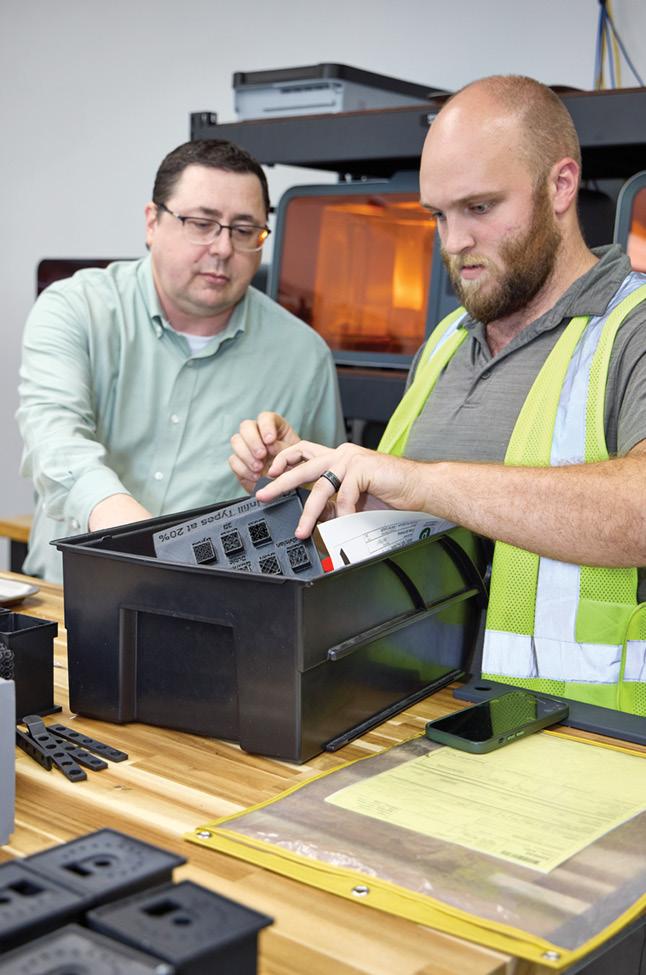
For Malinda Renfroe, VP of marketing, protecting Publix’s emotional connection with shoppers is her department’s mission. She started two decades ago as a tra c clerk and now leads a team of 470.
“With a brand that’s 95 years old, you have to balance nostalgia and innovation,” she says. “Customers remember getting a cookie from the bakery as a child, and that sense of memory is powerful. But we also have to evolve.”
She points to Publix’s internal culture as one reason that the message stays authentic. “We overinvest in people who are willing to invest in themselves,” Renfroe says. “That’s what keeps our culture strong, and it’s why our storytelling feels real.”
Club Publix, the retailer’s loyalty platform, embodies that blend of tradition and technology. “It enables one-to-one communication and personalized o ers,” she explains, “but unlike other retailers, you don’t need to be a member to get our deals. That comes straight from Mr. George’s belief that everyone should be treated like kings and queens.”




“We overinvest in people who are willing to invest in themselves. That’s what keeps our culture strong, and it’s why our storytelling feels real.”
—Malinda Renfroe, VP of Marketing, Publix Super Markets

Her marketing philosophy extends to emotion. “The fi rst thing customers say to me is, ‘I love your Christmas spots,’” Renfroe says. “Our campaigns resonate because they show we understand our customers want to create special moments for their loved ones, and we help them do that.”
Those “special moments” are a deliberate part of the company’s creative strategy. “Our brand work is slightly aspirational but always grounded in real life,” she adds. “It’s about showing the food, the family and the feeling of belonging. You can’t fake that.”
Renfroe’s department has even documented a “Publix way” of storytelling so future leaders never lose the brand’s voice. “It starts with strategy,” she notes. “Before every campaign, we ask: Does this stay true to who we are? Does it make our customers feel something real?”
While many grocery retailers are getting out of the pharmacy business, Publix is proving that grocery pharmacy can not only survive, but also thrive.
“When Publix Pharmacy started, it was about putting pills in a bottle,” recalls Dain Rusk, VP of pharmacy. “Today, it’s about clinical services and customer experience.”
That evolution positioned Publix perfectly for the pandemic. “We were so well prepared,” Rusk recounts. “Competitors weren’t set up that way.”
Rusk says that early on, Publix leaned into technology, workflow and immunization training. “It allowed pharmacists to focus on people, not just production,” he explains. “That’s made us one of the few profitable pharmacy chains in the country.”
According to Rusk, Publix’s ownership mentality also gives its pharmacy operations a competitive advantage. “Our people behave di erently because they’re owners,” he says. “It’s like the di erence between renting an apartment and owning a home – you take more pride when it’s yours.”

Even as it honors the past, Publix is building toward its centennial. “We have a team actively working on the 100th anniversary,” Murphy confi rms. “It’s about owning the legacy and paying homage to where we’ve been, while staying relevant for where we’re headed.”
He views that task as both a privilege and a duty. “Every generation of Publix leaders has protected this company for the next one,” Murphy says. “That’s my job now, to make sure the next generation inherits a company that’s even stronger than the one I did.”
Murphy smiles when asked about the secret to Publix’s longevity. “We’re in the people business; we just happen to sell groceries,” he asserts. “As long as we keep that at the center, Publix will be strong for the next 95 years. If you treat people right, they’ll treat your customers right. That’s been true for 95 years, and it’ll still be true at 100.”

In the end, Publix’s legacy is about the disciplined grace of doing simple things extraordinarily well. Clean stores. Fresh food. Loyal associates. Customers who feel at home.
“Few retailers are willing to do what it takes to repeat that experience every single day,” Murphy notes. “That’s what makes us hard to compete with.”
For 95 years, that pursuit – humble, relentless and profoundly human – has made shopping at Publix not just convenient, but also genuinely pleasurable. In an era obsessed with disruption, that may be the boldest idea of all.









EXPERTS REVEAL WHICH PRODUCE TRENDS AND ITEMS WILL STEAL THE SHOW THIS SEASON.
By Karen Appold
In recent years, notable trends have emerged regarding shoppers’ preferences for fruits and vegetables — think organic, locally sourced, exotic, pre-cut and functional superfoods. As the weather cools and 2025 winds down, experts expect these trends to continue, highlighting which produce items will likely be superstars.
Regarding organic produce, Carl DelPrete, CEO of Uncle Giuseppe’s Marketplace, a Melville, N.Y.-based supermarket chain of 11 stores, expects consumers to seek out dense, nutrient-rich staples such as sweet potatoes and winter squash that work for both weeknight meals and holiday entertaining.
“Beyond classic orange sweet potatoes, we’re seeing strong curiosity for Japanese sweet potatoes and white sweet potatoes, which roast up with a caramelized exterior and creamy interior,” DelPrete says.
“Parents and younger households are opting for organic basics when price gaps are manageable; they appreciate clear labeling and consistent availability.”
—Carl DelPrete,
Squash follows a similar path. “Butternut and acorn remain anchors, while delicata is gaining share because it cooks quickly, has an edible skin, and it suits both small households and
with consumers.

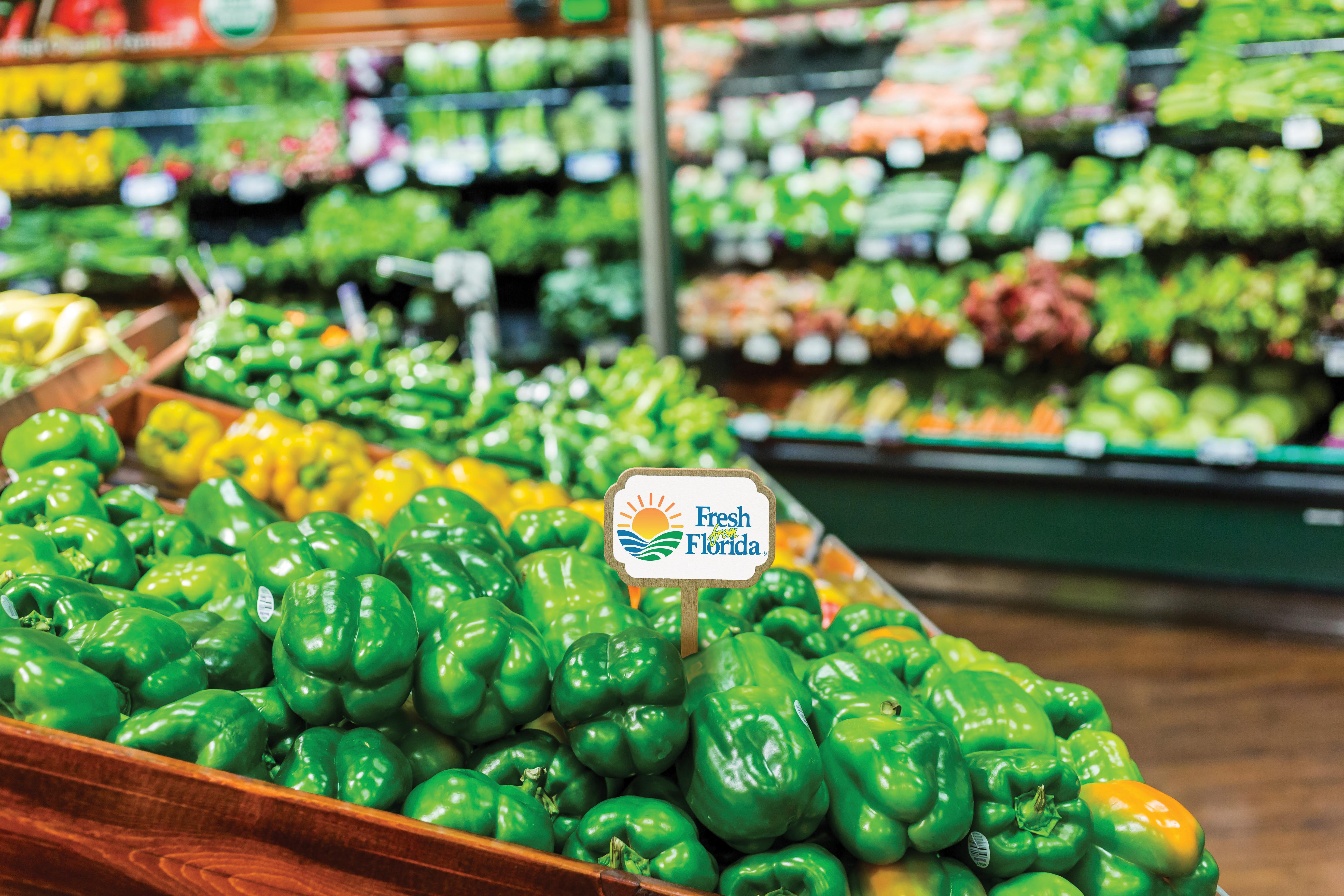


simple to prepare at home,” he says. “Goldenberries add a bright, sweettart pop to cheese boards, yogurt and salads, while the papery husk signals freshness and helps protect the fruit’s quality.”
According to Fink, consumers are embracing tropical and culturally diverse fruits like dragon fruit, passion fruit, ube and peppers. “Dragon fruit is visually appealing and aids digestive health, while passion fruit’s sweet-tart avor dishes up global air to the consumer plate,” she says.

Goldenberries add a bright sweet-tart pop to cheese boards, yogurt and salads.
items such as chopped butternut squash, peeled cored apples, sliced root vegetables, and bagged mixes of winter greens or slaws are more common, Swamy observes. Retailers and processors are investing in technologies – such as modi ed-atmosphere packaging – that preserve quality while giving speed and ease to consumers.
Ube represents the food color of choice this season as purple yams are used in desserts and lattes, Fink continues. Equally appealing, biquinho peppers are tear-shaped Peruvian peppers with mild heat and a sweet avor.
Thanks to the food-as-medicine movement, consumers are seeking value-added produce that offers cognitive bene ts as well as gut health and immune support, Fink says.
Soursop, a tropical fruit, is being researched and studied for its potential anti-in ammatory and antimicrobial properties, Fink says. Also known as graviola, it offers a tangy sensory combination of citrus, pineapple and strawberry and is known for its spiky green skin, soft white pulp and sweet-tart avor.
Leafy greens and cruciferous vegetables that are positioned as daily wellness staples for ber, folate and detoxi cation include arugula, kale, spinach, Brussels sprouts and cauli ower.
Antioxidant-rich berries continue to be standouts as superfoods this year, including cranberries, blueberries and raspberries, Fink says. Linked to brain health, heart health and anti-in ammatory bene ts, berries are often featured in snack packs and smoothie kits.
Although apples, pears and cherries have long been associated with good health, simply identifying as healthy is no longer enough. In a produce section with abundant choices, calling out the speci c nutritional traits or functions of items can help consumers clarify their selections, says Jon DeVaney, president of the Yakima, Wash.-based Washington State Tree Fruit Association. “Fiber and gut health, as well as hydration, have been traits of interest for apple and pear consumers, while cherries’ anti-in ammatory bene ts have gained attention,” he notes.
Today’s consumers show a strong willingness to trade cost and freshness for convenience. In fall and winter, ready-to-use
Uncle Giuseppe’s regularly develops new cut combinations to satisfy time-pressed shoppers. “Cauli ower rice and zucchini noodles are reliable performers because they t nicely into low-prep, low-waste cooking and take sauces and seasonings well,” DelPrete says. “The key is daily cutting and tight quality control, so texture and avor hold up.”
Fink notes that top pre-cut winners include apple slices, carrot sticks, mini cucumbers, jicama sticks and celery boat snacks that can replace ultra-processed food options in lunchboxes, fridges, and grab-and-go coolers.
Consumers are using pre-cut convenience produce not only to simplify their meal planning, but also to reduce food waste, she adds. Major retailers and c-stores are offering multi-compartment kits with pre-cut veggies, dips, and grains or cheese — ideal for time-starved and health-conscious consumers.
Retailers are increasingly using storytelling, e.g., grower videos, farm pro les and sustainability narratives, to build emotional connections, Swamy says. QR codes and digital traceability allow consumers to scan and learn more about origin, soil conditions or carbon metrics — turning packaging itself into a marketing channel.
Social media and in uencer tie-ins, like shareable “produce of the week” or recipe posts, help to drive discovery, she continues. Subscription-based boxes, meal kit partnerships with suppliers of seasonal produce, and “bundle” promotions, e.g., displays that educate consumers on how to cook a product, or suggestions on what pairs well with it, all help to lift basket size.
In-store sampling with recipe pairing, cross-merchandising with complementary items and dynamic pricing, such as discounts on items nearing the end of their shelf life, are also used. “These methods are effective because they reduce consumer friction, build knowledge and trust, and make produce stand out in a crowded store environment,” Swamy observes.

This fall and winter, consumers will seek out food that sustains them across multiple meals, with minimal waste. Clear cooking guidance at the point of sale, dependable freshness, and a breadth of sizes and varieties help households plan for both weeknights and holidays, DelPrete advises. When the basics are excellent, shoppers feel con dent branching out to newer varieties and exotic items.

ECRM Sessions give brands face time with multiple, relevant buyers. Each session also provides buyers with access to the popular and emergent brands their shoppers want. All in one place.
Scan the QR code or visit ecrm.marketgate.com now to learn more and find a session that works for you.
ECRM connects retail and foodservice brands and buyers with curated pitch sessions, white glove service, and expansive support resources.
ecrm.marketgate.com
This year’s 2025 GenNext honorees show that youth is no barrier to achieving great things in the grocery industry.
By PG Staff
Ranging in age from a tender 25 to a seasoned 39, this year’s GenNext Awards honorees work in a range of disciplines at a wide variety of retailers, CPG companies and solution providers, but the people appearing on the following pages all have one important thing in common: their dedication to furthering the food industry through their extraordinary efforts.
Youth has proved no barrier for our 107 honorees, all under the age of 40, who have stepped up to take charge in the face of operational challenges, economic pressures, staf ng issues and more to deliver the goods for their businesses and, by extension, the millions of consumers who depend on them. These young leaders have already learned that “growth often comes with obstacles,” in the words of one nominator, and most have applied that lesson by taking a proactive approach to future problems.
This approach includes bringing new ideas to the fore and having the know-how and tenacity to implement
them. “By combining strategic thinking with hands-on leadership, she is shaping a future where both associates and customers bene t from her forward-focused approach,” a second nominator said of a candidate who was ultimately chosen to receive a GenNext Award.
What’s more, as well as excelling at their respective jobs, many of the 2025 cohort of GenNexters are paying it forward to those just starting out on their own career paths, helping develop colleagues’ skills to feed the pipeline of talent that keeps this industry so vibrant. As a third nominator noted admiringly of an honoree, “Many of the colleagues she has mentored are rsttime professionals who have excelled in the wake of her tutelage.”
Read on to nd out more about our 2025 GenNext Awards recipients.

Senior Director of Sales, Acosta Group Age: 29
Clients’ sales under Kaes’ team’s management grew 5.4% in dollars over the past year. She also successfully managed the business of several key clients at Albertsons corporate, the Albertsons Intermountain division and WinCo. Her responsibilities included trade planning, managing client funds and overseeing new-item reviews and business updates. These efforts resulted in signi cant achievements, such as a 23% increase in Freshpet sales and a 474% increase in Poppi sales in the Intermountain division. As a strategic and results-oriented leader who is also supportive, Kaes has been instrumental in training and motivating her team of nine business managers.

Chief of Staff, 99 Ranch Market Age: 28
At 99 Ranch Market, Zhou is a driving force in fostering strong leadership and a collaborative team culture. She has implemented strategic initiatives that enhance executive alignment, empower leaders and improve cross-functional collaboration. Her ability to streamline decision-making and create structured communication channels has strengthened teamwork and operational ef ciency across the organization. Further, Zhou mentors emerging talent and has built an inclusive culture where diverse perspectives thrive. She has cultivated an environment fostering innovation, engagement and long-term success.

Manager, Reporting and Analysis, ADUSA Distribution Age: 28
Feaser’s role ensures the seamless ow of information between leaders and operations associates. She built the reporting and analysis team from scratch, successfully recruiting, training and developing a team of seven professionals who hit the ground running. The team’s crowning achievement was creating the rst-ever Distribution & Transportation services and vendor inbound compliance applications, involving more than 30 new reports across critical operational areas. These applications revolutionized how data is accessed and used company-wide, enhancing visibility and enabling data-driven decision-making at every level.

VP Business Intelligence and Insights, Acosta Group Age: 38
Andreoli’s strategic initiatives have elevated Acosta’s Canadian market presence. She developed a more independent, insight-rich reporting function that leveraged newly available data assets. This involved creating customized reporting solutions to reduce client costs and drive revenue growth and positioning. Acosta can now standardize outputs, make data accessible across business units and empower teams that may not have had access to complex or cost-prohibitive insights. Andreoli also runs public-speaking and presentation workshops for her team.

Manager, Distribution Inventory/Receiving, ADUSA Distribution Age: 34
One of Hearle’s signi cant accomplishments was the creation of a labor utilization tool that tracks cleaning frequencies against available labor hours, ensuring that critical sanitation work is completed on time and ef ciently. This has reduced labor hours, improved compliance and reduced sanitation gaps. He also led an initiative to modernize equipment and optimize procedures, aligning the department with current industry best practices. Simultaneously, Hearle promoted key team contributors and built a structure emphasizing accountability and ongoing improvement. These moves increased code adherence and audit compliance.

VP, Retail Operations, Acosta Group Age: 35
Garza collaborated with internal cross-functional partners to design and implement real-time dashboards for eld managers. These tools have allowed leaders in the eld to instantly access performance metrics, enabling faster, more informed decisions at store level. Additionally, Garza’s team developed automated, customized reporting that is delivered directly to eld managers each morning and is tailored to their speci c needs. This “daily snapshot” allows them to start each day with clarity as to where to allocate their time and resources, improving team productivity and execution.

Industrial Engineer, ADUSA Distribution Age: 28
Miller has contributed to multiple large-scale projects that have improved ef ciency and optimized warehouse performance. One key initiative involved leading re-slotting and re-rack efforts to maximize space, improve product ow and reduce handling time. Changes directly support cost savings and improve throughput during peak periods. Miller was also instrumental in onboarding and training new engineers, sharing institutional knowledge and helping them quickly acclimate to the distribution network’s pace and complexity. Additionally, he played a leadership role in transforming ADUSA’s internship program into a talent development pipeline.

KELSEY RIOUX
Manager, Network Inventory Control, ADUSA Distribution Age: 38
As a recognized expert in inventory control and planning, Rioux provides leadership that fosters growth, motivates employees and promotes continuous improvement. For example, ADUSA’s Vendor Inbound Compliance program experienced major growth, putting intense pressure on its infrastructure. Rioux took charge of the program, navigating its complexities and initiating a complete overhaul that yielded a more ef cient, streamlined operation. She also created a receiving governance function, under which she establishes new processes and best practices for that operational area, generating greater ef ciency and consistency.

ESG Finance Analyst, Ahold Delhaize USA Services LLC
Age: 25
Shen conducts pre-submission reviews and validation processes and participates in climate risk assessment data collection as well as European taxonomy reporting. She has an outstanding ability to identify errors, collaborate with teams to implement corrections and enhance reporting quality, ensuring compliance with industry standards and sustainability goals. Shen also wrote a consultation paper on emissions reporting, providing a clear framework for properly allocating emissions within the correct scopes.

Director, Automation, ADUSA Distribution Age: 34
Bringing to his role a diverse background traversing multiple supply chain disciplines, Ward has led cross-functional groups in the implementation of several strategic projects. These included rebuilding two sortation systems and replacing 200-plus linear feet of conveyance with no operational downtime. His team also launched the iWarehouse program, leading to a 60% safety improvement and a reduction in lift repair/replacement costs. The implementation of equipment upgrades generated annual savings and productivity improvements of 8% to 15%. Ward received ADUSA’s Strike Common Ground award for his leadership of teams.

Manager, Store Communications, The Giant Co. Age: 34
Banks has led initiatives to improve store user experience with communications platforms. By changing the work ows for the store communications department, she reduced overall volume of communications in the company task management system. Banks also refreshed 20 department-speci c sites on the company intranet, improving navigation and organizing content to be impactful, and she rolled out a new single-signon mobile interface that introduced core work applications on 3,200 mobile devices at 198 locations.

Director of Fresh Sourcing, Ahold Delhaize USA Services LLC
Age: 37
Buletza, whom colleagues describe as a decisive, team-focused communicator, played a key role in transitioning the operations of two fresh meat facilities from Ahold Delhaize USA to a vendor. This resulted in vendor colleagues moving into the company and onto Buletza’s team. He quickly integrated them while taking on his new responsibilities. Under his auspices, this new group is able to work collaboratively, ef ciently and effectively. Buletza and his team also partner with the company’s local retail brands to drive meaningful savings and value that’s then reinvested into Ahold Delhaize USA and its brands.
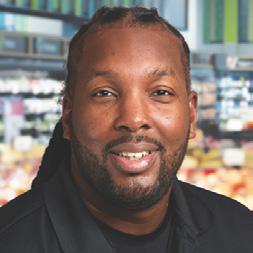
Store Manager, The Giant Co. Age: 39
Heron’s most signi cant accomplishment to date was being appointed store manager of one of the newest Giant stores, located on South Broad Street in Philadelphia. Leading up to and following the December 2024 grand opening, he took the lead in establishing solid partnerships with local organizations. The store has created more than 200 jobs and continues to provide freshness and value to the community. Additionally, in his work with the Empower business resource group, Heron is passionate about mentoring and supporting others within the organization.

ANKITA SHARMA
Senior
Software Engineer,
Ahold Delhaize USA Services LLC
Age: 32
Sharma played a major role in driving an order hub initiative forward, collaborating with external technical contractors, stakeholders and architecture teams while balancing her existing workload. Her efforts yielded a tool that gives operations teams real-time visibility into customer orders, letting them proactively monitor and address issues. This helps mitigate revenue impact while signi cantly reducing incident resolution time. Sharma’s ability to maintain momentum on this project and align multiple teams without disrupting ongoing priorities accelerated progress on the digital team and inspired those around her.
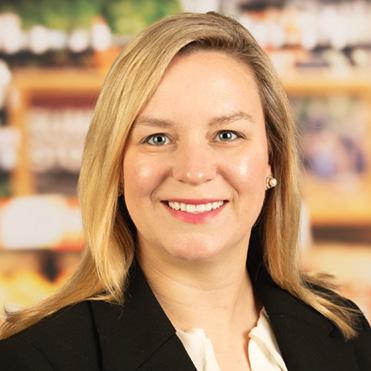
Manager of Community Relations and Strategic Partnerships, The Giant Co. Age: 38
Hopcraft has improved internal education as regards community relations programs, ensuring that store teams fully understand key initiatives and deadlines. She helped develop a volunteer calendar incorporating all community relations, regional partnerships, and DE&I events, and she oversaw work to enhance the guidelines of Giant’s Take Care Fund for associates. Hopcraft also co-chairs Giant’s LINC business resource group, which focuses on women through a lens of career growth, business acumen and community support.











www.adusa.
https://www.linkedin. any/ ahold-delhaize-usa/

Business Intelligence Analyst, The Giant Co. Age: 29
Taylor has become a leading voice for truth, insight and collaboration at The Giant Co. For instance, he recently led the development of several business intelligence tools and reports that provide immediate and actionable insights in the areas of sales, labor, customer experience, replenishment and merchandising. Taylor’s mastery of business intelligence solutions provides daily insights that have improved visibility to information and eliminated the need for manually generated legacy reports, as well as enabling Giant’s leaders to identify risk and future opportunities with minimal effort.

Creative Manager, Giant Food Age: 37
Bell’s campaigns push the boundaries of traditional marketing. He led the Home to Home storytelling series and the This is Home campaign, the latter an award-winning culturally signi cant series that highlighted community members’ and associates’ heritages and food traditions. Both efforts show Bell’s ability to create authentic, inclusive narratives that resonate with diverse audiences while conveying the brand’s value and community connection. He also helped restructure the creative team by streamlining processes and optimizing work ows, thereby achieving a six- gure cost savings.

Category Manager, Giant Food Age: 34
Bousson’s deep understanding of market trends, ability to anticipate consumer preferences, and strong relationships with key suppliers contributed to the growth and pro tability of the condiment and sauce categories. Careful analysis and market research insights led her team to introduce a variety of innovative products that meet emerging consumer preferences and keep the brand competitive and well positioned. Further, Bousson’s expertise in data analysis and forecasting has allowed her to consistently optimize inventory levels, reduce stockouts and improve supply chain ef ciency.

Manager Price Strategy, Giant Food Age: 35
Davidson’s visionary leadership and process innovations helped drive Giant Food’s pricing strategy. Her focus on both technical and human solutions demonstrates her ability to lead through complexity and deliver meaningful outcomes. She transformed Giant Food’s commercial forecast process by identifying inefciencies, partnering with a vendor to implement advanced solutions and coaching the team to adopt new practices. This initiative elevated forecasting accuracy and enabled more effective long-term decision-making. Davidson also developed critical internal pricing tools.





Manager Distribution Systems, Giant Food Age: 37
Vatan accomplished a wide range of key initiatives that contributed to operational ef ciency and technological advancement at the Jessup, Md., distribution center. He upgraded Vocollect servers, introducing a French-language package to support a diverse workforce. Vatan also successfully transitioned handheld devices to a new operating system and integrated Intune endpoint management for improved security. He played a pivotal role in maintaining operations during a cyberattack, ensuring data recovery and business continuity. Additionally, he expanded WiFi coverage to improve connectivity.

Store Manager, Stop & Shop
Age: 39
Simmons implemented a recognition program that celebrates both individual and team achievements. By regularly acknowledging small wins, he fosters a culture of appreciation that motivates employees and boosts team morale. This innovation not only improved employee engagement, but also directly contributed to enhanced operational performance. Simmons’ leadership was also evident during a challenging period when supply chain issues led to increased out-of-stocks. He held brainstorming sessions with his team to identify creative solutions, resulting in proactive measures that signi cantly reduced out-of-stocks and improved inventory management.

Category Manager, Stop & Shop Age: 33
A notable project spearheaded by Gonsalves was transitioning cosmetics from vendor-provided xtures to a smaller, pegged format, with the aims of optimizing space, improving merchandising ef ciency and providing a better overall shopping experience. She also works with vendor partners to get ahead of challenges and come up with mutually bene cial solutions. Gonsalves’ leadership is further shown by her organization of learning sessions and ability to foster knowledge sharing and professional growth, as well as by her willingness to assume authoritative roles outside of her core duties.

Front End Operations Manager, Albertsons Cos.
Age: 31
Among her numerous accomplishments at Safeway, Calimbas created a digital front end manager and bookkeeper teams channel hub, where all front end resources are accessible in one area, an innovative move that has improved communication and processes, and she grew NorCal Proud Facebook page membership by 65% from the previous year, creating a welcoming, inclusive environment for associates to share what they’re proud of in their stores. Dedicated to team development through mentorship and training, Calimbas is upbeat and happy to help others, adding fun and joy to work.

Store Manager, Stop & Shop Age: 36
In her role as manager of a Stop & Shop store in Levittown, N.Y., Quarles consistently upholds store standards and provides exceptional customer service. When her location received many associates transferring from a nearby closing store, she smoothed the transition as much as possible by giving the new associates a welcome letter providing store information, including relevant contacts. Quarles is also the district lead for Stop & Shop’s Store Culture Committee, to which store managers submit small wins that occur at their locations, and she mentors associate store managers in her district.

Store Director, Albertsons Cos.
Age: 39
Cipres is a training champion for San Diego’s South Area, where she was specially selected to coach and mentor future store directors and assistant store directors. She also serves as a district labor coach, supporting her fellow associates with best practices and guidance in labor and scheduling. In her role as a store director, Cipres collaborated closely with Starbucks’ district manager to thoroughly understand the business and how her team could provide the best experience. Additionally, she somehow found the time to complete both the Retail Certi cate Management and the McKinsey Academy programs.

Distribution Operations Supervisor, Stop & Shop
Age: 31
Recognizing the vast cultural backgrounds and potential language barriers that his team faces, Rivas has created a nurturing environment that fosters growth and retention. Already uent in Spanish, he learned key phrases in Haitian Creole and Portuguese to communicate better with his team. He also developed a strategy incorporating visual aids to enable new hires speaking various languages to better engage in a 90day training program. This initiative not only improved the associates’ comprehension, it also fostered a sense of community among them.

Service Deli Operations Specialist, Albertsons Cos. Age: 35
One of Frost’s priorities is to develop a team of dedicated and passionate leaders and mentors who share her devotion to providing an exceptional product/service experience for shoppers. She prepared and hosted a meeting with the district’s food safety leadership that emphasized the importance of food safety and sanitation practices and communicated that importance to deli department teams. Frost also developed the Hero Hour follow-through program, which encourages and requires that each location guarantee preparedness for evening sales and business growth opportunities.

Store Director, Albertsons Cos.
Age: 35
Hernandez manages District 44’s highest-grossing store, where weekly sales average $1 million. He excels at managing store operations while actively supporting district-wide programs. Hernandez leads weekly cost-of-sales conference calls, acts as a district labor coach and tracks competitors’ activities. In 2024, he received the District 44 AVP Store Director Award. Hernandez was also selected to attend the McKinsey & Co. Hispanic & Latino Management Accelerator. A graduate of the Retail Management Certi cate Program, he is currently pursuing a bachelor’s degree in leadership at Cal Poly Humboldt.

Senior Manager, Warehouse Operations, Associated Grocers of New England Age: 37
Bolstridge is part of the Warehouse Development Collaborative (WDC), launched in 2024 to improve culture, engagement, cohesion and retention. He enforces the WDC’s initiatives, ensuring sustained momentum and serving as a cheerleader. His team’s efforts helped warehouse retention rates improve 18% over the last year. Bolstridge was also chosen by senior leadership as one of Associated Grocers’ rst 15 culture ambassadors, due to his ability to foster a positive workplace culture. His efforts help honor the company’s cultural legacy while building upon it.

Manager of Visual Design and Content, Albertsons Cos.
Age: 37
During January’s Eaton and Palisades res in Southern California, Im produced a public-facing and internal video featuring the division president. The video, which highlighted Albertsons’ fundraising campaign to support affected neighborhoods, was shared on Albertsons’ social media platforms and internally throughout the company, raising $6.6 million for disaster relief. This past March, Im worked with the director of public affairs to create an internal video for the store director meeting. It emphasized how the division and company supported associates and communities affected by the res.

President, Bay Food Brokerage Age: 38
Since joining Bay Food Brokerage in 2011, Chatterton has fostered exponential growth. Revenue grew an impressive 94% within his rst four years. Additionally, from 2015 to 2020, Bay Food more than doubled its revenue and staff, leading to recognition as the 32nd fastest-growing company on the Tampa Bay Business Journal’s Fast 50 List in 2021. For 2024, annual revenue was 900% higher than when Chatterton joined the company. He currently owns 40% of Bay Food and will command 100% when current CEO Cammie Chatterton transitions to a chairwoman role this December.

Sales Manager of Ethnic-Micro Market, Albertsons Cos.
Age: 38
Recently promoted, Morris spent the past four years as a oral sales manager. In that role, she created competitive pricing and implemented successful marketing campaigns. Her company-leading ESG initiatives, along with her SoCal Awesome Blossom Merchandising Magazine, signi cantly improved sales and operational ef ciency. Both programs have been rolled out at multiple divisions. Morris’ team also implemented customized oral merchandising at 98 Hispanic stores while helping to drive top-line sales. Her new role emphasizes inclusion and belonging for associates and customers alike.

Project Manager, C&S Wholesale Grocers LLC Age: 32
George was the driving force behind C&S’ integration of automation into its warehouse operations. This multiyear project necessitated expertise across several areas, including logistics, engineering, construction and IT. Under George’s leadership, the project navigated such complex challenges as integrating advanced software, modifying infrastructure and rethinking work ow processes. She successfully facilitated communication among all involved parties, ensuring that every decision took into account both technological feasibility and operational ef ciencies.

Floral Operations Specialist, Albertsons Cos.
Age: 32
Valdez sets goals and enacts change. Instead of waiting for others to solve dilemmas, he takes the initiative and requires little direction during grand openings or show store prep. When Valdez was appointed to his current district, oral was behind in identical-store (ID) sales. After familiarizing himself thoroughly with the stores and personnel of the district, he began training and re-merchandising. Within a few months, oral sales in the district moved from negative IDs to positive IDs. Following Valdez’s work, in 2022 and 2023, co-workers honored his district for having the best oral operations.

Senior Manager, Procurement, C&S Wholesale Grocers LLC Age: 34
One of Gilbert’s key contributions was the successful training for the implementation of a new company-wide buying system, which streamlined operations and improved ef ciency. The system also played a crucial part in supporting the order management conversion for southwest regional customers, ensuring a smooth transition and a better customer experience. Gilbert also onboarded a new West Coast customer, expanding C&S’ reach and generating growth in an important geographic region. His leadership led to a successful integration.
































Director, Operations, C&S Wholesale Grocers LLC
Age: 34
Miller has consistently delivered exceptional results on nancial targets across West Coast teams and facilitated year-over-year operational savings of several million dollars across key performance indicators. He has formed strong relationships with union partners and signi cantly in uenced team culture. Miller led three West Coast distribution centers to full capacity through new customer integrations and dedication to ongoing betterment. In October 2024, his role expanded to Sacramento, Calif., where, during his rst two months, he led the team to achieve a 100% increase in volume and headcount.

Senior Director of Business Analytics, Chomps
Age: 34
Zwierzchowski’s data-driven insights supported Chomps’ 292% year-overyear growth, contributing signi cantly to its success in a rapidly evolving market. These insights, along with her strategic planning and accurate forecasting in collaboration with retailers, were also crucial in guiding customer line review conversations. Further, Zwierzchowski played a key role in the expansion strategy for Chomps’ Smoky BBQ Beef avor. Sales in the overall meat snack category grew $210 million over the past year, per SPINS, with Chomps driving $158 million of that growth.
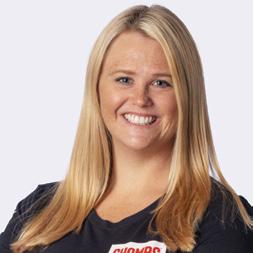
Director of Sales, Chomps Age: 34
Atherly’s expert strategic sales leadership yielded a 340% increase in mass channel sales year over year, signi cantly contributing to Chomps’ overall 292% year-over-year sales growth. She cultivated strong relationships with major chains like Target and Walmart, garnering placements that have driven sales and brand visibility. For example, she secured the No. 1 display position on a Target wellness end cap. Atherly’s ability to comprehend the intricacies of the mass channel and tailor sales strategies has been a major factor in helping Chomps establish a strong presence in more than 30,000 retail locations.

Principal, Conlego LLC Age: 39
Having worked at companies like Whole Foods, Giant Eagle, Sprouts and Meijer, Kopplin is regarded as a go-to advisor for grocers, helping them negotiate deals and create lasting partnerships with suppliers. His work has generated more than $500 million in new savings and investments for clients. Knowing the challenges that retailers face in negotiating with hundreds of vendors simultaneously, Kopplin developed Portager.ai, the rst software-as-aservice platform that makes negotiating with suppliers easy, ef cient and powerful. The results have had a huge impact on merchant businesses.

VP Digital, Marketing and E-commerce, Chomps Age: 32
Arriving at Chomps as its e-commerce manager in 2019, Fundakowski has swiftly climbed the career ladder. A key talent is her ability to develop and execute innovative digital marketing strategies that drive online sales and customer engagement. For instance, she played a major role in the successful online launch of the brand’s Smoky BBQ Beef avor, which became a top seller on Chomps’ website, generating 92.5% ve-star reviews. Additionally, under Fundakowski’s guidance, Chomps has achieved astounding 1,500% growth on Amazon and a 430% direct-to-consumer increase.

VP, Cox’s Seafood Age: 39
Following successful stints at Land O’Lakes and Vermont Creamery, Bedi is reshaping Cox for long-term success. He led a complete overhaul of the company’s sales and marketing strategies, built a high-performing team, and secured top-tier brokers and agencies to support scalable growth. Under his auspices, Cox earned Responsible Fisheries Management certi cation and the Publix Catalyst Award. Bedi also expanded the company’s brand reach through a partnership with Taste of NFL and GENYOUth, and he served as a board member of the Sustainability Round Table.

Senior Brand Director, Chomps Age: 36
Year-over-year sales for the Chomps snack brand grew an astonishing 292%. Winnall played a signi cant part in shaping brand identity and driving consumer engagement during this period of explosive growth. To begin with, she built a large and effective team, overseeing omnichannel, partnerships and community growth (including social and in uencer strategies) and core brand teams. Winnall also spearheaded impactful campaigns for such key moments as “Back to Routine” and the New Year Goal Big initiative, working with the partnerships team to secure key relationships with Strava and Reese’s Book Club.

Director of Talent Management, Dierbergs Markets Age: 37
Campbell has helped change Dierbergs’ talent strategy to meet the needs of today’s grocery sector. She created the Be Dierbergs employment brand, a values-driven platform that authentically communicates the company’s culture internally and externally. This improved Dierbergs’ brand visibility and acted as a foundational tool for improving talent attraction and retention across the company. Campbell additionally championed internal branding efforts, embedding Be Dierbergs into the employee experience, from onboarding to career development.







Meijer


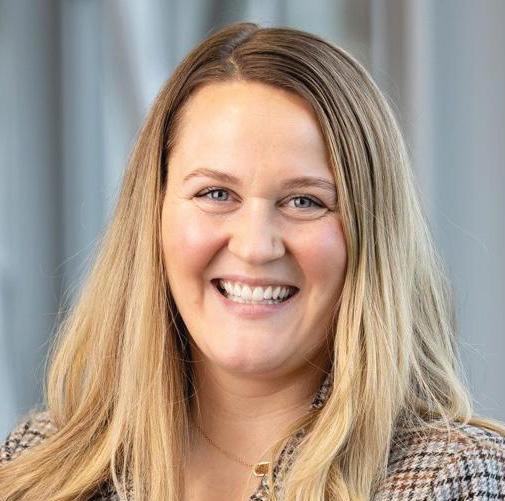



Director of Business Development, Divert Age: 35
Eichelberger played a critical role in expanding Divert’s reach by more than 3,500 stores and 20 distribution centers while growing the company’s national diversion program, which donates unsold food to food banks. Working closely with retailers to identify pain points, she helped Divert’s solutions team create and execute pilot programs focused on wasted food prevention and reduction. The programs had 100% participation and compliance and achieved 90% wasted food diversion in just six weeks — results that led to more than 500 additional retail store locations adopting the program.

Retail Partnerships Manager, Fairtrade America Age: 38
In a bid to raise Fairtrade America’s pro le, Greene crafted messaging and then gave more than 100 presentations to stakeholders last year, describing the bene ts of sourcing on Fairtrade terms. The strategy led to signi cant growth in awareness, generating more than 20 new relationships, 17 new private label offerings and an estimated $50,000plus in sales for farmers worldwide in its rst year alone. Greene’s work helped Fairtrade beat its revenue plan by 81% in 2024, and the organization is on track to deliver similar results this year.

Senior Project Manager-Technical, DoorDash Age: 30
In her former role as lead product manager at Amazon, Pansare launched several customer experience products that transformed grocery access for Amazon customers. Her agship achievement was revolutionizing Whole Foods Market’s Online Pickup service, reducing customer wait times from 3.5-plus minutes to under 2.5 minutes for 95% of customers. She also established new performance metrics and implemented team-wide training to maintain momentum in customer service excellence. Pansare excels at building bridges across teams and fostering knowledge sharing.

Senior Director Merchandising Systems and Support, Festival Foods Age: 35
The production item management initiative designed by Johnson led to signi cantly enhanced associate productivity, improved production processes, and higher sales and product quality. Her cutting-edge AI-based forecasting and production-planning system modernized the company’s fresh department operations and provided associates with the tools and understanding to grow with evolving guest needs. Johnson also led the development of a departmental segmentation and clustering strategy that enables fresh department teams to tailor assortments by location.

Head of Corporate Development and Ventures, dunnhumby Age: 33
Nagdas helped dunnhumby navigate the rapidly shifting consumer data and retail AI solutions landscape. He created Retail Innovation Network, one of the largest open-innovation ecosystems in the retail technology space, in under a year. His collaborations with external partners and internal cross-functional leaders led to new software solution launches across retail media, loyalty, store-level retailer competitive strategy and product intelligence. Nagdas also created Dunnhumby Ventures: Incubate to encourage junior employees to build new solutions.

Senior Manager, U.S. Partnerships, Flashfood Age: 30
Under Tosone’s leadership, Flashfood grew its footprint in the United States and helped retailers make the most of their outstanding inventory, increase their sell-through rates and minimize the amount of food wasted. She spearheaded Fresh to Frozen, an initiative that drives retailers to post about the extended lifespan and cost savings of meat and seafood that has been frozen by its best-before date. The initiative resulted in a 98% sell-through for items listed. Further, Tosone’s Posting Champion system urges retailers to dedicate staff members to Flashfood posting duties.

Director-Digital Marketing, Eggland’s Best Age: 35
Seubert has spearheaded Eggland’s Best’s evolution into a modern, digitally uent brand within the fresh grocery space by creating a digital commerce strategy that uni es brand building and performance marketing across platforms, driving Eggland’s Best to deliver growing household penetration and sales online and ofine. To drive this change, he instilled a culture of consumer obsession by onboarding new measurement and research tools. Seubert’s combination of new tools and new insights has elevated Eggland’s Best to an authoritative place as a category and digital expert.

VP, Head of Product, Flashfood Age: 38
As the lead for business development of an all-new partner app for Flashfood’s grocery customers, Guenther incorporated feedback from shoppers and grocers alike to inform the design of a new app that aimed to reduce friction at all touchpoints for the grocers that deploy Flashfood, making it easier for them to reduce food waste and increase sell-through. Her improvements helped to reduce the time required to post items, increase the number of items posted per store each day, and improve reporting tools and functionality within the app, providing grocers with a seamless tool.

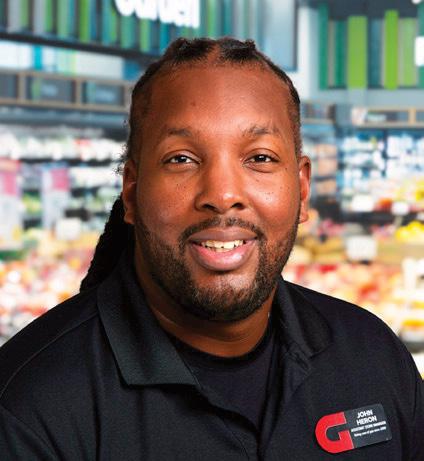
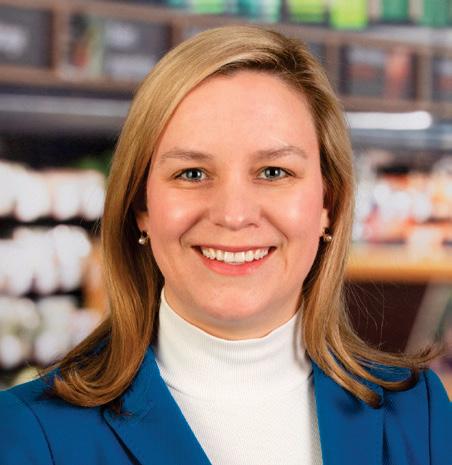
TM

Director, Merchandising (Meat, Seafood and Bakery), The Fresh Market Age: 35
One of Earl’s major accomplishments was the development and launch of the Argentinian Reserve beef program, an end-to-end initiative that brought a premium international offering into The Fresh Market and contributed meaningfully to meat department sales growth. Earl spearheaded the project from concept to execution, building vendor relationships, overseeing the import process and designing an impactful in-store presentation. His ability to unite teams, stay focused on end goals and deliver high-performing programs demonstrates his strong leadership skills.

Manager, Retail Category, The Fresh Market Age: 30
Jones stepped into her role at a pivotal time and made an immediate, lasting impact. She led the completion and company-wide rollout of a complex two-year IT initiative to simplify local ordering and invoicing, laying the groundwork to scale the local program effectively across all stores. Further, Jones developed a store referral process to intake and vet local item recommendations, ensuring that vendor quali cations were prioritized and setup was more strategic, and she led a cross-functional project to streamline what had been a lengthy, email-heavy system.

Senior Analyst, Customer Insights and Loyalty Analytics, The Fresh Market Age: 37
Pokharna is revolutionizing loyalty by combining data science, nancial acumen and human-centric leadership. She has reimagined loyalty at The Fresh Market by spearheading the development of a next-generation personalization engine that transforms customer interactions into actionable insights that drive revenue, her rigorous nancial modeling turning a high-stakes investment decision into a resounding success. When early data agged potential challenges, however, she halted the campaign to recalibrate her strategy, resulting in a 30% higher ROI.

Director of Business Transformation, Gelson’s Markets Age: 37
Patterson, who recently joined Gelsons, was previously director of e-commerce at Albertsons, where he helped grow the e-comm business while making consumers’ digital shopping experience more effective. He set clear, meaningful goals and guided his team in understanding and executing them, holding himself and them accountable for results. This yielded 1.0% sales growth for the total division and an improvement of on-time customer handoffs by 550 basis points. Under Patterson’s watch, there were also big improvements in on-time tilling and in-stock availability.

Merchandising Manager, Bakery, Giant Eagle
Age: 38
Strouse played a key role in testing the BluePrint process and creating training videos for chain-wide implementation. She was also instrumental in improving weekly communications between bakery merchandising and stores and operations. Recognizing the need to have all lines of business working together on cross-merchandising, Strouse volunteered to lead the team. A “make it easy for the stores” approach led to more easily executed displays that have signicantly improved store merchandising. Additionally, her simpli ed Market District patisserie program enabled easier store execution.

Produce and Floral Specialist, Harris Teeter Age: 30
Richardson’s strategic initiatives to drive sales growth, streamline waste management, enhance product presentation and elevate customer perceptions improved KPIs and consumer feedback in a previously underperforming market. He achieved a 1.33% reduction in waste, which contributed to a signi cant 1.04% gross pro t increase. Richardson is adept at optimizing store layouts for consumer and operational success and identifying creative opportunities for improvement. His ability to communicate his vision, craft practical and achievable plans, and execute them with thoughtful leadership have helped advance produce operations.

Director of Technical Services, Grocery Outlet Age: 38
During his rst six months at Grocery Outlet, Ngo built the company’s technical services department from scratch, developing a suite of protocols, programs and procedures that are now the private label program’s cornerstone of quality and regulatory standards. He also headed the cross-functional team implementation of a program allowing stores to execute a recall within required time frames, with an easy-to-trace document trail. An advocate for food safety and transparency, Ngo led compliance of the FDA Food Traceability Rule, improving the ef ciencies of researching consumer complaints.

CEO, It’s Skinny Age: 34
Determined to create a natural, low-calorie, gluten-free pasta alternative, Guadagno founded the It’s Skinny pasta brand, which uses konjac our as a key ingredient to deliver the taste and texture of traditional pasta – without the carbs or gluten. Guadagno’s unwavering focus on strategic thinking has not only fueled the innovative brand’s entry into 7,200-plus retail locations and created a strong direct-to-consumer and Amazon presence, it has also helped drive a major cultural shift in how healthy eating is de ned, reframing the conversation from rigid labels or compromise to a more inclusive message.

Senior Product Manager, Grocery Outlet Age: 34
Tasked with developing a new private label line of baking products, Sakino collaborated with eight suppliers to develop 25 new items across 12 distinct baking categories, with all products launched in time for the holiday baking season – a major selling opportunity. The resulting product line drove double-digit dollar sales and unit and pro t growth in what had once been a stagnant category, and beat projected sales and pro t for each product launch, ranging from 10% to more than 800% category growth.By identifying opportunities across categories, Sakino was able to save an average of 20%-plus in cost of goods.

Regional Head, The Kroger Co./General Of ce-Corporate Affairs Age: 38
Hurst’s passion for community impact has driven her to create innovative strategies that boost the company’s local presence and deliver bottom-line results. Last year, collaborating with a nonpro t partner, she expanded what was a Michigan-based event to 10 states and 12 cities, helping nearly 2,000 families. This initiative, which involved the work of associates, community members and local sheriffs, provided essentials and food to neighbors in need. Beyond her community work, Hurst serves on boards focused on leadership development and supporting families affected by cancer.

CALLI BRANNAN
VP of Retail and Industry Partnerships, GuacAI Age: 31
In her previous role as VP of customer success at Flashfood, Brannan led the launch of Flashfood for Independents, an app designed to meet the unique needs of independent grocery retailers, expanding Flashfood’s presence to urban centers and rural communities. In the app’s rst six months, the platform gained nearly 100 independent grocers. Brannan championed a partnership with Decagon AI to better automate the customer support function. Decagon now handles 100% of Flashfood’s customer support tickets, and 90%plus of inquiries are resolved without human intervention.

Home Director, The Kroger Co./General Of ce-Merchandising Age: 31
Since joining Kroger in April 2024, Lulic has quickly made an impact on its general merchandise business, launching Fresh Finds, a disruptive aisle driving incremental sales, in more than 300 locations and delivering 2%-plus growth in the seasonal business across the company’s more than 2,000 stores. Recently promoted to his present role, Lulic focuses on growing and integrating the home business across the Kroger network, providing solutions for customers’ everyday needs. His colleagues identify his outstanding leadership traits as curiosity, thoughtfulness and drive to succeed.

Labor Manager, The Kroger Co./General Of ce-Retail Operations Age: 32
Dedicated to optimizing labor through strategic scheduling and collaboration with HR, Lay introduced and implemented a new scheduling strategy, Open Shifts. This initiative fostered close collaboration between stores and their HR teams to better understand each store’s staf ng needs by day and department. He also implemented two distinct savings initiatives, each generating $10 million-plus in savings and contributing to the development of speci c departments. Beyond his daily responsibilities, Lay is active in Kroger’s Young Professionals employee resource group.

Supply Chain Network Strategy Director, The Kroger Co./Supply Chain Age: 37
Pauly helped transform Kroger’s supply chain through network optimization, strategic cost reductions and automation technologies. He drove improvements in e-commerce ful llment, last-mile delivery, traditional warehouse and transportation, increasing throughput and reducing operational costs. Pauly also established a team dedicated to network modeling within Kroger, developing an evergreen cost-to-serve model that’s now a foundation for its supply chain decisions. This innovation ensures that the company can continuously optimize distribution, reduce costs and improve service in the future.

Store Leader, The Kroger Co./Mid-Atlantic Age: 33
Despite pursuing advanced studies in the elds of chemistry and mathematical science, Pancho found her passion in food retail and subsequently dedicated herself to learning the industry. As the sole specialist supporting more than 80 stores, she played a critical role in teaching associates a completely new process from the ground up. To accomplish this, she developed training materials and job aids that were later shared across multiple divisions, demonstrating her peerless ability to lead through innovation and problem-solving. Pancho’s leadership is additionally de ned by her commitment to mentorship and community engagement.

Group Manager of Product Management, The Kroger Co./Technology & Digital Age: 34
Rapier, who recently left The Kroger Co., was a key leader of strategic initiatives focused on exploring new markets and opportunities, setting direction and driving execution for the company’s MAPLE (Marketing, Alternative Pro t, Loyalty, eCommerce) and Omnichannel teams. Throughout each step of the journey, he strove to empower his teams to focus on the most important things by quantifying value and maximizing impact. That leadership was demonstrated by his teams contributing more than $1 billion in value across commerce revenue, commercial revenue and cost avoidance.

Division Retail Operations Manager, The Kroger Co./Nashville Age: 37
Under Disalle’s leadership, the Nashville division saw a remarkable turnaround: In 2023, 30% of stores had composite scores below 50%; today, that gure is zero, with 80% consistently exceeding company expectations. Always willing to pilot such company initiatives as transforming back-room operations, eliminating unnecessary stock, and improving department ef ciency through targeted training, he achieved a 95% food safety audit score and exceeded pickup cost-to-serve pro t goals by 23 basis points. Further, Disalle continues to in uence enterprise-wide operational improvements.

Manager – Learning and Development, Lidl US Age: 32
Ebrahimkhel led the launch of Lidl US’s talent review process for store associates, an initiative that signicantly in uenced career development at the store level. Recognizing the need for a more structured and grounded approach to feedback, he created a comprehensive feedback library that gives managers essential tools to provide meaningful and constructive feedback to their teams. Ebrahimkhel’s contributions have enhanced the way that managers and teams engage in talent discussions and contributed to team cohesiveness while setting new benchmarks for excellent performance.

Store Leader, The Kroger Co./Ralphs Age: 31
Scott’s initiatives at the store level in Kroger’s Ralphs division have driven sales, increased gross pro t and EBITDA, and created a strong customer base. He has also given himself entirely to his store’s customers and surrounding community: During the Franklin and Palisades res, for instance, Scott remained at the store during evacuation so that he could continue to support residents, as well as rst responders for whom he supplied water and food – and even made coffee. Scott’s efforts helped hundreds, if not thousands, of rst responders from all over the country – a testiment to his unique brand of servant leadership.

Specialist – Food Assortment, Lidl US Age: 27
DeLeon collaborated with the category management and branding and packaging teams to develop a new request-for-quotes process that drastically reduced time spent collecting assets and data. The new process streamlined work ows and increased performance for the entire department. He also worked closely with the IT and supply chain teams to create a comprehensive report used by multiple departments to track vendor deliveries. This report improved ef ciency, enhanced interdepartmental collaboration and data transparency, and led to a better cross-departmental understanding of how teams work together.

Store Director, Meijer Age: 36
As the director of the highest-volume store in the East Michigan region, Deleon plans and executes meaningful monthly initiatives — from leadership graduation celebrations to storewide events — that foster an environment in which associates feel valued, motivated and connected. Her passion for and commitment to talent development lead her to continually nd opportunities for the associates in her charge to grow, and her dedication to cultivating a positive, people- rst culture makes Deleon an invaluable leader and a driving force within the organization.

Merchandise Director, Meijer Age: 39
Schultz led his team to hit a historic milestone of $1 billion in over-thecounter (OTC) sales for the rst time, in 2024. Beyond his proven ability to deliver exceptional business results, he has been a pivotal force in advancing key health-and-wellness initiatives at Meijer. Schultz drove the successful implementation of OTC payment card acceptance, the strategic merchandising of the Blodgett Pharmacy HBC assortment, and the creation of an innovative in-store experience through the OTC wellness initiative. His talent for anticipating industry trends and driving innovation directly moves the needle and transforms results.

Manager, Corporate HR, Meijer
Age: 36
Dodge led the store leadership restructuring, an extensive two-year project that involved the comprehensive redesign of the organizational structure in retail locations, role design, and the overall redeployment and change management of the workforce. Her approach included regular roundtables, touchpoints with store leaders, and rapid interventions to address potential concerns proactively. The project resulted in impressively low turnover rates and more than 2,000 promotions, with many team members moving into newly created lead positions.

Founder and CEO, Mis ts Market Age: 33
In just six years, Ramesh has propelled Mis ts Market from a scrappy startup to an industry-disrupting platform serving more than 500,000 active members. Under his leadership, the company has rescued more than 238 million pounds of food and expanded its assortment to include 1,000-plus high-quality staples, fresh meat and seafood, and unique CPG brands and upcycled goods, including the award-winning Odds & Ends private label line, while also supporting food security efforts. Ramesh additionally launched two B2B businesses that maximize the company’s infrastructure and sourcing network.

Assistant Store Director, Meijer Age: 33
Lower drove impressive results in his role as assistant store director at Store #107, in Dayton, Ohio — and when he stepped into the store director role from January through April of 2025. Under his leadership, the store achieved an outstanding on-shelf availability score of 96.40 year to date (YTD) and is currently up 8.70% to plan in sales scal YTD). Lower’s in uence extends beyond numbers — he invests in his team through patient, enthusiastic coaching, building a robust bench of future leaders. His impact is felt daily and is integral to the store’s continued success.

Executive Business Assistant, Next Phase Enterprises Age: 25
Ashley contributed to Next Phase Enterprises’ internal success with the onboarding of a new project management tool – representing a major shift in how employees interact within the organization. She embraced the change and approached the challenge as an investment in improving the national brokerage, sales and marketing rm. To ensure salesforce buy-in, Ashley carved out time to simplify the process for the sales team and provide additional support. Her dedication, collaboration and innovative mindset led to a more cohesive and impactful communication process.

Manager, Produce Business, Meijer Age: 39
Ribitch helped develop Meijer’s Floral & Vine brand and played an instrumental role in planning the produce wet-wall reset — contributions that were pivotal in driving 13% growth in oral and helping the produce department meet its $100 million plan. Her adaptability in taking on a new role while achieving remarkable success demonstrated her unwavering commitment to excellence and her ability to drive meaningful business growth. According to her colleagues, Ribitch’s contributions have set a high standard of leadership and performance at Meijer.

CEO, NextStar Partners Age: 36
Formerly president U.S. at beverage company Beliv US, Azambuja delivered exponential growth across revenue, margin and EBITDA and led the development of the Beliv Operating System, an integrated company-wide framework to guide portfolio pro tability, team accountability and innovation. This system helped scale Beliv’s presence and align cross-functional teams under one vision. He additionally spearheaded the pilot launch of Big Easy Pop, which generated $1 million in sales in just 16 weeks through a single retail partner. Under Azambuja’s steady leadership, Beliv introduced more than 20 new SKUs.


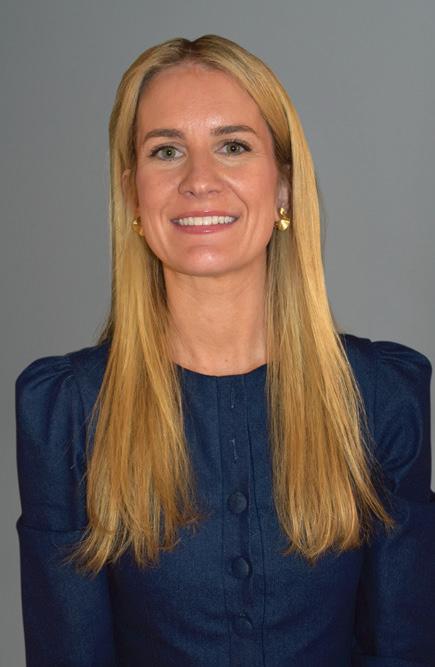






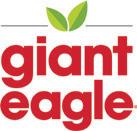









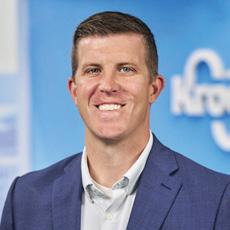



Director of Beverage Alcohol Thought Leadership, NielsenIQ (NIQ) Age: 32
Theriault develops and presents NIQ thought leadership to dozens of clients and industry trade groups, elevating the organization’s presence in the industry and providing invaluable perspectives that shape the future of beverage alcohol. Additionally, she was the mainstage speaker at the annual Wine and Spirits Daily Summit; participated in the opening panel at the DISCUS Conference, in Washington, D.C., addressing more than 450 attendees, including c-suite executives and senior decision-makers; and led an interview panel of wine industry CEOs at the Central Coast Insights event.

Meat and Seafood Coordinator, Oliver’s Market Age: 30
Daniels was the rst woman in Oliver’s history to manage a meat department. Her successes and abilities paved the way for several more women to become meat managers. In September 2024, Daniels became the company’s rst female (and youngest-ever) meat and seafood coordinator at the age of 29, overseeing and managing a key department at the company and assuming responsibility for many millions of dollars in inventory and sales. Daniels is committed to achieving the best nancial results and to working closely with her managers to achieve that goal.

Senior Director, Marketing, Niman Ranch Age: 37
Johnson spearheaded the development of impactful marketing programs at Niman Ranch that spurred $11 million in growth with targeted retailers. She headed up the marketing strategy for the launch of ultra-premium Iberian Duroc Pork at a large retail partner, growing sales for both the new brand and Niman Ranch’s classic programs, and she was a key member of the team that provided R&D to upgrade raw material, which drove $700,000 in sales and secured incremental shelf space. Johnson additionally leveraged digital incentive platforms to drive brand awareness and purchasing at national retail partners.

Gourmet Cheese Coordinator, Oliver’s Market Age: 37
Johnson is passionate about training his team, supporting local farmers and cheese makers, and sharing his knowledge and expertise with Oliver’s customers. He developed controls and procedures that dramatically improved the pro tability of his department, empowering managers to improve their own performance through his creation of better nancial tools. He also crafted the company’s rst event-driven sales promotion for his department, with results several times larger than projections. Along with being nancially successful, the promotion and related competitions engendered a new level of teamwork.

E-Commerce Marketing Analyst, Northeast Grocery Age: 30
Tasked with revitalizing the targeting strategy behind the Price Chopper/ Market 32 points multiplier program, Nantista used historical data and market trends to propose a new structure that improved customer value and campaign ROI. He also resolved a longstanding customer relationship management data issue that had impaired some of the company’s household-level targeting, ensuring the continued integrity of large-investment targeted mailing programs. Nantista is known for empowering teammates, mentoring interns and making complex ideas understandable to the entire marketing team.

Co-Founder/Director of Marketing, PACHA Age: 34
Hamann has built PACHA’s brand, message, marketing strategy, direct-to-consumer (DTC) platform and more. She grew the brand on DTC as a perishable gluten-free bread made with sprouted and fermented buckwheat, building up to $200,000 in monthly revenue. Through equity crowdfunding, Hamann raised $1.4 million in two subsequent rounds via WeFunder when the company was in need of capital. She also organized the marketing team to form a cohesive unit that’s producing at an impressive level. PACHA wouldn’t have achieved this extraordinary growth without Hamann’s steady hand on the tiller and thoughtful leadership.
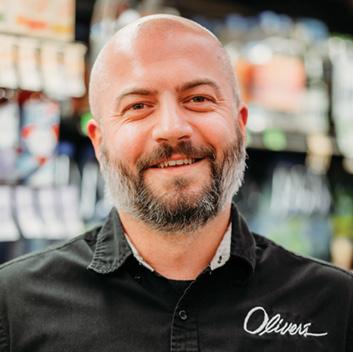
Natural Foods Buyer, Oliver’s Market Age: 37
Canter is committed to working with vendors, monitoring new products and training store teams, all with the goal of making Oliver’s natural foods department among the best of its kind in California’s Sonoma County. Since joining Oliver’s in 2007, Canter has progressed through various departments, forging a career that embodies the company’s culture. During the recent egg shortage, his work with local connections and willingness to personally deliver product to stores helped ensure continuity of supply. In addition to his busy workload, Canter is currently pursuing a degree in business administration while working full-time.

CEO, Palmer’s Supermarket Age: 39
Rivera’s greatest accomplishment was creating alignment — among the company’s family members, board members and employees — on a uni ed vision and set of core values. She clari ed the company’s purpose, restructured leadership, implemented formal job descriptions and performance evaluations, and introduced monthly manager checkins that foster clarity, communication and accountability. Rivera founded the award-winning bakery, Gourmetto-Go, and off-site catering divisions, diversifying the company’s portfolio. She also created the Culture Club, which plans events to build community and celebrate employees.

CEO and Founder, Phood Age: 32
Dang’s platform processes more than $20 million in gross merchandise value daily, powering smarter food operations across thousands of grocery and restaurant locations. With a team of fewer than 15 people, he helps grocers evolve from static spreadsheets to dynamic, adaptive tools that respond in real time, enabling teams to forecast production, reduce shrink and make their labor hours more ef cient. Thanks to the scalability of Dang’s concept, Phood is now on track to grow to 30,000plus terminals over the next two years, representing 30-times growth. This can be attributed to his pragmatic yet deeply visionary leadership style.

Director, Meat and Seafood, Sendik’s Food Markets Age: 38
Skoczynski helped develop Sendik’s in-house butcher training program, which is designed to address the critical need for skilled butchers. He played a pivotal role in designing the program’s three-phase curriculum. His efforts were instrumental to the successful launch and ongoing success of the initiative. Recognizing the impact of staf ng challenges, Skoczynski also spearheaded the development of a seafood commissary. This innovative solution allows for the packaging of hundreds of thousands of pounds of seafood, signi cantly reducing the burden on store-level teams and ensuring consistent quality.

Sales Director, P&G Grocery Team, Procter & Gamble Age: 34
Gmeiner’s strategic vision was shown by the launch of the Swiffer PowerMop at Kroger, where she not only drove sales, but also transformed the shopping experience with displays that captivated consumers and encouraged trial. Gmeiner’s highly accurate forecasting tool, which has been adopted across other business units, showcases her ability to identify needs and create solutions that drive ef ciency and accuracy. By prioritizing the right product offerings and value communication for multicultural shoppers, she makes informed decisions that resonate with diverse consumer segments.

U.S. Brand Manager, St Pierre Bakery Age: 30
Swift created attention-grabbing in-store executions for MinneapolisSt. Paul metro-area retailer Lunds & Byerlys, developing an end cap that transported shoppers to a little Parisian boulangerie opposite the instore deli. This not only drove brand engagement and in-store theater, but also sales. Additionally, Swift helped deliver a three-day consumer activation in San Antonio to drive awareness and sales at beloved Texas grocer H-E-B. This event introduced St Pierre’s Citroen food truck – an initiative led by Swift. She also helped with the U.S. launch of the global creative platform Eat Avec Respect, the brand’s rst-ever TV campaign.

Associate Professor and Department Chair of the Food, Pharma and Healthcare Department, Saint Joseph’s University Age: 39
A thought leader in behavioral marketing, Baskin has conducted research in uencing both academia and industry in such areas as consumer judgment, sustainability, nutrition and behavioral nudges. His leadership extends to curriculum innovation, redesigning the university’s one-ofa-kind food marketing MBA and food marketing MS programs, introducing relevant courses, and developing cross-disciplinary initiatives. Baskin is also known for his mentorship activities, providing insight into industry trends and helping connect students with career opportunities.

Head of Public Relations, Communications and Corporate Affairs, St Pierre Groupe Age: 36
Bleakley’s role touches every St Pierre business department at some point. She works cross-collaboratively with the brand marketing and sales teams across various countries to support the delivery of brand growth year on year, leading initiatives through external and internal PR and communications. Bleakley is in uential with multiple stakeholders, leading and/or consulting on communications with suppliers, customers, consumers, community initiatives and colleagues. Further, in 2024, the St Pierre team volunteered 300-plus hours to community causes, mainly via initiatives set up by Bleakley.

CIO, Sendik’s Food Markets Age: 39
Doty spearheaded the creation of Sendik’s in-house IT department. Under his leadership, the team has grown to six members, providing comprehensive support for all stores, the warehouse and the support center. He played a key role in implementing numerous technology initiatives, including the launch of Sendik’s Express delivery service and the customer rewards program. These initiatives have enhanced the customer experience and streamlined operations. Doty always seeks ways to improve ef ciency and reduce reliance on external resources by handling tasks like scale calibration and SCO programming.

CEO, Synear Foods USA Age: 39
Zhu has achieved remarkable results through strategic vision, unique innovation and operational excellence. Since taking the helm at Synear, she’s driven 40%-plus revenue growth in just three years and delivered the highest pro tability in company history. Zhu has also built and nurtured high-impact partnerships with such major retailers as Costco, Walmart, Sam’s Club and Albertsons, as well as ethnic grocers, among them 99 Ranch Market, H-Mart and Weee! Beyond distribution, she spearheaded inventive marketing campaigns — roadshows, in uencer partnerships and PR initiatives — to elevate Synear’s brand presence.

VP of Marketing and Trade Operations, Tabañero Holdings
Age: 39
Mishner has had a transformative impact on Tabañero Holdings, leading the company’s marketing and trade operations with both strategic vision and a deep commitment to purpose-driven growth. Under her leadership, the brand has expanded signi cantly in both domestic and international markets, launching high-impact campaigns and securing retail partnerships with major national chains like Walmart, Meijer and ALDI. Above all, Mishner has been instrumental in evolving Tabañero’s identity from a hot sauce brand into a lifestyle-driven company that resonates with consumers on a deeper level.

Senior Manager, Category Insights, Topco Associates LLC
Age: 38
While expertly guiding category managers from strategy development to real-world execution, Provost played a critical role in maximizing Topco’s investments in consumer panel data, enhancing the company’s understanding of consumer motivations, perceptions and behaviors. She introduced quantitative research pilots in such new categories as coffee and paper goods, resulting in actionable insights that directly in uenced strategic decisions, and also secured valuable new data sources. Provost’s proactive engagement, clear communication and continuous drive for improvement have positively in uenced the company’s culture.

Brand Manager, Brand Management and Packaging Operations, Topco Associates LLC
Age: 33
Working with Sweet P’s Bake Shop and “Gabby’s Dollhouse,” the top children’s show in the world, Bernhard was instrumental in creating a limited-time-offer cookie and packaging strategy to coincide with a tie-in movie. This was part of the holistic limited-time-offering approach that she developed for Sweet P’s, connecting the private brand more closely to key holidays and events year-round. Bernhard’s ability to be both visionary and strategic while ensuring tactical execution is a key strength and major asset for Topco, its brand portfolio and its members.

Associate Manager, Quality Assurance, Topco Associates LLC
Age: 34
Sturdivant worked with suppliers on compliance with the new Modernization of Cosmetics Regulation Act for 1,300-plus products manufactured for Topco. She was also instrumental in the company’s push to continuously improve its internal quality assurance processes, leading the reimagination of Topco’s supplier compliance program, and headed the team updating the annual review process to include a multi-pronged proactive approach embedding current industry actions, consumer feedback and regulatory changes in a risk-based supplier assurance process that has signi cantly boosted effectiveness.
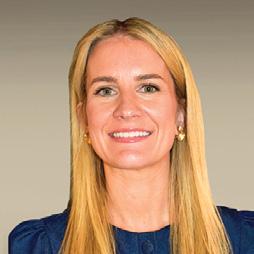
Senior Sourcing Manager, Grocery, Topco Associates LLC Age: 35
In 2024, Doyle successfully executed six sourcing events spanning various categories, managing a spend of $125 million and securing savings of $7.7 million. She took full ownership of her categories and ensured thorough analysis to make strategic and informed business decisions. Doyle also trained and mentored her team throughout the sourcing events, contributing both to their individual development and the team’s success. Her expertise and decision-making affect Topco’s overall budget, cost ef ciency and sourcing effectiveness, making her a key player in shaping its sourcing strategies.

President and Chief Business Of cer, Retail, Tredence Inc.
Age: 39
At Tredence, Seybert has spearheaded complex, high‐impact transformations for some of the world’s largest retailers, including grocers. For a global retailer with 20,000plus stores and a signi cant grocery footprint, he oversaw a sweeping overhaul of its data and analytics landscape, and in another engagement, he modernized the data, AI and machine-learning capabilities of a retail giant struggling with outdated tech stacks, inconsistent data and underused models. Seybert is revered by colleagues as a customer-focused leader dedicated to building deep partnerships and making decisions that drive long-term impact.

Category Manager, ISP Hired Services, Topco Associates LLC Age: 38
Liu, whose strengths as a leader are discipline, strategic thinking and the drive to achieve, has created several program offerings, including a debit interchange management program. Many Topco members participating in this initiative – more than half of the co-op’s total membership – wouldn’t be able to get their own debit incentives alone, while the largest grocery retailers all typically have debit deals and pay lower than published rates. Liu leveled the playing eld a little by aggregating the members’ volume through an RFP and securing multiple debit network incentives, a move that’s yielding substantial savings.

Manager, Implementation, Upshop Age: 35
Combining technical mentorship with a people- rst approach, D’Souza has consistently championed innovation and empowered others to think differently. He played a key role in training the implementation team at Upshop on automation tools, not only sharing his technical knowledge, but also fostering a mindset of simplication and ef ciency. D’Souza also guided the team through “curiosity projects” — initiatives aimed at unlocking untapped ideas and talent among individual contributors. These efforts have resulted in three tangible process improvement projects that are being actively carried into the next quarter, with clear potential to drive measurable results.

ROBERT PINKERTON
CTO and Co-Founder, Vori
Age: 35
With an impressive background in building rocket systems at SpaceX and developing self-driving vehicles at Lyft, Pinkerton brings a blend of imagination and discipline to his current work at Vori. Under his leadership, the company launched VoriOS, a next-generation grocery operating system designed to modernize work ows and processes for store staff, suppliers and shoppers while improving sales, gross margin and labor for independents. Internally, Pinkerton is known for his calm, thoughtful presence — mentoring junior engineers and interns with the same care that he gives to highstakes development decisions.

Director, Category Management and Insights, WK Kellogg Co Age: 38
As WK Kellogg Co evolved into a stand-alone company in 2024, the organization depended on Hendricks to tackle new challenges that would pave the way for both near- and long-term success. To that end, she led cross-functional teams responsible for reimagining sales reporting, creating development agendas and expanding partnerships with third-party providers, and she trailblazed an innovative approach to engaging with retailers on assortment and insights, leveraging both to secure positive distribution results. Further, Hendricks is recognized both internally and externally as a best-inclass collaborator.

EVAN GAETANO
Senior Manager-Grocery E-Commerce and Site Merchandising, Walmart Age: 35
Over the past six years, Gaetano’s career journey at Walmart has taken him from a summer intern to a leader overseeing the digital experience for meat, seafood and deli across all of the company’s U.S. stores. In a bold move, he launched the American Farmers campaign, a rst-of-its-kind digital initiative to highlight the real people behind Walmart’s produce. Working directly with suppliers, building trust with farmers, and collaborating across marketing and merchandising, Gaetano took an idea that could’ve easily felt corporate or generic and turned it into a powerful, authentic experience for customers.

VP of Key Accounts, Yerba Madre Age: 35
Since joining Yerba Madre (formerly known as Guayaki), Doyle has focused on creating and implementing a strategic plan to sustainably grow the brand on the East Coast while also continuing to increase its national Kroger business. Over the past four years, he has worked with key retailers to activate the brand in 12,000-plus stores, with multiple distribution points in each. Last year, Doyle and his team grew their business 24% versus the prior year and increased velocity in all major precints. Beyond his business goals, he enjoys mentoring others, consistently making himself available for those looking to learn the business, as well as grow their skill sets.
If you accepted or processed Discover credit cards between 2007–2023, you could be eligible to get a payment from a class action settlement.
**YOU MAY BE ENTITLED TO A SETTLEMENT PAYMENT**
To receive a payment, file a claim by May 18, 2026. WHAT IS THIS ABOUT?
A proposed class action settlement has been reached in three related lawsuits. The lawsuits allege that, beginning in 2007, Discover misclassified certain Discover-issued consumer credit cards as commercial credit cards, which in turn caused merchants and others to incur excessive interchange fees. The misclassification did not impact cardholders. Discover denies the claims in the lawsuits, and the Court has not decided who is right or wrong. Instead, the proposed settlement, if approved, will resolve the lawsuits and provide benefits to Settlement Class Members.
The Settlement Class includes all End Merchants, Merchant Acquirers, and Payment Intermediaries involved in processing or accepting a Misclassified Card Transaction during the period from January 1, 2007 through December 31, 2023. To view the full Settlement Class definition, including defined terms and excluded entities, go to www.DiscoverMerchantSettlement.com.
To receive a settlement payment, with very limited exceptions, you will need to file a claim by May 18, 2026 and/or provide additional information to the Settlement Administrator. Under the proposed settlement, Discover will make payments to eligible Settlement Class Members who submit valid claims. Discover has agreed to pay between $540 million and $1.225 billion plus interest in connection with this settlement. Your settlement payment amount will be calculated based on a variety of factors.
You can file a claim for a payment by May 18, 2026 and/or provide additional information. Alternatively, you can exclude yourself from the settlement by opting out, in which case you will receive no payment under this settlement and retain any right you may have to sue Discover about the claims in these lawsuits or related to the Misclassified Card Transactions. If you do not exclude yourself, and the Court approves the settlement, you will be bound by the Court’s orders and judgments and will release any claims against Discover in these lawsuits or related to the Misclassified Card Transactions. If you do not exclude yourself, you can object to or comment on any part of the settlement. The deadline to either exclude yourself or object to the settlement is March 25, 2026. Visit the website for information on how to exercise these options.
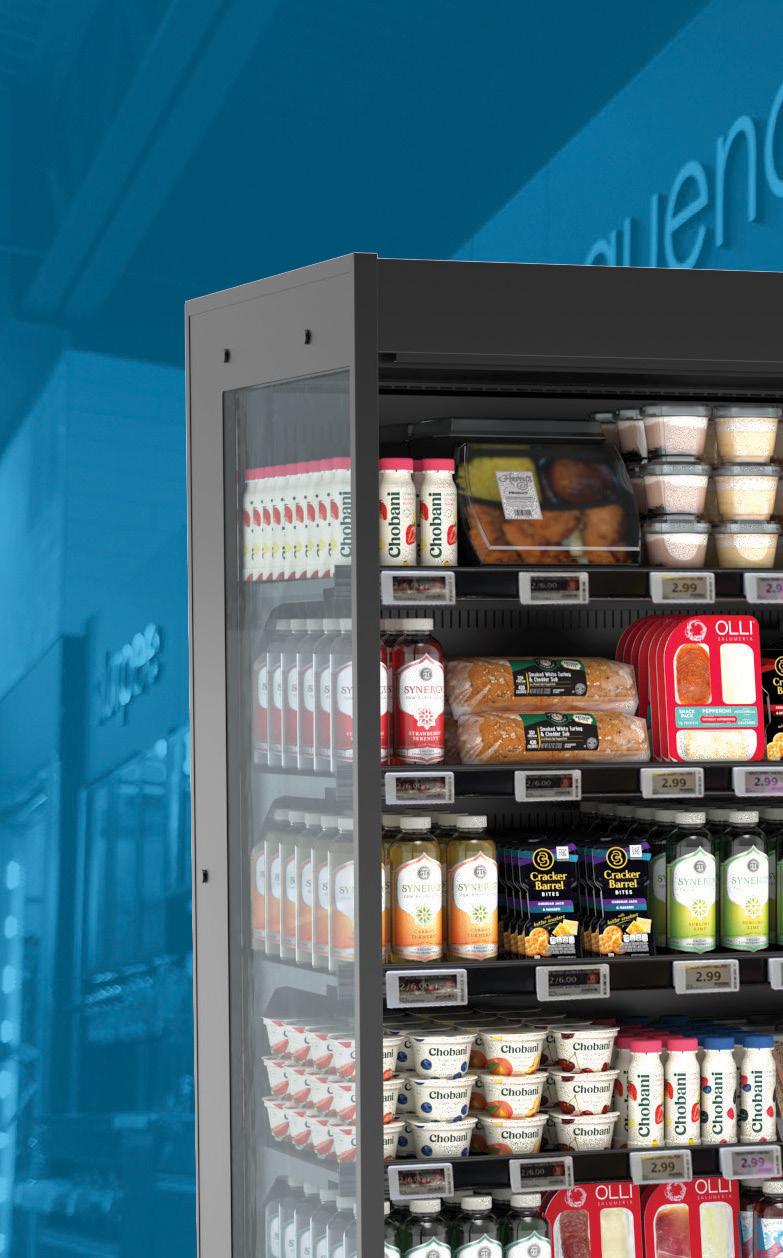

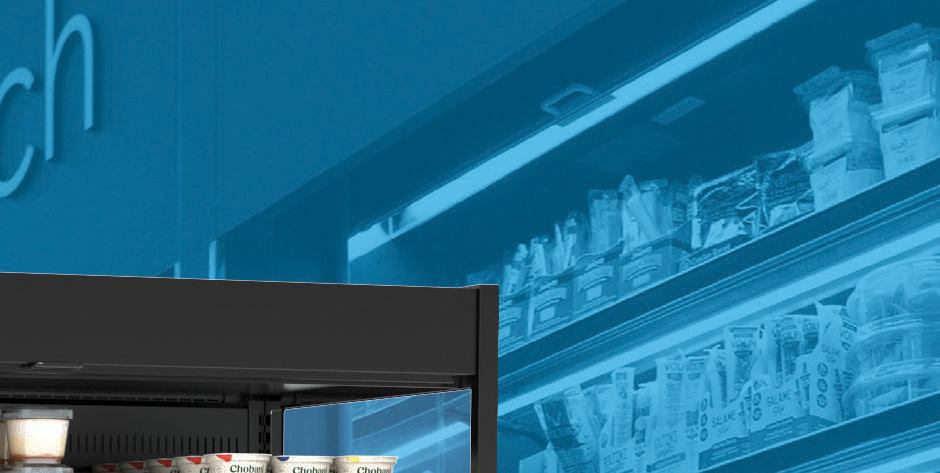















As technology continues to impact the grocery industry, Aperion by Hussmann is helping operators look beyond the hardware with solutions designed to drive ROIs, deliverig better returns more quickly than ever before. Mike Flynn, Vice President and General Manager of Aperion, explains how the company’s electronic shelf labels (ESLs) are unlocking stores’ potential to maximize revenue, reduce operating costs, and enhance customer and employee experience in new and exciting ways.
Progressive Grocer: Retailers are under pressure to deliver stronger ROI from every investment. How does Aperion’s approach to ESLs help grocers achieve measurable returns faster?

Mike Flynn: At Aperion, we believe ESLs aren’t just about cost savings — it’s about unlocking new capabilities. ESLs dramatically improve promotion execution and pricing accuracy — two areas where retailers lose revenue daily. Coresight Research found that 39% of retailers struggle with promotion execution errors. ESLs can help retailers eliminate leaving that lost revenue on the table. By automating price updates and enabling real-time responsiveness, ESLs reduce labor costs, eliminate human error, and allow retailers to adapt instantly to market shifts. We work with our customers to utilize ESLs not just as a replacement of paper tags, but to think about them as a strategic enabler. The labor savings alone can get a retailer to ROI with their ESLs, but you can achieve that even faster when they are integrated with existing digital platforms — e-commerce, loyalty programs, and pricing optimization strategies.
PG: In the past year, your supplier, Hanshow, introduced new ESLs. What makes them a game-changer for grocers?
MF: The solutions that we are bringing to the market represent a major advancement in both design and

functionality. The current ESLs offer greater variety of colors on the display that allow retailers to create visually compelling tag templates and maintain brand consistency at the shelf edge. This helps capture shopper attention and elevate the in-store experience.
Beyond that, they are also 37% thinner than traditional models, making them more adaptable to various fixtures. They include a new SIP chip for improved performance and boast an industry-leading battery life of over 10 years. These enhancements make them one of the most reliable and high-quality ESL solutions available today.
PG: Can you share real-world examples of how retailers are benefiting from Aperion’s ESLs?
MF: Absolutely. We’ve deployed ESLs across a range of retailers — from regional chains to tech-forward independents. One common theme is speed: price updates that used to take hours now happen in minutes. That agility translates into better promotion timing and reduced labor hours.
Retailers also report stronger customer trust due to consistent pricing and clearer shelf communication. In one case, a grocer saw a measurable uptick in loyalty program engagement after integrating ESLs with digital couponing. These are tangible wins that go beyond the shelf.
PG: Looking ahead, what other technologies is Aperion exploring to help grocers stay competitive and efficient?
MF: At Aperion, we’re focused on technologies that combine automation with actionable insights. ESLs are just the beginning. We’re actively exploring smart sensors for temperature monitoring as well as other connected solutions from our parent company, Hussmann, that include energy management systems and predictive maintenance tools.
These solutions help grocers reduce operational costs, prevent equipment failures, and maintain food safety— all while protecting brand reputation. We recently showcased these innovations at GroceryShop, and the response was clear: retailers are actively looking for tools that deliver operational resilience and customer value.
THE FIVE RETAILERS CHOSEN AS SUPER REGIONALS ARE MAKING THE MOST OF THEIR OPPORTUNITIES FOR EXPANSION.
By PG Staff

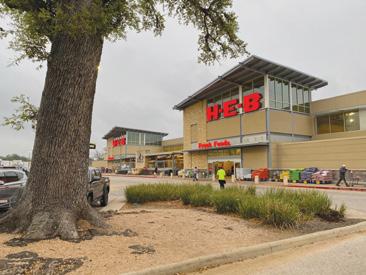
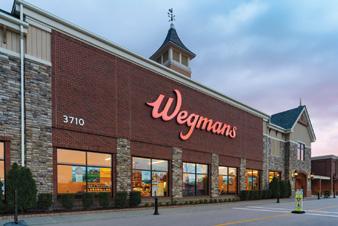

There are many exemplary regional grocery store operators out there, but the ve chosen by Progressive Grocer’s editors to be this year’s Super Regionals have truly outdone themselves when it comes to delivering on their growth plans. One key way some of the following companies have been able to do this is through acquisitions: C&S Wholesale Grocers has recently acquired SpartanNash Co., giving the combined company national reach as a wholesaler as it simultaneously af rms its position as an operator of strong regional retail banners in various parts of the country, while Midwestern operator Schnuck Markets Inc. has revealed its intention to purchase Festival Foods and Hometown Grocers Inc., thereby extending its footprint to Wisconsin.
Even for those not actively acquiring other businesses, expansion is a key part of their strategy going forward. For example, Wegmans Food Markets, born and bred in the Northeast, continues to move into new parts of the country, even as it also seeks white space within its existing operating area to open locations, and iconic Texas grocer H-E-B has boosted its store count in such key markets as Dallas-Fort Worth, Austin and Houston.
Even the seeming exception to this drive for growth, Giant Eagle, turns out to be all about getting bigger and better. Although the Pittsburgh-based retailer has sold its GetGo convenience store chain and spun off its wholesale motor fuel distribution business, it has seized the opportunity to lean into its grocery and pharmacy operations. Not only has it acquired customer prescriptions from nearly 80 Rite-Aid stores that closed this year and has even debuted stand-alone pharmacies of its own, but the grocer has also recently unveiled a new business strategy that’s all about – you guessed it – the retailer’s strategy for growth in the coming years.
Add in a shared passion for innovation and differentiation, and it’s no wonder that the ve retailers mentioned above were selected as PG’s 2025 Super Regionals. Read on to get the full details.
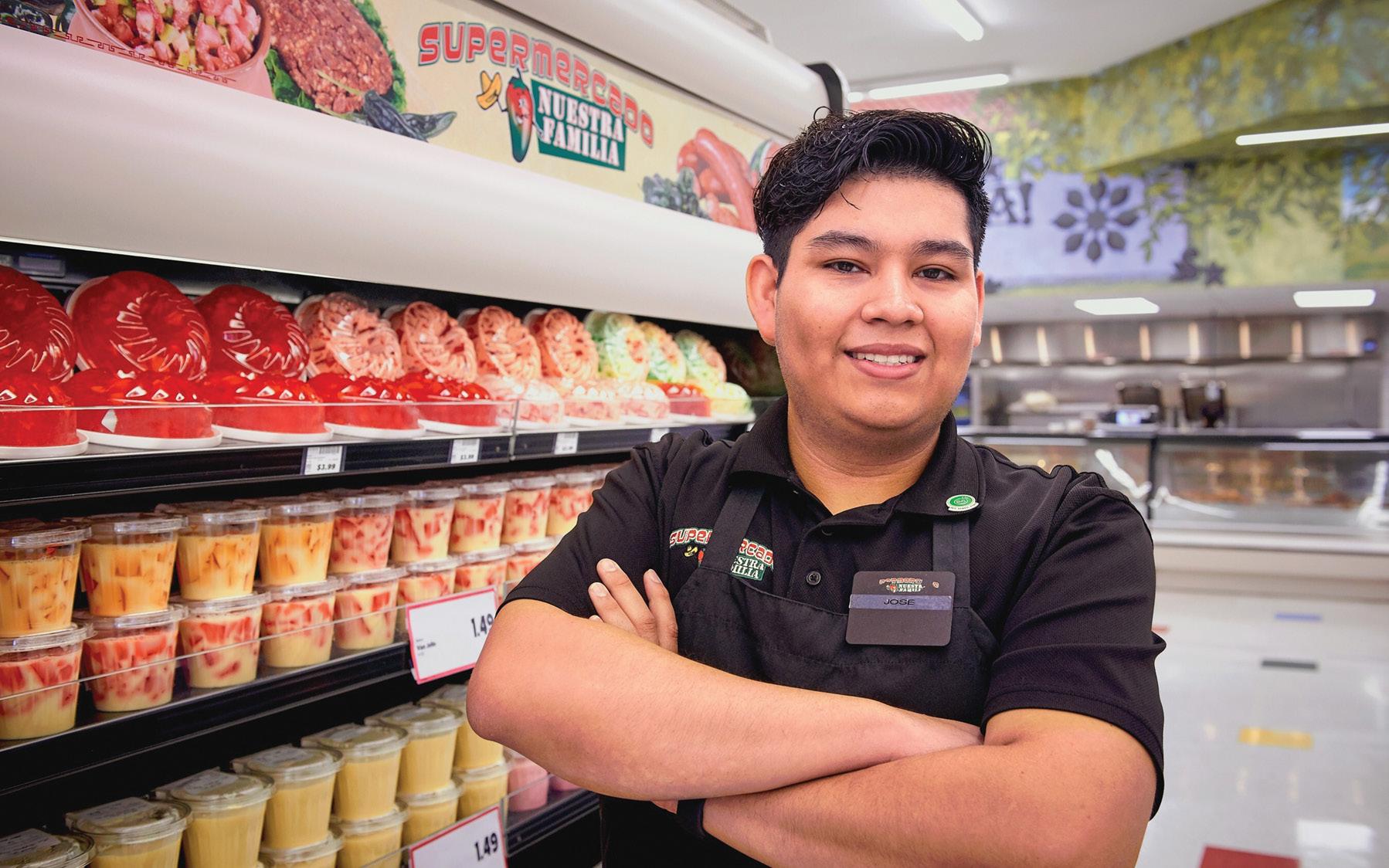
It’s been a time of great transition for these two powerhouse food solutions companies, culminating in C&S’ acquisition of Grand Rapids, Mich.-based SpartanNash in late September for a purchase price of $26.90 per share of SpartanNash common stock in cash, representing total consideration of $1.77 billion, including assumed net debt. The newly combined company now employs more than 30,000 associates and operates nearly 60 complementary distribution centers covering the United States, serving close to 10,000 independent retail locations, in addition to military commissaries and exchanges.
“We are grateful to our associates, customers and partners who have supported us throughout this process,” said SpartanNash President and CEO Tony Sarsam, who is remaining with the combined company as an advisor for a transitional period. “Our combined capabilities will create meaningful new opportunities for our people, customers and shoppers as we continue to deliver the ingredients for a better life.”
Even with its national reach as a wholesaler, however, the combined company’s 200-plus corporate-run grocery stores are de nitely attuned to their respective regional market areas.
HEADQUARTERS: Keene, N.H.
STORE COUNT: 200-plus, primarily under the D&W Fresh Market, Grand Union, Family Fare, Martin’s Super Markets and Piggly Wiggly banners
CEO: Eric Winn
OPERATING AREA: Georgia, Indiana, Iowa, Kentucky, Michigan, Minnesota, Nebraska, New York, North Carolina, North Dakota, Ohio, South Carolina, South Dakota, Vermont and Wisconsin
The chain also offers the convenience of a one-stop shop for other everyday grocery staples.
The newly combined company now employs more than 30,000 associates and operates nearly 60 complementary distribution centers covering the United States.
On the SpartanNash side of operations, for instance, the Supermercado Nuestra Familia banner has recently grown to ve locations in the Midwest, most recently in Topeka, Kan., in a 50,000-square-foot space. Established in 2013, the Hispanic grocery concept features a full-service carnicería, a tortillería, and a cocina (kitchen) with fresh cheeses, creams and handmade favorites, including tamales, enchiladas, beans and rice, alongside an assortment of fresh fruits, vegetables, and dried chiles and spices.
That focus on regional markets is also illustrated by SpartanNash’s recent acquisitions before the transaction with C&S wrapped. Last year, SpartanNash acquired Findlay, Ohio-based Fresh Encounter Inc. (FEI), a 49-store supermarket chain with locations in Ohio, Indiana and Kentucky, and a food distribution customer of SpartanNash for the past 58 years. That deal, which grew SpartanNash’s retail footprint by 33%, was its second retail acquisition of 2024, following the purchase of Metcalfe’s Market, a three-store Wisconsin chain, in April of that year. The Metcalfe’s deal, under which the acquired company’s storefront, branding and core shopper experience remained in place, expanded SpartanNash’s footprint in Wisconsin to seven stores. Also in 2024, SpartanNash revealed its intention to acquire Howell, Mich.-based Markham Enterprises, a three-store chain of c-stores and fuel distributor.
When it wasn’t busy growing its retail reach through acquisitions or opening new stores, SpartanNash showed regional savvy in tailoring promotions to local shoppers’ tastes. For instance, just in time for summer grilling, the company launched its new Brat Shop at all Family Fare, D&W Fresh Market, and Martin’s Super Market locations, offering a limited-time in-store destination devoted to all things bratwurst.

Giant Eagle has had a busy year. Through the high-pro le divestiture of its GetGo Café + Markets business to Alimentation Couche-Tard Inc. in June, as well as the recent spinoff of its wholesale motor fuel distribution business to the Cary Oil Co., the Pittsburgh-based food retailer has created an opportunity to double down on its commitment to pharmacy and grocery.
“For a while now, we have wanted to focus on being the best version of Giant Eagle that we can be,” CEO Bill Artman told Progressive Grocer earlier this year.
“We believe that reinvesting back in our grocery and pharmacies is a great opportunity for us.”
Indeed, store refreshes are in the works as Giant Eagle narrows its retail sights in a shopper-centric way.
“We have hundreds of millions of dollars planned over the next ve years to build and remodel supermarkets,” Artman said.
The grocer has taken advantage of the disruption in the retail pharmacy business by acquiring customer prescriptions from nearly 80 Rite-Aid stores that shuttered this year, reinvesting the capital into those supermarket rebuilds and remodels. Additionally, Giant Eagle has opened stand-alone pharmacies across its footprint, with several such locations in its home state of Pennsylvania moving into former Rite Aid stores.
One of Giant Eagle’s new store investments is set to take place in the downtown Columbus, Ohio, neighborhood of Franklinton, where the company will build a 20,000-square-foot Market District outpost that will be the sole supermarket in the area.
“It’s an honor to be the grocery destination for the downtown and Franklinton communities,” Artman said
HEADQUARTERS: Pittsburgh
STORE COUNT: 200-plus under the Giant Eagle and Market District banners
CEO: Bill Artman
OPERATING AREA: Indiana, Maryland, Ohio, Pennsylvania and West Virginia
of the move. “This is a proud moment for our team in Central Ohio and an important milestone for how we plan to elevate our commitment to this region in the years to come.”
Beyond physical store and pharmacy investments, Giant Eagle has also made big strides this year against its goal to achieve zero waste companywide by 2030. In May, the company announced that it had reached zero-waste status across its nine warehouse and manufacturing sites, effectively implementing environmentally friendly waste-reducing practices across more than 2.7 million square feet in total.
Key programs that have contributed to Giant Eagle’s zero-waste achievement across its warehouse and manufacturing sites include participation in the company’s expansive food rescue efforts and employment of ef cient reuse and recycling processes.
Additionally, Giant Eagle was honored this past June at Progressive Grocer’s GroceryTech Innovation Awards ceremony for its unique and collaborative approach to enhancing customer experience. The company’s winning idea was to host an “idea talk” where more than 100 team members across marketing, IT, supply chain and other departments pitched ideas.
One of the ideas brought forward, an AI-powered recipe generator embedded in the mobile app, went from concept to pilot in just three months. Giant Eagle also developed interactive fuel pump software that transforms a routine gas stop into a digital touchpoint: As they fuel up, customers can buy a car wash, donate to a food bank or access in-store promotions, all from the pump touchscreen.
Finally, last month the retailer introduced the Because It Matters business strategy, which will guide its plan for growth in the coming years. The strategy aims to reaf rm Giant Eagle’s commitment to better everyday value, improved quality and service, and an enhanced overall shopping experience, backed by an investment of more than $100 million that the company is dedicating toward new and brighter stores and more everyday value and quality.































































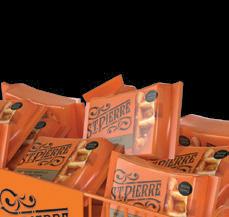




























































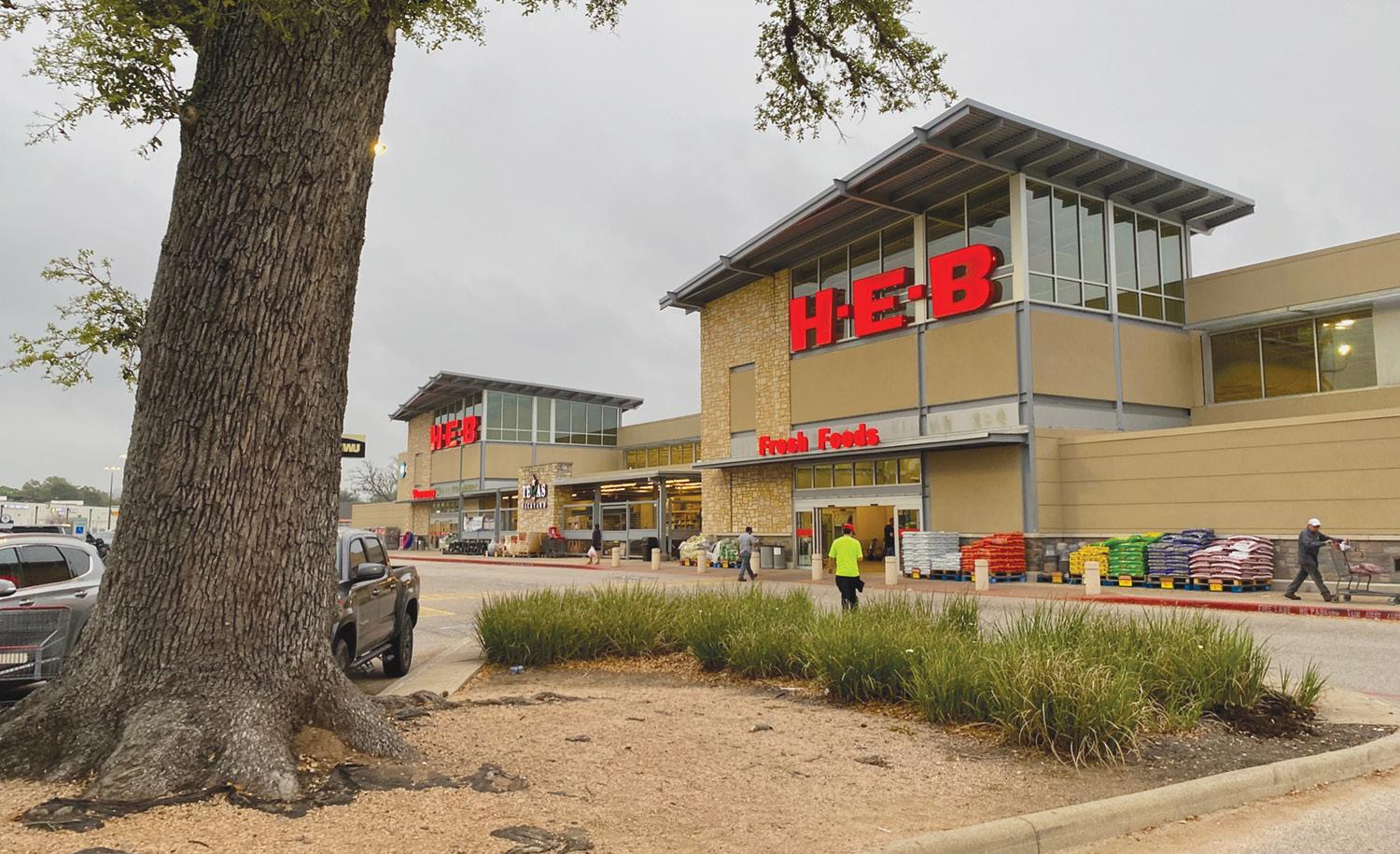
With sales of more than $46 billion, 120-year-old H-E-B serves millions of customers in more than 300 communities throughout Texas and Mexico. In addition to its various banners, the privately owned company operates Favor Delivery, an on-demand delivery platform that serves hundreds of communities throughout Texas.
Known for its innovation, the multiformat retailer recently launched self-service capabilities in its retail media network. The H-E-B retail media team partnered with solution provider Epsilon to offer the new feature to brand partners looking for more exibility. Advertisers can access campaign management through the heb. com website and the My H-E-B app.
HEADQUARTERS: San Antonio, Texas
STORE COUNT: 455-plus under the H-E-B, Joe V’s Smart Shop, Central Market and Mi Tienda banners
CEO: Howard Butt III
OPERATING AREA: Texas, Mexico
coffees, empanadas and pickles to pho, salsas, spices and everything in between. Nonfood submissions have included everything from beauty items, toys, home goods and household necessities to gardening supplies, coolers and more. Over the years, H-E-B has awarded nearly $2.75 million in prize money, complemented by marketing, mentoring and supplemental support.
H-E-B is also known for its Spirit of Giving philosophy, which was exhibited a few months ago, when destructive floods devasted areas across Texas.
H-E-B also launched a robot delivery pilot in Austin, Texas, this year with the help of autonomous-vehicle delivery company Avride. The tech company’s vehicles can carry up to 10 items and have a service radius of approximately 1 mile. H-E-B deliveries are being made through the grocer’s Favor service.
Speaking of Favor, the delivery service introduced a new premium subscription program in 2025. Available on the Favor app, the Favor Gold program offers more bene ts than the basic subscription. Member perks include a monthly $10 off a $50 purchase at H-E-B, unlimited $0 delivery fees, and birthday rewards. Beyond retail, customers can score 15% off local restaurant tabs.
H-E-B is also known for its Spirit of Giving philosophy, which was exhibited a few months ago, when destructive oods devasted areas across Texas. The Butt family, H-E-B and the H.E. Butt Foundation committed $5 million in funding to nonpro ts providing aid and recovery support to communities most in need.
The company supports its local community in other ways as well. For example, it holds the annual H-E-B Quest for Texas Best, a competition created to nd the best Texas-made products. Small businesses compete for a combined $100,000 in cash prizes and the opportunity to feature their product on H-E-B shelves across the state.
In this way, the Texas grocer has discovered more than 1,000 unique products throughout the Lone Star State over the past decade – from cookies,
This year, H-E-B has invested in its own growth, increasing its store count in such key market areas as Dallas-Fort Worth, Austin and Houston. Locations feature amenities and unique departments that H-E-B is known for, such as its Sushiya department, offering handmade sushi selections; the Cooking Connection Kitchen, with live demonstrations and samplings; Texas Backyard, which offers products for gardening and outdoor entertaining; and the popular True Texas BBQ restaurant. To help support expansion efforts throughout Texas, H-E-B opened a new e-commerce ful llment center in Houston. The 100,000-square-foot stand-alone facility supports H-E-B Curbside and Home Delivery orders throughout Houston and surrounding cities. The grocer has plans to open additional facilities across the state to help drive omnichannel growth.






































































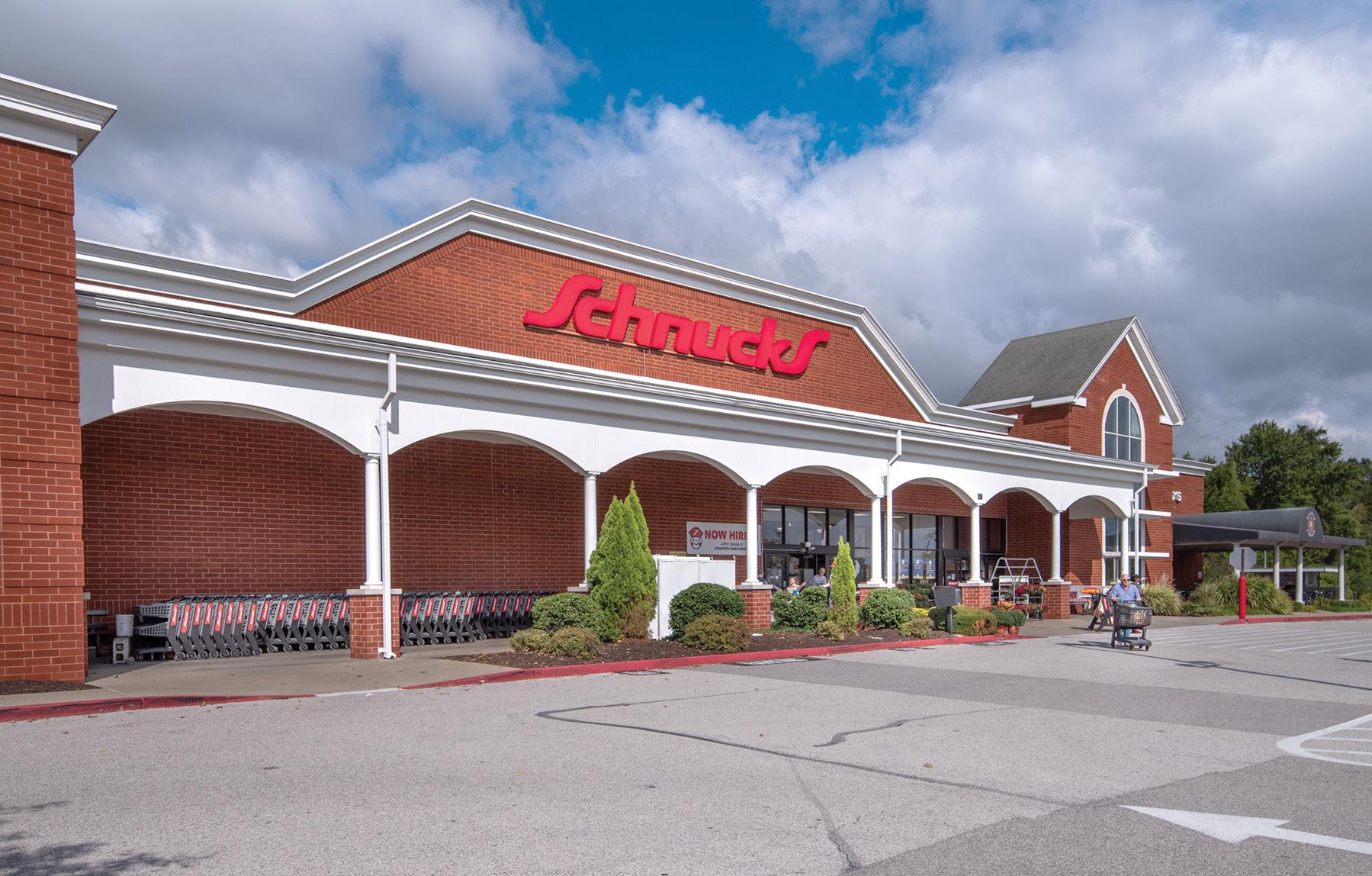
In addition to expanding its footprint, Schnucks was recognized for its tech prowess.
Schnucks is on a mission to rede ne what it means to be a regional grocer. Last month, the privately owned retailer established a new Schnuck family holding company called 1939 Group Inc., with Schnucks Chairman and CEO Todd Schnuck named chairman and CEO of the newly formed group. Subsequently, the company leader revealed that 1939 Group is acquiring fellow regional players Festival Foods and Hometown Grocers Inc. The purchase includes shares held by Mark Skogen, CEO of Festival Foods and Hometown Grocers, as well as the shares in the trust held by associates in their employee stock ownership plan.
Upon completion of the deal, which is anticipated to occur this month, Schnucks gains 51 stores located throughout Wisconsin and welcomes more than 8,000 associates to its 11,000-strong workforce. Schnucks, Festival Foods and Hometown Grocers will operate as separate sister companies with shared support from the 1939 Group. Skogen’s Festival Foods and Hometown Grocers’ existing banners will be maintained.
The name 1939 Group honors the year that family matriarch Anna Donovan Schnuck opened the chain’s rst store, in St. Louis.
In addition to expanding its footprint, Schnucks was recognized this year for its tech-driven progress. Progressive Grocer presented the retailer with a GroceryTech Innovation Award during the publication’s annual GroceryTech event this past June.
Schnucks was recognized for what it means to be a tech-forward regional grocer by integrating arti cial intelligence, robotics and cutting-edge customer engagement tools across the operation, from becoming the rst U.S. grocer to deploy electronic shelf labels chain-wide to launching a fully integrated retail media network.
The retailer has also introduced smart carts that scan, weigh items and even offer real-time digital deals, all while letting customers check out directly from the cart, as well as an autonomous inventory robot that roams store aisles, ensuring that shelves are fully stocked and helping customers nd what they need through the Schnucks Rewards app.
Schnucks is also increasing access to its groceries. The company has partnered with DoorDash to provide consumers with convenient access
HEADQUARTERS: St. Louis
STORE COUNT: 113
CEO: Todd Schnuck
OPERATING AREA: Missouri, Illinois and Indiana to on-demand delivery of groceries and daily essentials. In addition, Schnucks is accepting SNAP/EBT payments on the DoorDash Marketplace.
Further, the Midwest grocer is diversifying its product assortment by supporting local suppliers. This year, it partnered with the Mid-States Minority Supplier Development Council to enable a second cohort of local and diverse-owned businesses to participate in the Schnucks Springboard accelerator program. Those accepted receive on-site business development classes at Schnucks’ St. Louis headquarters as well as networking opportunities. Businesses that meet all requirements, including third-party certication when applicable, also get $5,000 of equity-free funding and an in-store product trial at select Schnucks stores.
Products that were a part of the rst Schnucks Springboard class have already appeared on shelves at select Schnucks stores in the St. Louis area.
Additionally, for the fourth consecutive year, Schnucks was selected as a 2025 U.S. Best Managed Company. Sponsored by Deloitte Private and The Wall Street Journal, the program recognizes outstanding U.S. private companies. In 2025, Schnucks attained Gold Winner status, which is awarded to companies that have received the honor for at least four years.
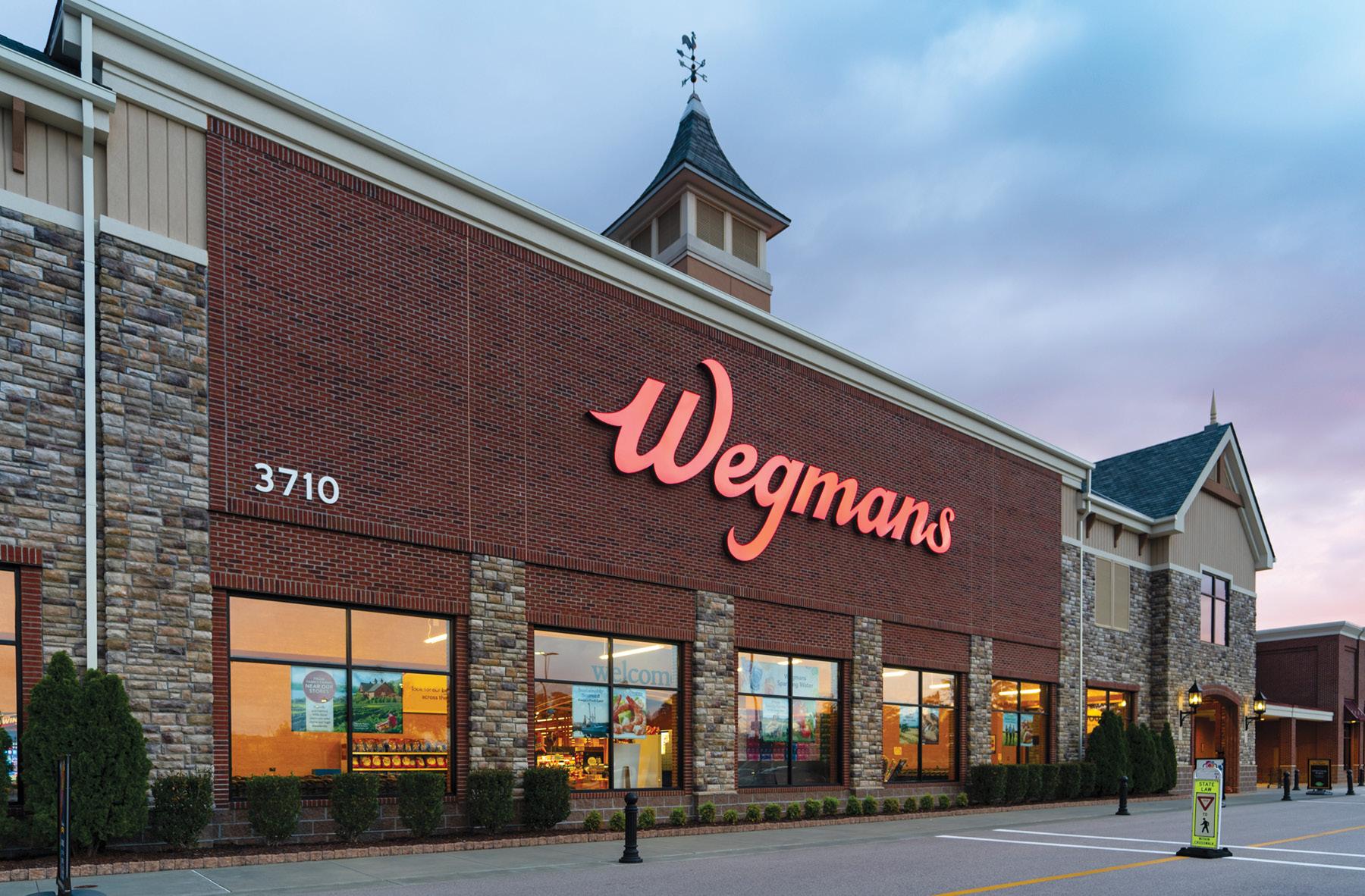
Wegmans has revealed expansion plans in North Carolina, New York and Pennsylvania.
In its 109 years of existence, this grocery retail legend has moved well beyond its original northeastern footprint while also managing to enter new markets within its original operating area. For instance, the company recently celebrated its entry into the Charlotte, N.C., metro area with a late-September groundbreaking on the mixed-use Ballantyne campus for a 110,000-square-foot store, while earlier this year, the retailer opened its rst supermarket on New York’s Long Island, in the town of Lake Grove – a 101,000-square-foot location employing more than 500 associates in full- and part-time roles. Wegmans has also revealed plans to open a store in Cranberry Township, Pa., marking its rst entry into the Pittsburgh region.
Beloved by its shoppers – who have been known to present petitions requesting to have a Wegmans store built in their area – the grocer routinely tops regional and national rankings of the best supermarkets and of businesses that offer superior customer service, but it manages to keep its associates happy as well. For instance, Wegmans recently won recognition as the best large retail workplace on the 2025 Fortune Best Workplaces in Retail List, compiled by Great Place To Work and Fortune magazine. This would, of course, be an honor for any company to achieve even once for its exceptional workplace culture and high employee satisfaction – but 2025 marked Wegmans’10th consecutive year at the top of the list.
HEADQUARTERS: Rochester, N.Y.
STORE COUNT: 114
CEO: Colleen Wegman
OPERATING AREA: New York, Pennsylvania, New Jersey, Virginia, Maryland, Massachusetts, North Carolina, Delaware, and Washington, D.C.
awarding college tuition assistance to more than 1,500 new recipients for the 2025-26 school year. In fact, the company expects to pay out approximately $6 million in tuition assistance to both new and returning scholarship recipients.
Regarding its reputation as a world-class employer, Wegmans President and CEO Colleen Wegman noted: “We understand this is the foundation of why people choose to shop with us, and we are deeply grateful to both our people and our customers for making Wegmans a trusted, happy and welcoming place.” In accordance with its usual tradition, the company celebrated the honor with mini cupcakes – or Clementine tangerines for those who preferred a healthy option –served in every one of its stores.
Beyond its expansion goals and award-winning ability to connect with customers and employees alike, Wegmans is dedicated to deploying cutting-edge tech solutions to make grocery shopping easier.
The company’s care for its workers is shown by such initiatives as the Wegmans Employee Scholarship Program, which is
Beyond its expansion goals and award-winning ability to connect with customers and employees alike, Wegmans is dedicated to deploying cutting-edge tech solutions to make grocery shopping easier. For instance, the grocer has teamed up with Instacart to pilot the latter’s AIpowered Caper Carts in Wegmans stores. Additionally, the food retailer has rolled out a new and improved Wegmans.com website and mobile app, both of which are designed to offer a personalized digital shopping experience for customers. According to the grocer, these digital assets employ new functionality and AI to create a superior omnichannel environment.




PG AND PLACER.AI PRESENT A DATA-DRIVEN DEEP DIVE INTO CONSUMER TRENDS AND OPERATIONAL IMPERATIVES.
By Emily Crowe
At a time of increasing competition across the omnichannel and challenging operational realities, the brick-and-mortar grocery business is at a unique crossroads. Price volatility has lent itself to the rise of value-oriented consumers, while unique product offerings are creating must-have moments for grocers large and small.
Although traditional food retailers are increasingly competing against specialty markets, warehouse clubs and big-box operators for market share, regional and demographic shifts are creating new opportunities across the industry. These factors are converging against an evolving retail landscape, with foot traf c patterns, loyalty insights, store-format impacts and more poised to have a
The food retail industry has faced myriad headwinds in recent years, causing shifting consumer preferences and shopping habits.
lasting effect on each food retail segment, moving into the new year.
As a result, it’s never been more important to take the current pulse of the grocery retail sector.
“Understanding grocery retail performance is critical in 2025 because it clearly reveals a signi cant bifurcation in consumer behavior,” explains R.J. Hottovy, head of analytical research at location analytics rm Placer.ai.
“Af uent shoppers are increasingly visiting fresh-format and specialty grocers, while lower-income consumers are ocking to value-oriented chains to stretch their budgets in a challenging economic environment.”
The food retail industry has faced myriad headwinds in recent years, most recently compounded by consumer price sensitivities and behavior changes connected to in ation and the ever-looming threat of tariffs.
According to Hottovy, persistent in ation and the price gap between dining out and eating at home are the primary macroeconomic factors leading consumers to re-evaluate their food spending routines. “This has prompted a shift in consumer behavior, with shoppers actively seeking value by trading down to discount grocers and preparing more meals at home to manage their budgets,” he says.
While that is the case, other shoppers still are trading up to specialty and fresh-format grocers as they double down on health and wellness. Health-centric retailers Sprouts Farmers Market and Natural Grocers, for example, have consistently outperformed the wider grocery space. Placer.ai found that visits to Sprouts increased 11.9% year over year in the rst quarter of 2025, and that visits to Natural Grocers rose 5.9% – compared with just a 0.8% year-over-year increase for the broader grocery sector.
Overall data paints a clearer picture. Value grocery stores have seen steady foot traf c gains over the past three years, increasing from 8.1% of total visit share in the rst half of 2022 to 9.2% of total visit share in the rst half of 2025, while traditional grocery stores saw visit share decrease by one percentage point during that time. Big-box retailers have seen a slight dip in visit share, from 45% in the rst half of 2022 to 44.4% in the rst half of this year, and fresh-format grocers have seen visit share increase by half a percentage point over the same time period.

A subset of shoppers is gravitating toward specialty and fresh-format grocers.
The competitive environment that these consumer shifts have created for grocers is even more apparent at the geographic and regional levels.
Persistent inflation
By analyzing grocery store trade areas with Esri’s Tapestry Segmentation psychographic dataset, for example, Placer.ai identi ed signi cant differences in urbanization levels across store types. In the rst half of 2025, rural households made up 12.6% of big-box store trade areas, 10.8% of traditional grocer trade areas and 9.1% of value grocer trade areas – but just 1.5% of fresh-format grocer trade areas.
By contrast, households from smaller metro areas and satellite cities accounted for a relatively consistent share across formats – including fresh-format grocers (17.6%), value grocers (19.2%),
traditional grocers (19.0%), and big-box stores (19.8%). The suburban periphery was most strongly represented in fresh-format (51.2%) and traditional (39.4%) grocer trade areas, while the urban periphery comprised nearly half of ethnic grocer trade areas (48.2%) and more than a quarter of value grocer trade areas (27.3%).
Designated market area variations were slightly less pronounced, with year-over-year grocery visit growth in the rst half of 2025 trending highest in the cities of Great Falls, Mont.; Alpena, Mich.; and the Abilene/ Sweetwater, Texas, area. Hottovy attributes this to the notable population shift away from urban centers, and into suburban and rural markets, following the pandemic.
“Given the signi cant population boom these rural areas experienced, it’s not surprising that they are now leading the country in grocery store visit growth,” he notes.
Even more perspective on the current state of physical retail can be gained by taking a closer look at Placer.ai’s data on peak shopping times, which can be a key metric in guiding strategic staf ng and promotional decisions. For the rst half of 2025, the largest share of grocery store visits (28.5%) occurred between the hours of 10 a.m. and 2 p.m., while the fewest visits (9.1%) happened between 6 a.m. and 10 a.m. The hours of 2 p.m. to 6 p.m. accounted for 25.6% of store visits, and 24.3% of visits occurred between 6 p.m. and 11 p.m.
Saturdays saw the biggest share of visits during the week among the entire grocery segment in the rst half of 2025, followed closely by Sundays. Fridays, Mondays and Thursdays had the next-highest number of visits during the week, respectively.
Loyalty visits tell another interesting story, with Placer.ai’s data giving a glimpse into the average share of customers who visited certain retailers at least two times during a given month. Leading the loyalty pack among superstores in the rst half of 2025 was Walmart, with 67.1% loyalty frequency, followed, in order, by Target, Costco Wholesale and Sam’s Club. Market Basket, Food 4 Less and WinCo Foods topped loyalty visits in the value category.

A population shift away from urban centers following the pandemic is changing the concentration of grocery store visits across the United States.
Among traditional food retailers, H-E-B led in loyalty visitors, at 70.6%, followed by Food Lion, Kroger, Safeway and Walmart Neighborhood Market. Customer loyalty to Texas favorite H-E-B is no surprise, as the company was recently named the No. 1 grocery store in the United States by customer data science provider dunnhumby.
The rapidly growing Texas supermarket chain has held the top spot in the dunnhumby Retailer Preference Index for three of the past four years, which dunnhumby attributes to H-E-B’s long-term customer value proposition and superior ability to deliver a combination of better savings, quality, shopping experience and assortment.

This year’s The PG 100, an annual list of the top food and consumables retailers in North America, helps highlight the major grocery brands gaining traction and those losing steam in today’s highly competitive environment. While the top-ranked companies, including Walmart, Amazon, Costco, Kroger and CVS Health, haven’t changed much from last year, the 2025 list does show some notable shifts elsewhere.
The biggest upward climb was achieved by Heritage Grocers Group, which went from No. 90 to No. 75, most likely due to
Walmart led the loyalty pack among superstores in the rst half of 2025.
energized new leadership and expansion efforts. Other ethnic grocers didn’t fare as well: Vallarta Supermarkets dropped four spots to No. 85, Sedano’s Supermarkets slid from No. 93 to No. 97, and 99 Ranch Market fell from No. 85 to No. 88.
Improvements were made by value retailer Dollar General, which climbed from No. 20 to No. 16; Trader Joe’s, which moved from No. 33 to No. 29; Wakefern Food Corp., which jumped four spots, from No. 31 to No. 27; and Northeast Grocery, which rose three positions, from No. 49 to No. 46.
When looking at these gains and losses, a wider store-format impact comes into play. According to Hottovy, small-format urban and fresh-format grocers are experiencing greater visit increases relative to the broader grocery category, driven by consumer demand for convenience and quick shopping trips. Conversely, he says, traditional supermarkets are seeing slower growth, while hybrid models like superstores are facing the most pressure, with at to slightly declining foot traf c.

Many consumers are shifting toward more specialized and convenient grocery experiences over the one-stop-shop model.
“This dynamic indicates a consumer shift toward more specialized and convenient grocery experiences over the one-stop-shop model,” he explains.
With food retailers across the industry in expansion mode, it’s worth taking a deeper look into both real estate intelligence and geographical trends among different grocery segments. Warehouse clubs – including Costco, BJ’s and Sam’s Club, for example – all posted positive year-over-year visit growth in the second quarter of 2025, according to Placer.ai, with expansion strategies driving those overall traf c gains.
Each of those three retailers is expanding beyond its traditional market strongholds, with Sam’s Club slated to open in Arizona, where Costco controlled 67.3% of the combined visit share as of July 2025, and Costco recently opening a store in Texas, where 63% of the combined visit share in July 2025 went to Sam’s Club. BJ’s has also revealed plans to expand into Texas and grow its footprint in several other southern states.
When it comes to the proliferation of Asian grocers, Placer.ai reports that the segment is seeing continued momentum in both established and new markets. H Mart is set to open four new locations in Florida, Texas and California, while 99 Ranch Market recently opened its rst New York City outpost.
Taking a closer look at real estate intelligence as footprints grow, there’s a notable impact of new store openings on existing locations in nearly every market, regardless of banner or brand. In the case of a Kroger store in Huntsville, Ala., that saw a Food City supermarket enter its vicinity this past April, Placer.ai found that foot traf c at the Kroger location markedly declined when the rival chain’s store opened.
“While the entry of a new grocer into a market can cause significant, lasting cannibalization that skews visit share, the landscape eventually tends to level out. Strong, well-run independent local chains often hold their footing over the long term, retaining a loyal visitor base through superior customer service and a unique connection to the local community that larger chains can’t replicate.”
—R.J. Hottovy, Head of Analytical Research, Placer.ai
“As these chains venture beyond their historical strongholds, success will hinge on each operator’s ability to adapt their proven regional strategies to new demographics while securing optimal locations before competitors,” writes Placer.ai Head of Content Shira Petrack.
According to Hottovy, though, this type of cannibalization need not always be a cause for major concern.
“While the entry of a new grocer into a market can cause signicant, lasting cannibalization that skews visit share, the landscape eventually tends to level out,” he explains. “Strong, well-run independent local chains often hold their footing over the long term, retaining a loyal visitor base through superior customer service and a unique connection to the local community that larger chains can’t replicate.”
The anchor-tenant effect is a similarly important factor to consider when it comes to expansion and real estate plans, with grocers perennially driving traf c to surrounding retailers, and vice versa. Case in point:
the June 2024 opening of a Lidl store in the established Paxton Towne Centre shopping district, in Harrisburg, Pa.
For more than a year prior to Lidl’s opening, the shopping center saw largely negative foot traf c trends, but following the ribbon cutting, visits went up and largely stayed that way. While those numbers uctuated over the ensuing months, visit frequency stayed largely positive for the year following Lidl’s opening at the shopping center.
Change is a constant in the ever-evolving grocery industry, and the next several years are likely to bring even more upheaval. One big piece of that puzzle is proving to be a consumer trend toward shorter, more focused grocery trips.
“From 2022 to 2024, consumers adapted to rising food prices by visiting a wider variety of grocery stores, hunting for the best deals. This deal-seeking behavior naturally put downward pressure on both the time spent per visit and the average basket size.”
—R.J. Hottovy, Head of Analytical Research, Placer.ai
“From 2022 to 2024, consumers adapted to rising food prices by visiting a wider variety of grocery stores, hunting for the best deals. This deal-seeking behavior naturally put downward pressure on both the time spent per visit and the average basket size,” Hottovy observes. “However, despite ongoing macroeconomic uncertainty, we’ve seen these trends begin to reverse in 2025 as shoppers consolidate their trips and prioritize the familiar, trusted brands they know.”
This change isn’t stopping shoppers from discretionary treasure hunting, though, as evidenced by strong performance at retailers like Five Below and T.J. Maxx. Indeed, shoppers are still drawn to limited-edition rollouts, product drops and collaborations, translating to traf c gains for food retailers.
When Trader Joe’s released its new pastel-handled mini totes this past April, in-store visits skyrocketed 21.2% compared with a year-to-date Tuesday average.
“As retailers grapple with how to provide value to consumers amidst economic uncertainty, these offerings provide a new incentive for shoppers to visit that isn’t solely focused on price,” writes Elizabeth Lafontaine, director of research at Placer. ai. “Consumers may indeed perceive limited runs to be higher quality, more valuable or worth the extra investment. The concept of manufactured scarcity isn’t new in retail, but it continues to take on new forms as the consumer and industry evolve.”
ahead of the curve in the coming year. One of those areas is what Placer.ai Chief Marketing Of cer Ethan Chernofsky considers adjacent innovation – leaning into easy-to-add items like meal kits or healthand-wellness products that create buzz with shoppers but also offer them value and convenience.
Chernofsky also believes that embracing the idea of BOPIS 2.0 can help grocers deliver a unique mix of delivery, pickup and in-store shopping that creates opportunities to both upsell and surprise and delight customers. Additionally, he notes that, going forward, leaning into retail media readiness is imperative for grocers, since the bene ts are too large to forgo investment.
Finally, Chernofsky says that having a solid understanding of who your customer is, and who all customers are, will make all the difference for grocers looking to stand out and keep up with the pace of change.
“How well do you know your customer? The answer is, even for players that know them very well, they know them within their four walls. They don’t know them beyond,” he explains. “So, things like where else are they shopping – what does that tell me about what I might be lacking? Also knowing all customers – who is being left behind by a grocery player that’s leaving a space

While consumer shifts and extenuating economic forces might be unpredictable, there are several areas where grocers can get
While consumer shifts and extenuating economic forces might be unpredictable, there are several areas where grocers can get ahead of the curve in the coming year.
or creating an opportunity? Who is being impacted by a chain that has to close locations or is shifting their model?”
Chernofsky continues: “I think that heavy and deep element of knowing our customers better as a way of staying ahead of things, being able to make micro decisions, move faster, understand changes in the market more effectively, test out concepts faster, is really, really signi cant.”

RESEARCH SHOWS THAT THE IN-STORE ENVIRONMENT MIGHT BE AN IDEAL TOUCHPOINT TO ENGAGE WITH YOUNGER GENERATIONS.
By the Path to Purchase Institute
As in-store retail media continues to build momentum and brick-and-mortar stores experience a resurgence, CPG brands and retailers might nd the in-store environment an ideal touchpoint to connect with younger generations, who are looking for in-real-life (IRL) experiences, according to members of the commerce marketing community.
E-commerce and the digital shelf have grown in importance in the commerce marketing space, but it’s no secret that the lion’s share of sales continues to come from brick-and-mortar stores — and there’s a variety of reasons that consumers are choosing to shop in person, especially Gen Z and Millennials.
Nearly three in 10 shoppers are visiting grocery, dollar and mass retailers in person more often today than they did a year ago, according to recent Path to Purchase Institute research. When asked to consider their top motivator for visiting physical retail stores, they highlighted the ability to see products in person/interact with them hands-on, avoiding shipping fees, and the option to look for in-store sales and promotions, as well as the immediacy of purchase and instant grati cation.
Ability to see products in person/interact hands-on
Don’t have to pay for shipping
Like to look for in-store sales and promotions
Immediacy of purchase/instant grati cation
Wider range of selection
Easier to navigate/ nd products in-store vs. online
Ease of making returns
The social aspect of going in the store
Enjoy the treasure-hunt experience
Product sampling
Inspiration/discovering new products
Expertise/assistance from store associates
Experiential offerings/interactivity
Easier to identify eco-friendly products
Source:
These primary reasons for preferring instore shopping are unsurprising, as they’ve remained consistent year over year — especially when it comes to Baby Boomers and mature generations.
Further down the list is shopping in-store because of experiential offerings and interactivity. Overall, 11% of survey takers selected this as a top motivator. While that gure may be underwhelming, Gen Z and Millennials were more likely to say that they preferred in-store shopping because of experiential offerings and interactivity.
“Younger shoppers are looking for ‘experiences,’” Andy Howard, senior commerce media director at South eld, Mich.-based Mars United Commerce, tells P2PI. “As the physical store continues to generate 80% or more of sales, retail media networks are responding and creating in-store digital media experiences like checkout screens or end-of-aisle media to reach shoppers at the point of purchase while offering corresponding measurement solutions to brands.”
Further reinforcing this is consumer research conducted by The Harris Poll and Quad earlier this year, which found Gen Z and Millennials are at the forefront of a “return to touch” consumer trend.
Eighty-four percent of Gen Z and Millennial survey takers noted that they value brands that seamlessly blend technology and physical experiences, while 78% said that they appreciate brands that add digital touchpoints to enhance physical shopping rather than replace it.
“It’s younger generations — digital-native generations — that are saying they’re feeling particularly screen-weary and are thus craving IRL experiences and media they can touch and feel,” says Heidi Waldusky, VP of brand marketing at Sussex, Wis.-based marketing experience company Quad.

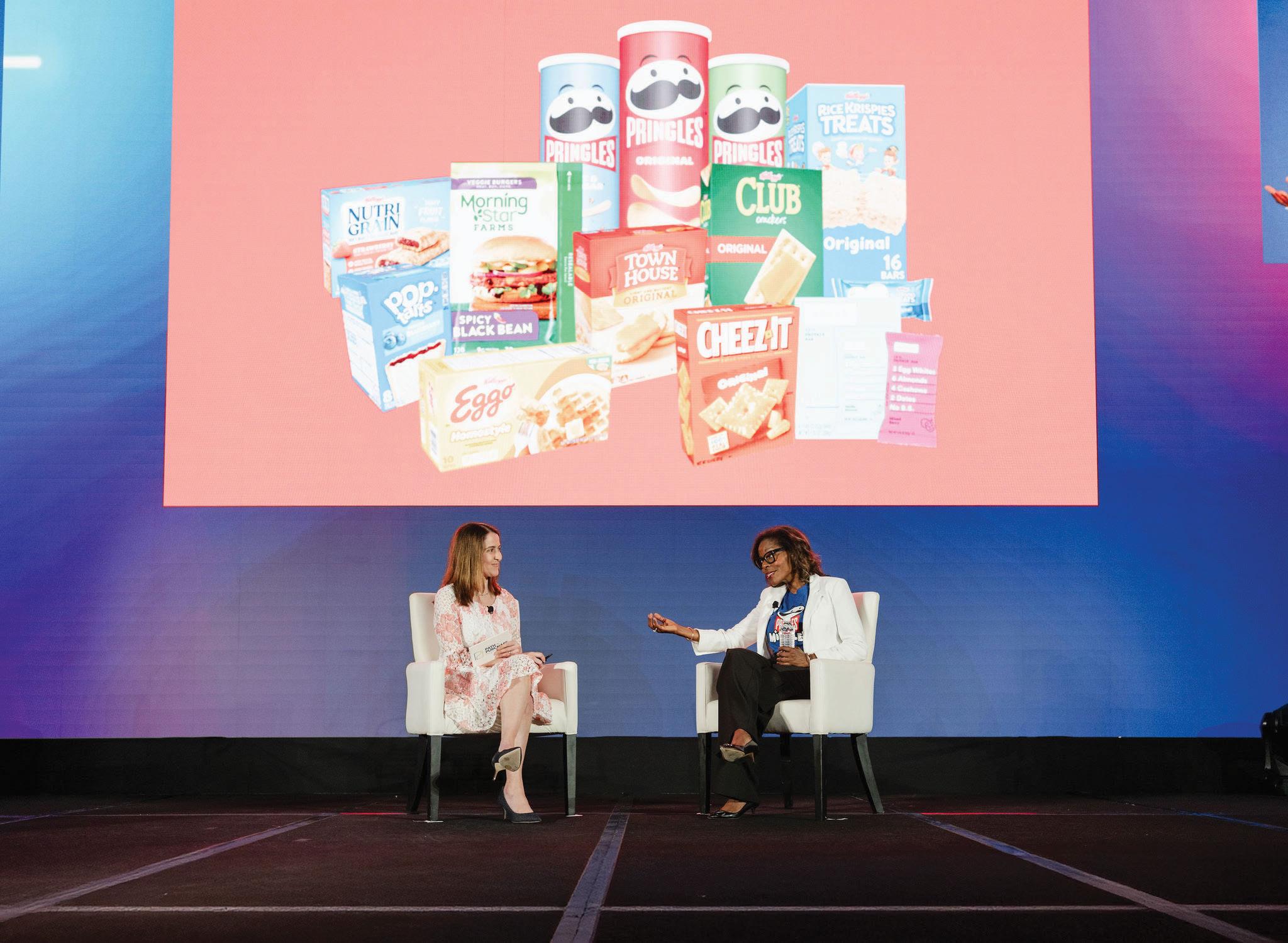
Join the Path to Purchase

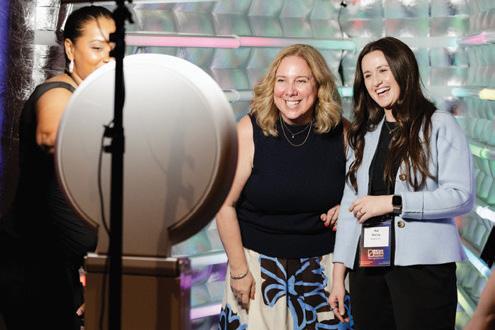
Direct access to brand and retail leaders

Invitations to member-only roundtables & events



Dan Sabanosh, Director of Shopper Marketing


Visibility across our trusted B2B media network
Exclusive trend reports & shopper research


TOBACCO PRODUCTS CAN STILL PLAY A KEY ROLE AT GROCERY
By Mike Duff
lthough many have cut back on or walked away from the category, grocers may want to rethink tobacco category operations, particularly given the gains being made in products that don’t have all of the negative connotations associated with traditional cigarettes. An overall look at the tobacco category at retail in the United States provides a quantitative sense of where gains are occurring.

“The grocery channel can best participate by o ering smoke-free products adult consumers are looking for.”
—Davien Anderson, Altria Group
According to research by Chicago-based market research fi rm Circana, grocery, drug, mass market, military, and select club, dollar, beauty and online retailers for the 52 weeks ending Aug. 10 saw cigarette sales slip 7.9%, while smokeless tobacco saw a 7% gain, led by the spitless tobacco category, including products such as oral pouches, up 40.4%. Cigars were down 0.8%, with all other smokables, including pipe and roll-your-own tobacco, down 6.9%. Electronic smoking devices were up 5.5%, with vaping products gaining 5.1% and, on a much smaller base, vaping accessories up 36.6%. Tobacco accessories gained 1.6%, while lighters dipped 0.5% and matches slid 6.5%.
In a forward look, San Francisco-based Grand View Research forecasts that the global tobacco market, with sales of $886.09 billion in 2023, will reach $1.05 trillion by 2030, growing at a compound annual growth rate (CAGR) of 2.5% from 2024 to 2030, with consumption driven by the developing regions of Asia and Africa. However, Grand View expects North American market sales to grow at a CAGR of 3.4% over the forecast period. As the Circana numbers indicate, smokeless, vape and other products will drive gains.
From the broad view it has on the market, Richmond, Va.-based Altria Group regards the smokeless segment as critical to grocery channel opportunity in the tobacco category.
The businesses operating under Altria auspices include U.S. Smokeless Tobacco Co., John Middleton, Helix Innovations and NJOY, as well as Philip Morris USA. Altria produces Philip Morris brands in the United States and is independent of Philip Morris International.
“Altria’s evolving product portfolio refl ects shifting consumer preferences,” says Altria spokesman Davien Anderson. “The grocery channel can best participate by o ering smokefree products adult consumers are looking for.”
The tobacco category at retail, as it is now, consists of oral products, including pouches that o er nicotine but aren’t made with tobacco, as well as snu and chewing tobacco and tobacco-alternative products. Tobacco alternatives can consist of pouches that incorporate nicotine-infused fibers or gums, along with long-cut dips that have edible greens as their base, in addition to vapes, which have been a key alternative-product segment that has continued to grow. A related product segment, heated tobacco, consists of electronic devices that use

Altria Group is following consumer trends by developing and marketing smokeless-tobacco products.
real tobacco subject to high temperatures to produce an inhalable aerosol without burning.
Anderson notes that Altria, as a longtime tobacco industry leader, is applying its experience and innovation to keep pace with the changing consumer.

“There are 55 million U.S. adult nicotine consumers [aged] 21-plus today, and more than ever they’re seeking smoke-free options that fit their lifestyles,” he observes. “We’re here to meet that demand, making a meaningful impact in harm reduction while delivering products people love. This is a transformative business opportunity. To meet that demand, we’ll deliver compelling, innovative smoke-free products and brands across e-vapor, oral nicotine pouches and heated tobacco.”
Today, Altria’s critical goals are to help transition adult smokers to alternative products while competing vigorously in the developing marketplace, Anderson adds.
Meanwhile, Stamford, Conn.-based Philip Morris International (PMI) is navigating between the past, dominated by cigarette sales, and the present path toward a smokeless future.
“Tobacco and nicotine products are changing for grocery and across all retail channels,” a rms PMI spokesman Samuel Dashiell. “We continue to see that legal-age smokers are increasingly looking to switch to smoke-free products.”
In the grocery channel, changing consumer demand means that shoppers interested in tobacco category products, including alternatives, are willing to consider a range of items.
“Americans like variety, and that’s how they’re looking at consuming their nicotine as better alternatives to cigarettes and other traditional tobacco products have become available,” Dashiell explains. “We believe that roughly 78% – about 35 million – of legal-age nicotine consumers are looking for and open to a multicategory nicotine o ering. Notably, in the grocery channel, nicotine pouches are the only segment with signifi cant growth across the last 12 months and 2022-25 CAGR in both volume and dollars.”
Pouches have become a critical part of the tobacco category, including at PMI, but also for grocers.
“We’re seeing that the dollar growth in pouches is making up for cigarette dollar losses at retail, and this will continue as more smokers switch to these better alternatives,” Dashiell says. “This is good news for grocers. Profit margins on pouches are higher than combustible cigarettes, and they continue to gain ground on driving in-store sales. Therefore, to maximize grocers’ sales and profits, it is crucial to align the backbar with the evolving market, spotlighting smokefree products for legal-age nicotine consumers.”
IQOS, a heated-tobacco product, uses tobacco to produce an inhalable aerosol and does so without burning.
According to Dashiell, consumers are looking at tobacco and related products in new ways, which creates opportunity, but also requires watching consumption trends carefully. As such, the company has been expanding the rollout of its IQOS heated-tobacco product (HTP).
“Better alternatives to traditional cigarettes and other tobacco products, like nicotine pouches and [HTPs], are meeting legal-age smokers where they are and providing them with better experiences,” he says. “As these categories continue to cannibalize traditional tobacco product categories, innovation within categories continues to better meet the various and evolving preferences of legal-age nicotine consumers. Because of this, smoke-free products have cemented their staying power in the nicotine space. For example, in 2014 we launched our fl agship HTP, IQOS, in
“We’re seeing that the dollar growth in pouches is making up for cigarette dollar losses at retail, and this will continue as more smokers switch to these better alternatives. This is good news for grocers. Profit margins on pouches are higher than combustible cigarettes, and they continue to gain ground on driving in-store sales.”
—Samuel Dashiell, Philip Morris International
Oral pouches can satisfy nicotine consumers without burning, even where use of more traditional products isn’t allowed.

Japan and Italy, and in less than a decade, its net revenues overtook our leading cigarette brand, Marlboro, overseas, and we’re excited about its potential to accelerate switching for America’s legal-age smokers as we continue its rollout in the U.S. Similarly, nicotine pouches are expected to continue as the fastest-growing segment in tobacco. For example, our nicotine pouch, ZYN, is one of the fastest-growing brands in retail.”

The tobacco category can be a complicated one to navigate, however, with regulation on local and federal levels creating compliance challenges.
Dashiell asserts that even without local rules, the U.S. Food and Drug Administration has made working within the regulations a di cult prospect.
“Unfortunately, grocers face many challenges to maximizing the opportunities o ered by smoke-free products, due in part to the FDA’s past ine ciencies and loopholes, which failed to establish a robust, innovative market for authorized smoke-free products,” he contends. “By statute, FDA is required to review and make a decision on premarket tobacco product applications within 180 days of receiving them. However, the agency continues to drag its feet, with many applications taking several years to receive a decision. Therefore, a properly regulated market with FDA-authorized products is only achievable if the FDA fulfi lls its responsibilities, acts transparently and authorizes scientifi cally substantiated smoke-free alternatives in a timely manner.”
“Being knowledgeable on smoke-free alternatives will help guide legal-age smokers to find the product that works for them, increasing profitability for grocers.”
—Samuel Dashiell, Philip Morris International
However, Dashiell also cites reports suggesting that FDA might fast-track reviews of nicotine pouches by the end of the year.
“A project of this nature could be a step in the right direction, and we encourage e orts toward a workable and timely review for all smoke-free products that are a better choice for legal-age adults who would otherwise continue using traditional tobacco products, including combustible cigarettes,” he says.
Altria similarly sees simplifying the regulatory regime, where appropriate, as a positive. “We … urge FDA to accelerate and streamline its regulatory review process to ensure timely access to reduced-harm products,” Anderson says.
With the number of di erent products available to consumers, from vapes to pouches that contain nicotine-infused fibers or other substrates, clarity is an important element in carrying tobacco-category merchandise. Today, the reality is that consumers need information that they can trust to make informed decisions about tobacco and related alternatives. Therefore, anyone selling such products is likely better o providing consumers with convenient product information while also ensuring that these products are sold to the right customers.
“Being knowledgeable on smoke-free alternatives will help guide legal-age smokers to fi nd the product that works for them, increasing profitability for grocers,” Dashiell observes. “Critically, ensuring smoke-free products are only sold to those aged 21 and over will help
ensure a legal, regulated market for new smoke-free categories. Not only is it the law, but doing so also enables manufacturers to supply FDAauthorized products that are better for both grocers’ business and legal-age adult smokers while also protecting grocers from civil money penalties and other factors that can harm or even end certain businesses.”
He adds that going forward, grocers should not only make legal-age traditional tobacco shoppers who are increasingly switching to smoke-free products a point of focus, but also non-cigarette consumers of nicotine products who have been entering the category via the more recently developed alternatives.
It’s important to consider that cigarettes still are core to the tobacco business, and that means responding to how the economic environment weighs on smokers.
“Last quarter, Altria noticed in ation has outpaced wage growth, especially among low-income consumers, driving growth in the discount segment,” notes Davien Anderson, a spokesman at Richmond, Va.-based Altria Group. “In response to macroeconomic pressures on consumers, Altria expanded its discount brand Basic into 30,000 targeted stores.”

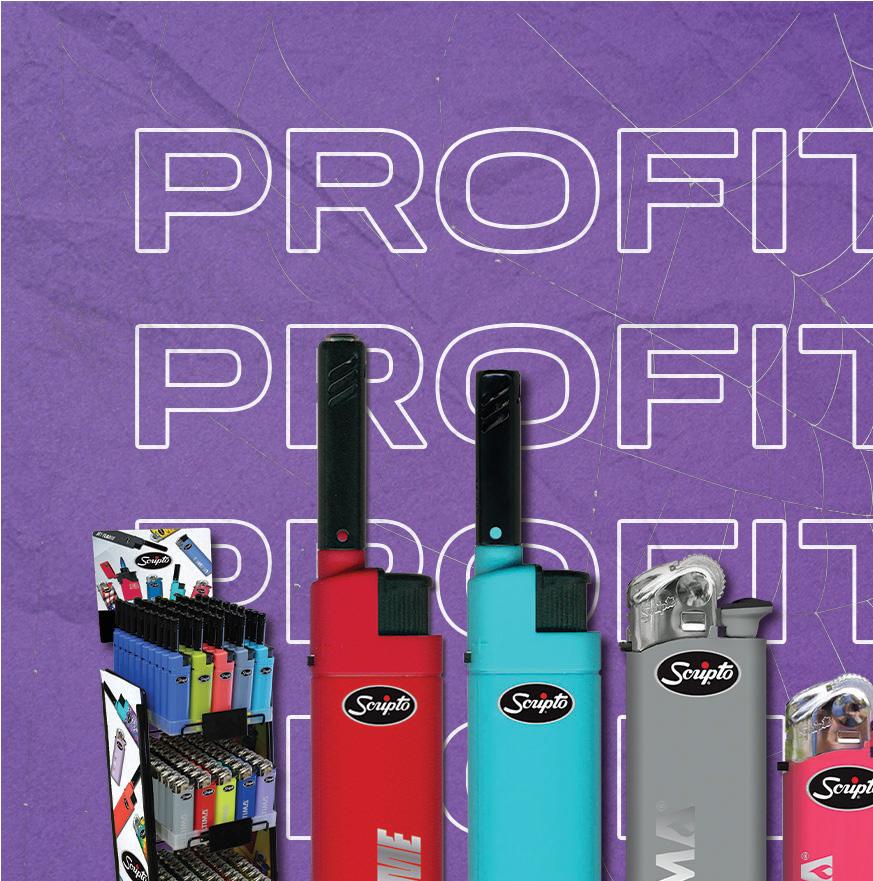



“As innovation continues across smoke-free categories to meet the various and evolving preferences of legal-age nicotine consumers, these products will continue to garner traditional tobacco consumers and become the leading categories,” Dashiell says. “Similarly, regulations have also begun to align with these projections, to the benefit of both legal-age nicotine consumers and retailers.”
Even as the tobacco business itself has changed, so has the market for what were once called cigarette lighters – a segment that has branched out to include products that suit cigar smokers, camping enthusiasts and backyard barbecue afi cionados as well.
Grocers that decide to build a business in the tobacco category as it exists today have the prospect of also reinvigorating their accessories businesses, including lighters.
Ontario, Calif.-based Calico Brands, which produces a range of lighters, has developed specialty products to meet the needs



of the evolving marketplace. Recently, Calico introduced a product developed as a home decor accessory under its foremost brand, Scripto, although the item can function for most ignition needs. The Scripto Mini Candle Lighter features a refi llable tank, an extended nozzle for safer lighting, an adult-friendly push-button ignition and an adjustable fl ame. The company also continues to produce multipurpose lighters and to update designs on existing products, including adding new color palettes, to make them more attractive in displays and more appealing as impulse purchases.
Impulse and novelty are critical to the accessories business and so require visibility in display. Manufacturers continue to use color and form to attract consumers, and they sometimes go a step further. For example, Bic has o ered consumers Martha Stewart and Snoop Dogg designs in its EZ Reach Lighter lineup. For its part, Zippo teamed up with streetwear designer SKIDZ on a capsule collection featuring apparel and a lighter, using its partner’s graphic trademark based on a “Slippery When Wet” tra c sign.
By Bridget Goldschmidt
Like other categories in the deli section and beyond, cheese is evolving to meet customer needs. This can be seen in the category’s willingness to expand its offerings to appeal not only to multicultural consumers, but also to mainstream shoppers interested in exploring the avors of other cuisines.
One company doing just that is Chicagobased V&V Supremo, some of whose Mexicaninspired cheese products recently won big in the 2025 World Dairy Expo Championship Contest, the largest dairy competition of its kind in North America, with three of the company’s products earning prizes.
“These awards are a testament to our dedication to producing cheeses that honor our Mexican heritage while meeting the highest standards of quality,” noted Gilberto Villaseñor II, V&V’s chief visionary of cer, in early September. “We are proud to share these award-winning avors with families across the country.”

Additionally, in honor of National Quesadilla Day on Sept. 25, V&V — whose Queso Chihuahua is the No. 2 top-selling shredded cheese in the United States — invited consumers to mark the occasion with creative recipes and exclusive savings. Shoppers could save $2 on Queso Chihuahua with an Instacart coupon available Sept. 25–26. The company invented the food observance back in 2020 “to spotlight the versatility, universal appeal and growing popularity of quesadillas.”
Since seasonal avors and limited-time items are big across the board as well, cheese makers have stepped up with such products as a pumpkin spice variety of The Laughing Cow spreadable cheese wedges, featuring the warm avors of cinnamon and pumpkin.
“Pumpkin Spice is the avor of fall, and we’re thrilled to bring it to life in a way only The Laughing Cow can,” said Jessica Dillon, senior brand director of The Laughing Cow, part of the Chicagobased Bel Brands USA family, last month. “This limited-edition variety delivers all the cozy, craveable notes of the season, combined with our signature creamy texture. It’s a fun, avorful twist that will instantly elevate any snack or spread all season long.”

In the specialty segment, Rogue Creamery has introduced its 2025 vintage of Rogue River Blue cheese, the southern Oregon artisan cheesemaker’s seasonal specialty, with avors re ecting the unique terroir of its region.
“Rogue River Blue is more than a cheese: It conveys a sense of place,” noted Marguerite Merritt, senior brand manager of Central Point, Ore.-based Rogue Creamery, at the time of the 2025 rollout in September. “It speaks to the landscape, the cows and the passionate cheesemakers that – all together – make this iconic cheese possible each year.”
In its early release, the cheese’s pro le is bright, savory and delicately fruity, but as it matures, its texture becomes creamier and its avors deepen into notes of pear brandy, g and umami.
Another trend in uencing the cheese category is the proliferation of plant-based options. To that end, Fair eld, N.J.-based Schuman Cheese, a fourth-generation maker of specialty cheese, has formed a joint venture with Bellevue, Wash.-based GOOD PLANeT Foods to create GPV Foods LLC. The partnership brings together Schuman’s plan-based Vevan cheese brand and GOOD PLANeT’s retail business under one entity.
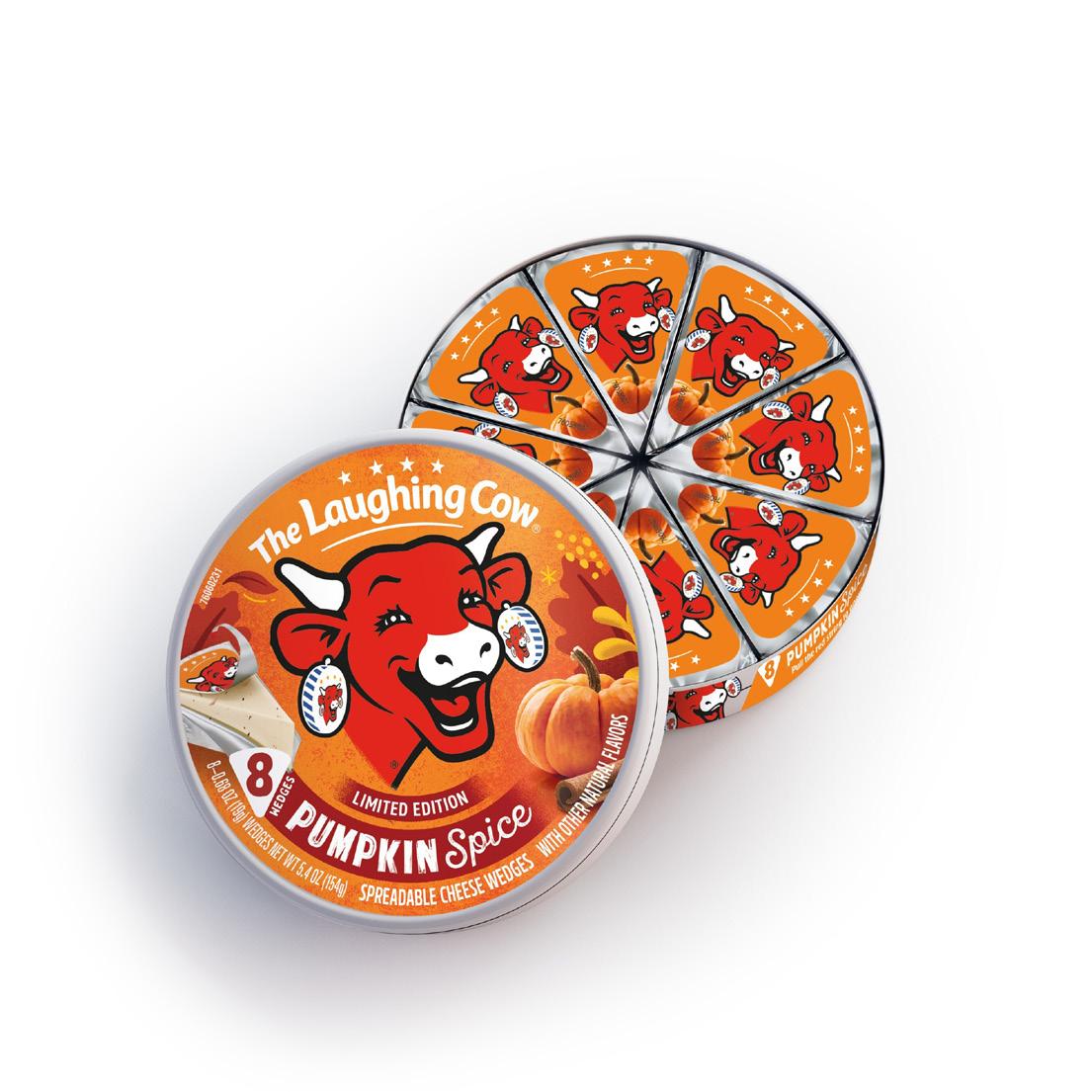
“This partnership strengthens our manufacturing capabilities, expands our plant-based portfolio and positions us for rapid growth in a category we strongly believe in,” observed Keith Schuman, plant-based business unit lead at Schuman Cheese, this past August. “Together, we can scale faster, serve our customers better and set a new standard for what plantbased cheese can deliver.”

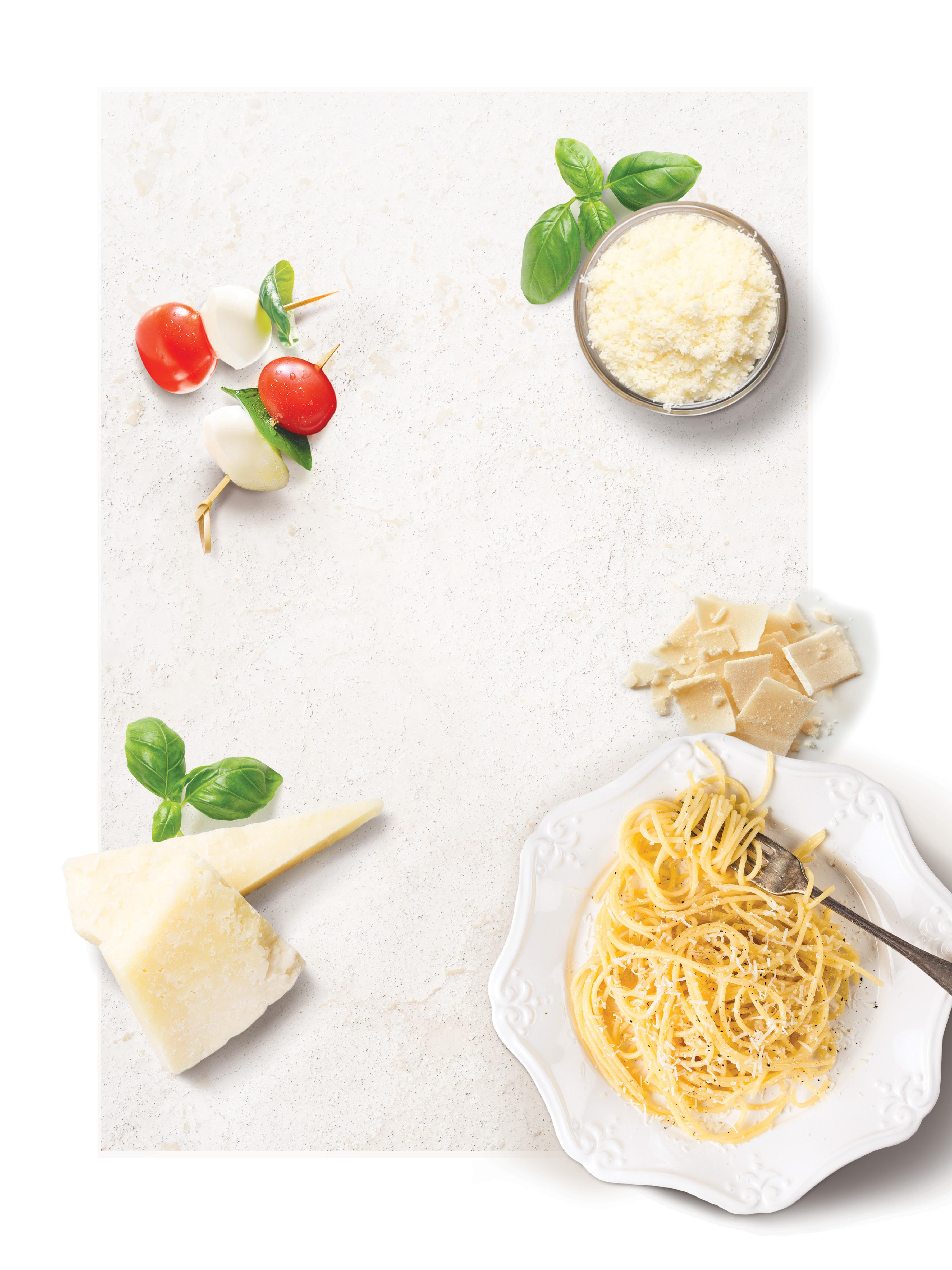
Bonne Maman, the No. 1 premium preserves brand in the United States, has now come out with easy-to-spread Concord Grape Fruit Spread, featuring generous amounts of premium Concord grapes in an elevated take on a perennial pantry staple. True to the brand’s promise, Concord Grape Fruit Spread is made with simple, recognizable ingredients and no high-fructose corn syrup or arti cial avors or colors. The product is also Non-GMO Project Veri ed, OU Kosher and gluten-free. Packaged in Bonne Maman’s classic 13-ounce embossed-glass jar, the spread retails for a suggested $6.99. https://bonnemaman.us/
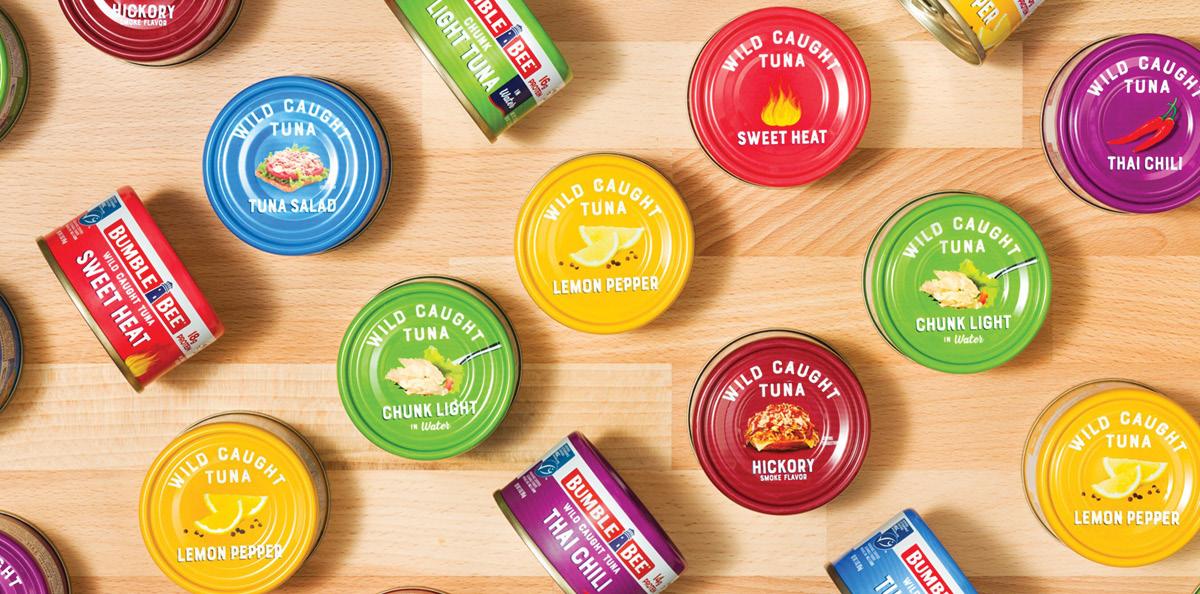
Bumble Bee Seafoods aims to disrupt the shelf-stable tuna aisle with Bumble Bee Snackers single-serve cans in a variety of bold avors, including zesty Lemon Pepper, bold and savory Hickory Smoke, tastebud-tingling Sweet Heat, spicy Thai Chili and nostalgic fan-favorite Tuna Salad, along with classic plain Chunk Light Tuna. All of the avors are premixed and don’t require any messy draining, making them appropriate as convenient snacks on the go. The wild-caught tuna can be eaten straight from the can, with crackers or veggies, or as part of a salad, sandwich or wrap. A single-serve 3-ounce can has an affordable average retail price of just $1.39. As for why this latest offering is in a can rather than a pouch, Bumble Bee is listening to consumers, who prefer a can because they can get to all of the tuna more easily, catch any spills, and use the can as a bowl all by itself. As a bonus, Bumble Bee Snackers’ compact size makes them easy to stack in the pantry and see what’s on hand for grab-and-go snacking, and the 3-ounce size offers 20% more tuna than is offered in a pouch, making the product a better value. https://www.bumblebee.com/
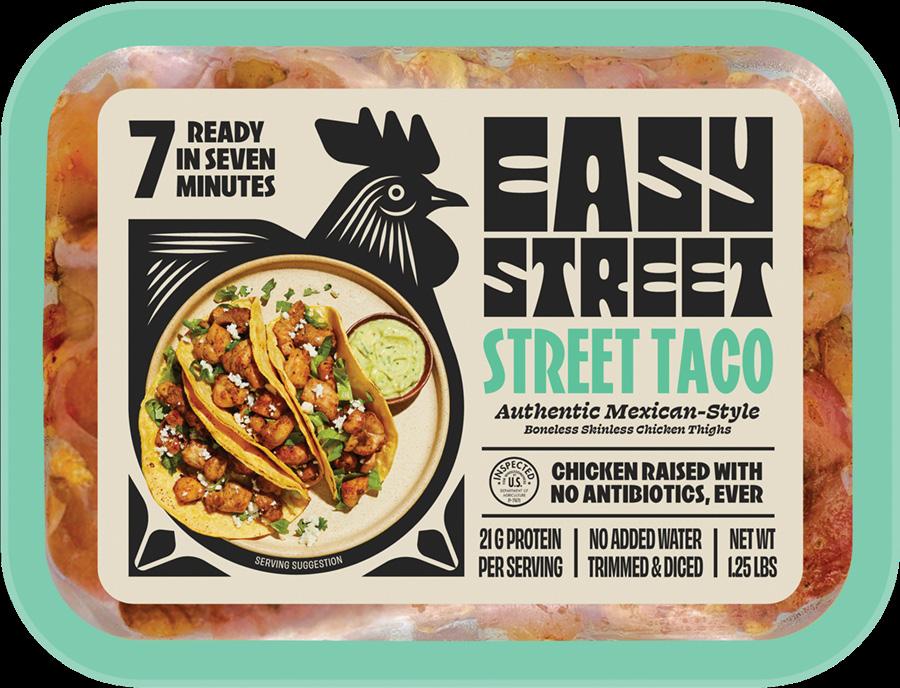


Venerable salsa and sauce brand La Victoria has now unveiled four fresh culinary creations that build upon its century-long legacy of avor. These latest products are a line of topping sauces in 9-ounce squeeze bottles, available in Chipotle, Fiery Jalapeño, and Sweet & Spicy varieties, along with a 15.5-ounce jar of Verde Habanero Salsa, a bold combination of tomatillos, roasted onions and habanero peppers. Inspired by Mexican cuisine, the four avor pro les are crafted to bring heat and depth to everyday meals. Expanding the boundaries of the traditional taco sauce category, the products invite consumers to explore novel avor pairings, bringing fresh inspiration to home-cooked meals. The topping sauces and jarred salsa retail for a suggested retail price range of $3.49$3.99. La Victoria is a brand of MegaMex Foods, a company founded by Herdez del Fuerte and Hormel Foods. https://www.salsas.com/la-victoria/; https://www.megamexfoods.com/

Easy Street, a street-food-inspired, avor-forward line of fresh, pre-trimmed, pre-diced, dry-seasoned chicken, has arrived on grocery shelves. Delivering big taste with zero prep – home chefs can take it from pack to pan to plate in seven minutes or less – the product line comes in Street Taco, Korean BBQ and Rotisserie varieties. Unlike competitors that rely on wet marinades or added oils, Easy Street’s dry-seasoned chicken uses no preservatives or food dyes. It’s also made with no antibiotics ever, using naturally portioned, prediced pieces for fast and consistent cooking on griddles, stovetops and more. The brand is positioned to resonate with busy parents, young professionals, and anyone seeking protein-rich, better-for-you options that don’t require cleanup or planning. A 1.25-pound package of any variety retails for a suggested $5.99. Founded in 2025 by Holly Poultry Inc. CEO Zach Fine, Easy Street is part of One Fine Family, a Baltimore-based food company focused on bringing restaurant-quality poultry to everyday home kitchens. https://easystreetmeals.com/; https://www.hollypoultry.com/
Bridget Goldschmidt
This past Sept. 8, Azalea Fresh Market, a rst-of-its-kind municipal grocery store in downtown Atlanta, made its of cial debut in the historic Olympia Building on 25 Peachtree Street, welcoming 728 customers on its opening day and bringing in several thousand dollars in revenue. The store is the result of a collaborative effort among the city of Atlanta, economic development agency Invest Atlanta, Savi Provisions, the Independent Grocers Alliance (IGA), and community members who identi ed an urgent need for more affordable, fresh and healthy food options in the metro area, where 14% of people are experiencing food insecurity.
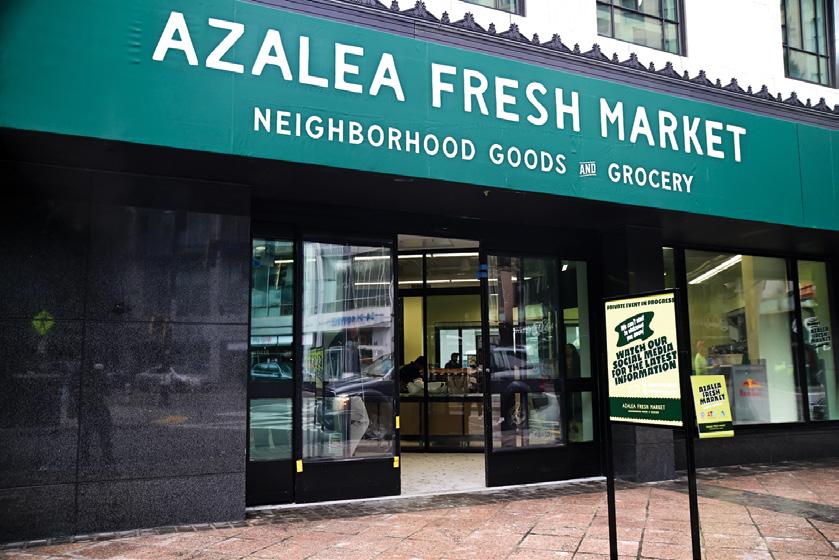

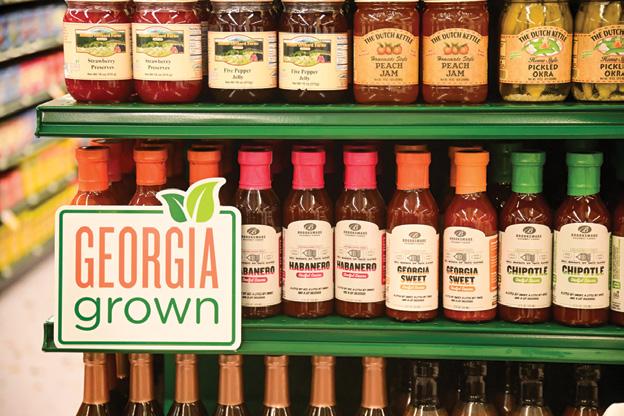
“If area residents are leaving downtown to purchase food, it signals a clear market gap in the local economy,” notes Dr. Eloisa Klementich, president and CEO of Invest Atlanta. “The question then becomes: How can we partner with a local food retail entrepreneur to strategically ll this gap?”
Paul Nair, owner/operator of Azalea Fresh Market and founder and CEO of Atlanta-based Savi Provisions, which currently has more than 20 stores in Georgia and North Carolina, is providing that food retail know-how, along with Chicago-based IGA.
“The entire process, from lease negotiations, nancing opportunities with the city of Atlanta, building renovations and equipment installation, took a bit less than a year,” recounts Jimmy Wright, IGA retail support specialist. “As with any remodeling project, there were issues with converting the building, which previously housed a drug store, into a full-service food store. The store has two oors and an escalator and elevators, so navigating what products went on the lower level and upper level to offer the best customer experience [was a] challenge. There was very little refrigeration that could be used from the previous retailer in the new store, so installing new equipment and converting the upper level of the store into a food court with seating took quite a bit of effort and resources. The project was very fortunate to have experienced architects, store engineers, contractors and installation companies that really worked hard to bring the project to fruition.”
Asked about the store’s particular amenities, Wright explains: “The upper-level food court area will really serve as a third place for the local residents, but especially for the Georgia State University students in the area. An abundance of seating and a really great view of downtown Atlanta will make it a wonderful experience for those who would like to enjoy a meal, visit with friends or study for the next class. Azalea Fresh Market will really serve as a gathering place for downtown Atlanta.”
The new store is just the opening salvo of “a revitalization process” in its surrounding community, he believes, adding, “Azalea will provide jobs for local residents, and the company will also serve as a leader in the downtown area, engaging with other local businesses in the area and with the city of Atlanta.”
From the looks of things, that revitalization is already spreading to other neighborhoods.
“A second Azaela Fresh Market is currently in development in southwest Atlanta on Campbellton Road SW,” says Klementich. “Developing brand recognition while tailoring the store to meet community-speci c preferences is a vital component of the long-term strategy for the success of this public-private partnership. … [C]ontinuity will be maintained in the store’s key design elements like signage, locally sourced fresh produce and the personal touch provided by market team members. … We are not here to replace the private market, but rather to demonstrate the need that exists. In other words, our role is to address an unmet need.”

Bridget Goldschmidt Managing Editor bgoldschmidt@ensembleiq.com









